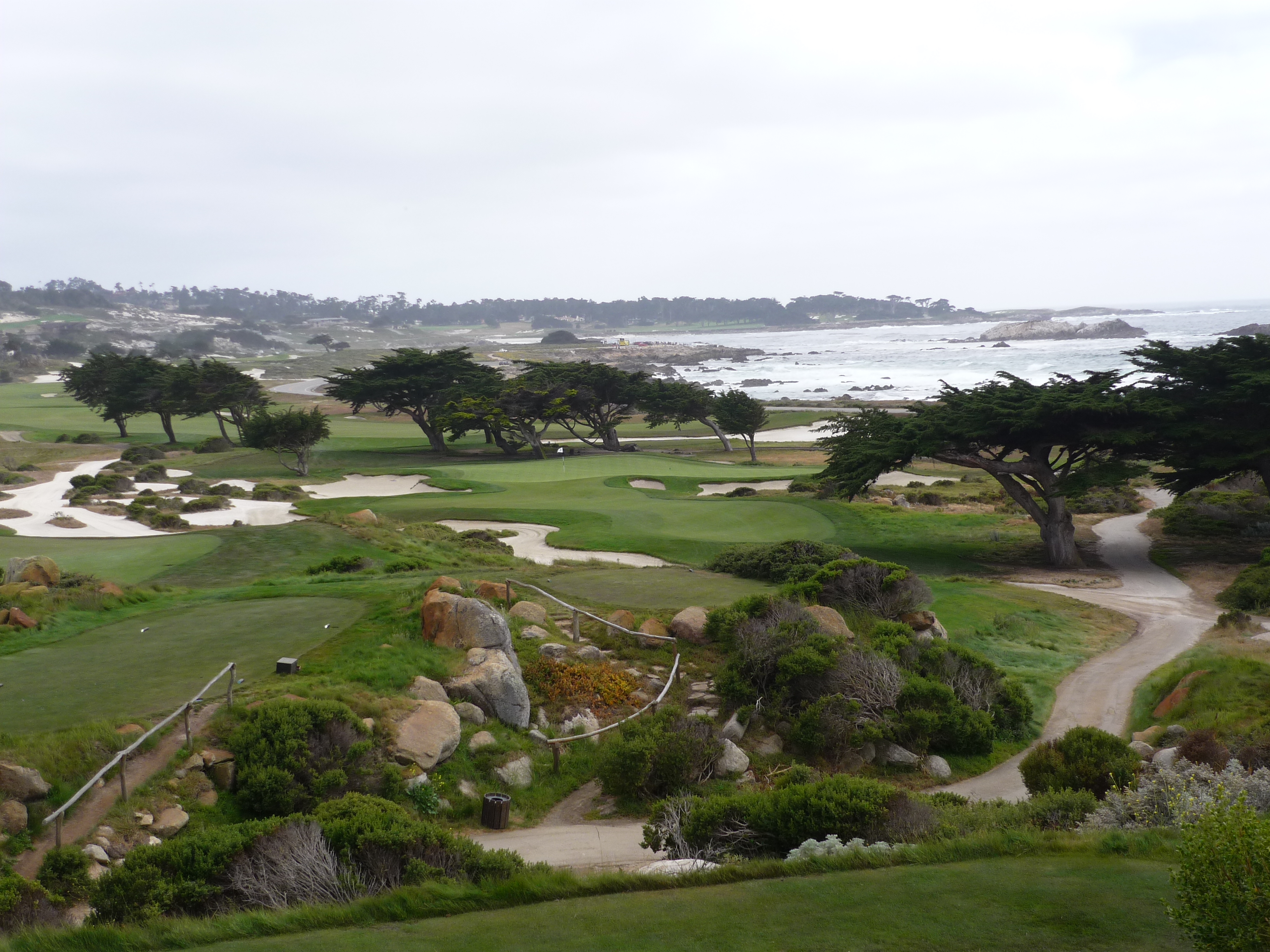
Monterey Peninsula Country Club (Shore) – Played June 2016
- Rankings: Golf Digest #66, Golf Magazine #69
- Location: 3000 Club Road, Pebble Beach, California
- Year: 1960
- Original Architects: Robert Baldock & Jack Neville
- Additional Work By: Mike Strantz
- Course Access: Private
- Walking Rules: Carts & Caddies Available
Score Card Information:
- Gold: 6,873 yards, Par 72, 74.3 Rating/133 Slope
- Black: 6,478 yards, Par 72, 72.2 Rating/130 Slope
- Blue: 5,987 yards, Par 72, 69.8 Rating/126 Slope
The Shore Course at Monterey Peninsula Country Club would end up being the last Top 100 course on the trip. I honestly couldn’t think of a better course to end on. The facility is awesome with a great setting right on the Pacific as you will see in the pictures. It is an old facility, but it is in great shape. One reflection of the historic vibe is that the course is pants only. Very cool, but with the temperatures in Monterey I’m not sure you would ever need shorts!
Let’s look into some of the history of the club. In 1924 the legendary Seth Raynor began work on the Dunes Course but unfortunately died during construction. The course was completed by Robert Hunter and Dr. Alister MacKenzie. In 1926 the beautiful Spanish Colonial clubhouse was opened (you can see a photo of that below). Some years later in 1960, the Shore Course was built for the small sum of $100,000. That is amazing to me after playing it, but hey inflation is a killer. In 1998 Rees Jones remodeled the Dunes and in 2003 Mike Strantz redid the Shore. Finally, in 2015, the Fazio Design Group did a second remodel of the Dunes Course that completed at the end of April 2016.
One of the biggest pieces of club history is hosting the PGA Tour. Starting in 1947, the club introduced the Bing Crosby Tournament, which started with a handful of Crosby’s friends. For a decade the tournament was a whirlwind affair for Crosby and his cronies. For 18 years the event was played on the Dunes Course before shifting to the Shore for 1965 and 1966. The tournament moved away except for 1977, but in 2010 the AT&T Pebble Beach Pro-Am (the modern incarnation of the Crosby) and the club agreed to add the Shore Course to the tournament’s rotation. That agreement is in place through 2020. Here’s hoping it stays for a long time after that.
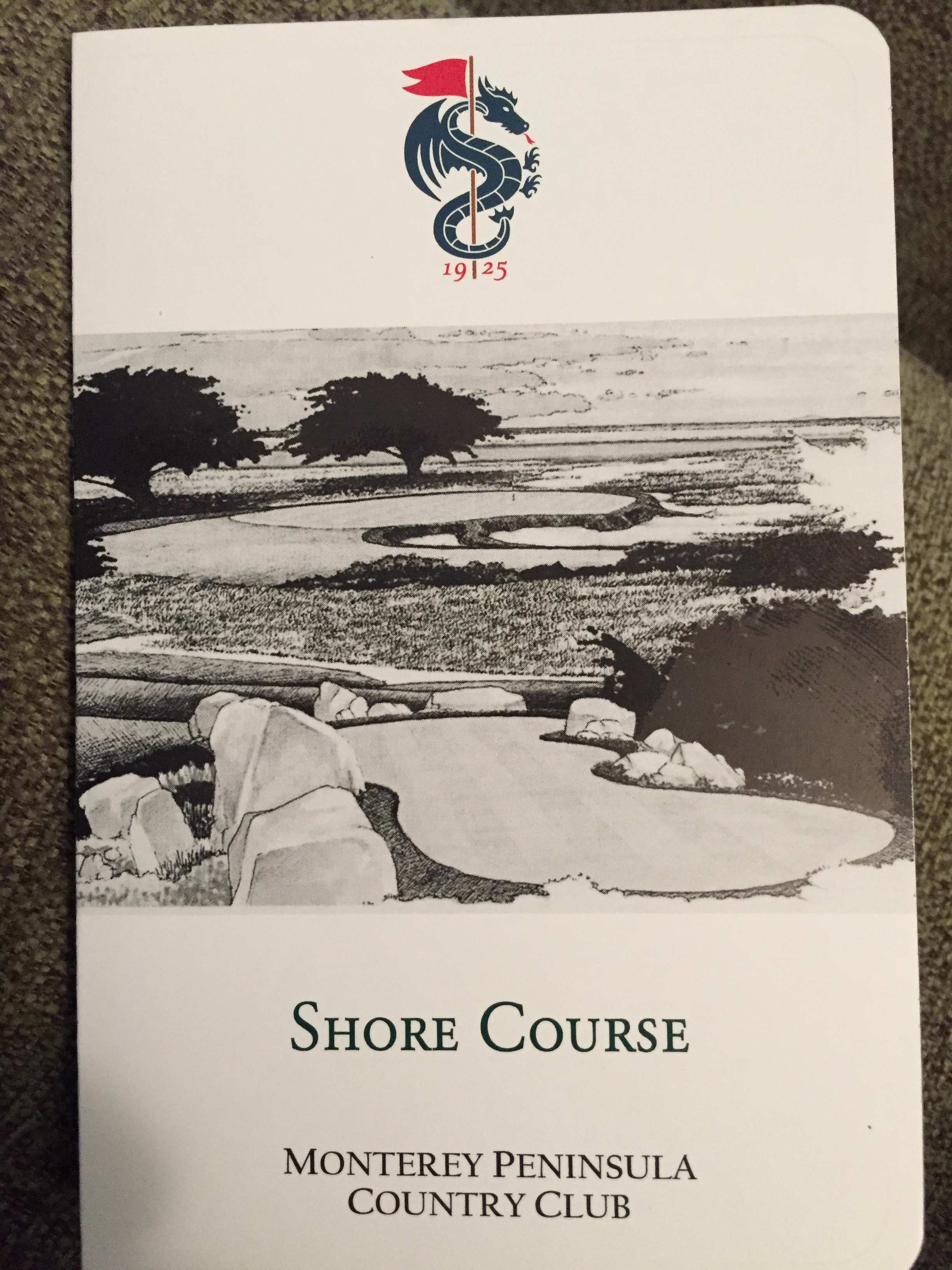
In the photo above, you can see the new club logo designed by Gerard Huerta. The logo is representative of the club’s Spanish Colonial history. The local folklore contained stories of serpents living in Monterey Bay, hence the art.
Below is the clubhouse I mentioned before.
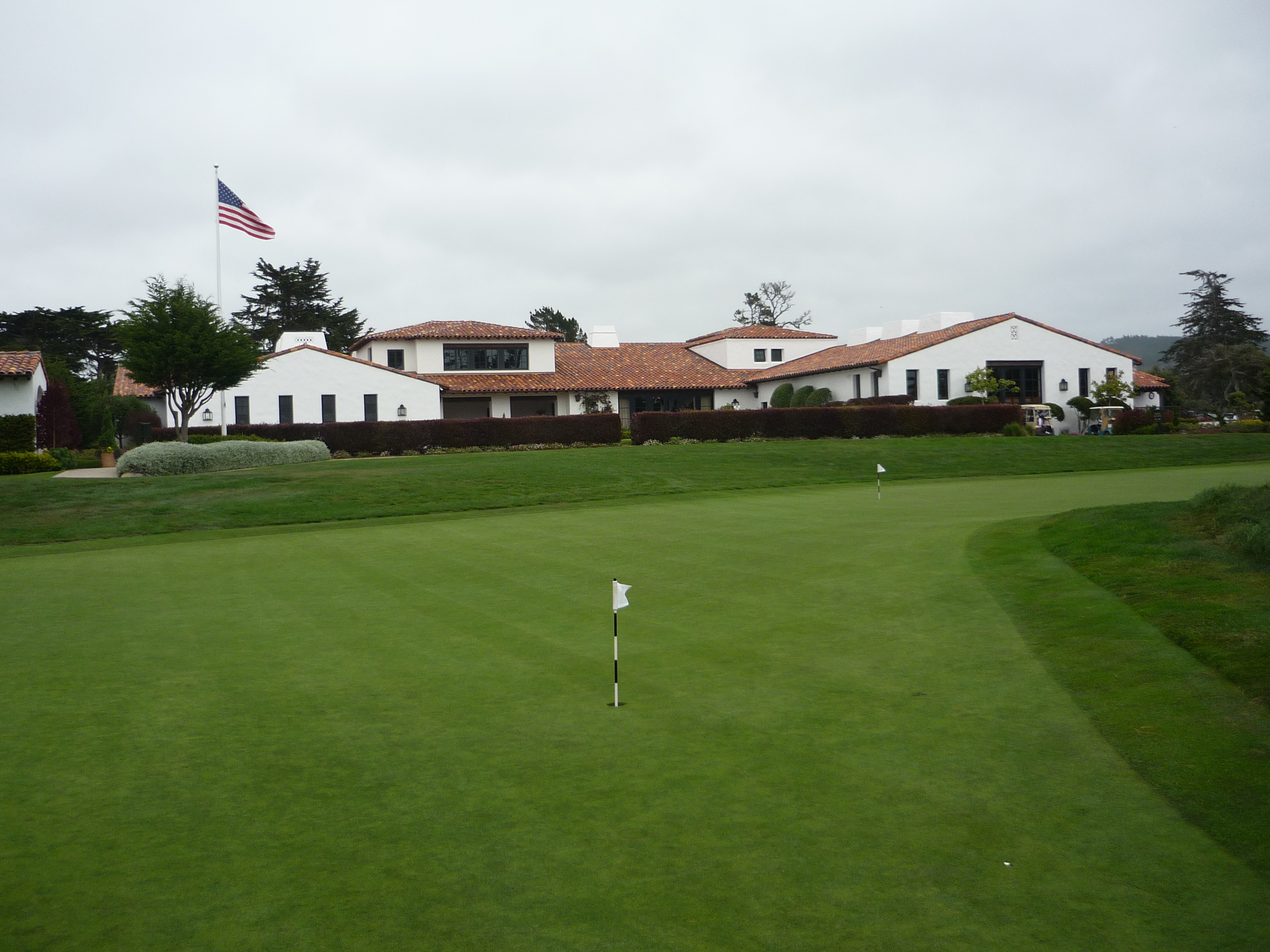
Hole 1 – 496 yards – Par 5
The opening tee shot gives you a boost as it is downhill. If you can get one in the fairway you can give this a go in two. All the bunkers on the left are in play.
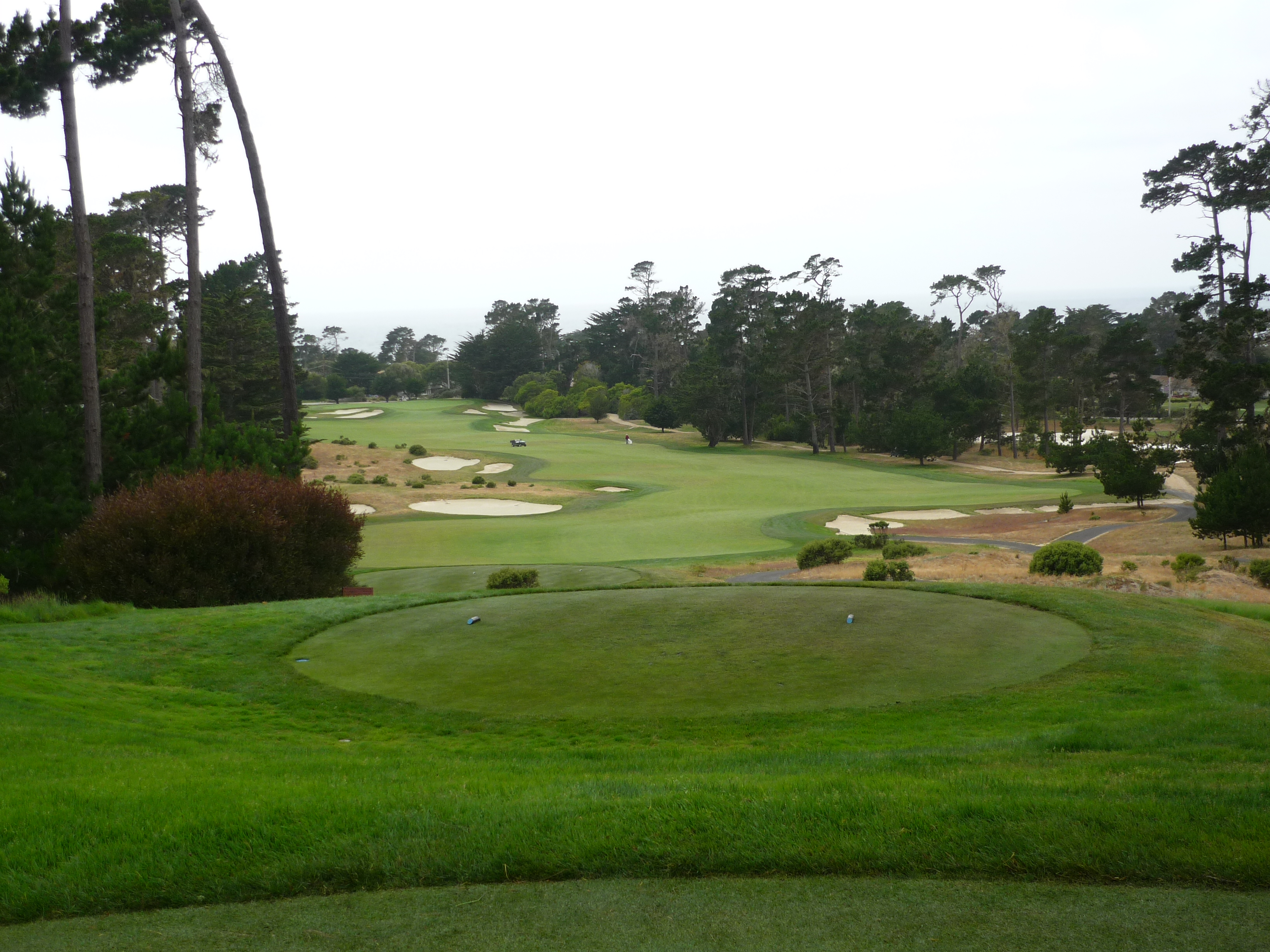
Here is the view from the left rough. You can see that the green is open in front.
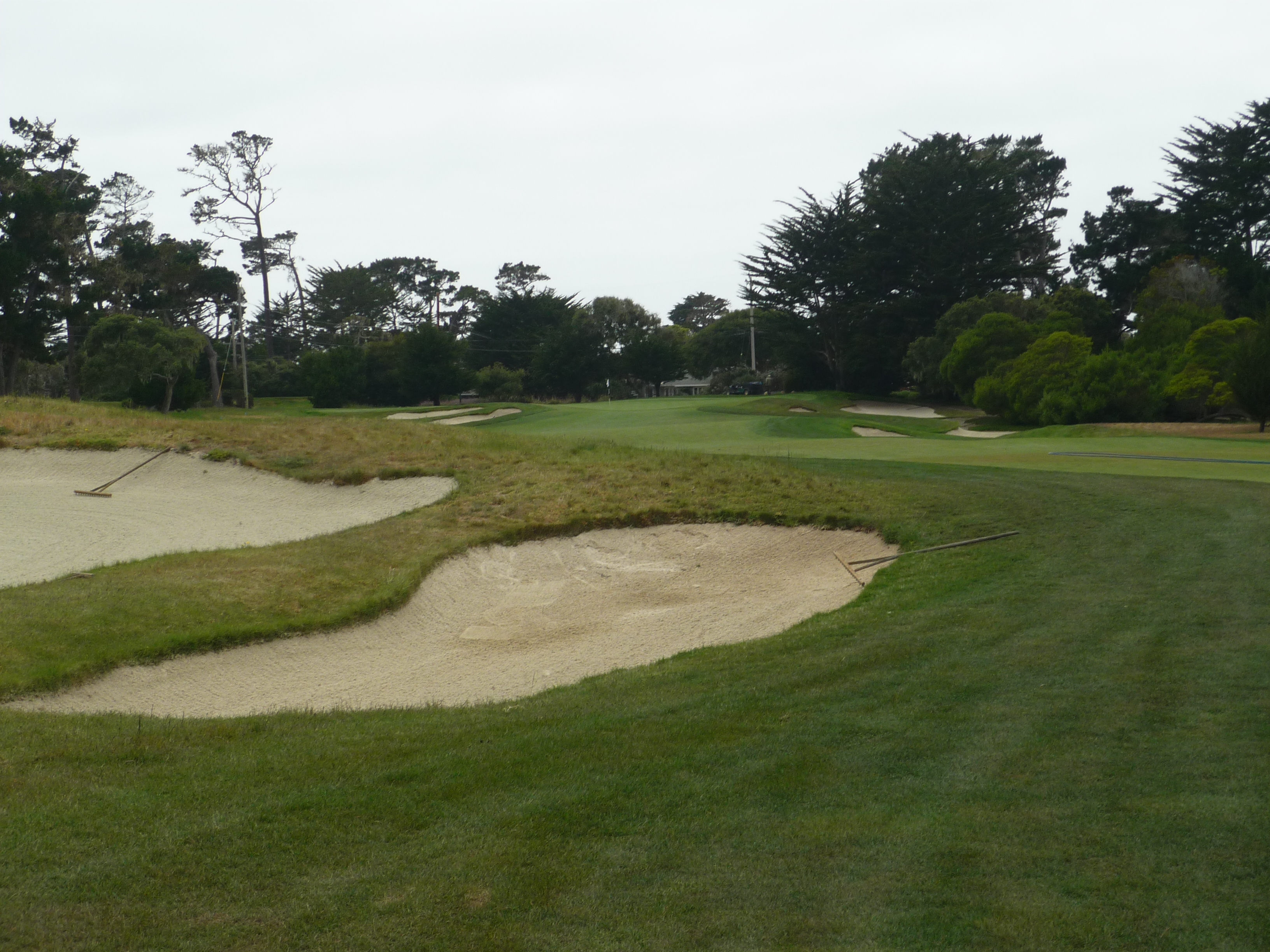
Here is a look from a typical third shot location.
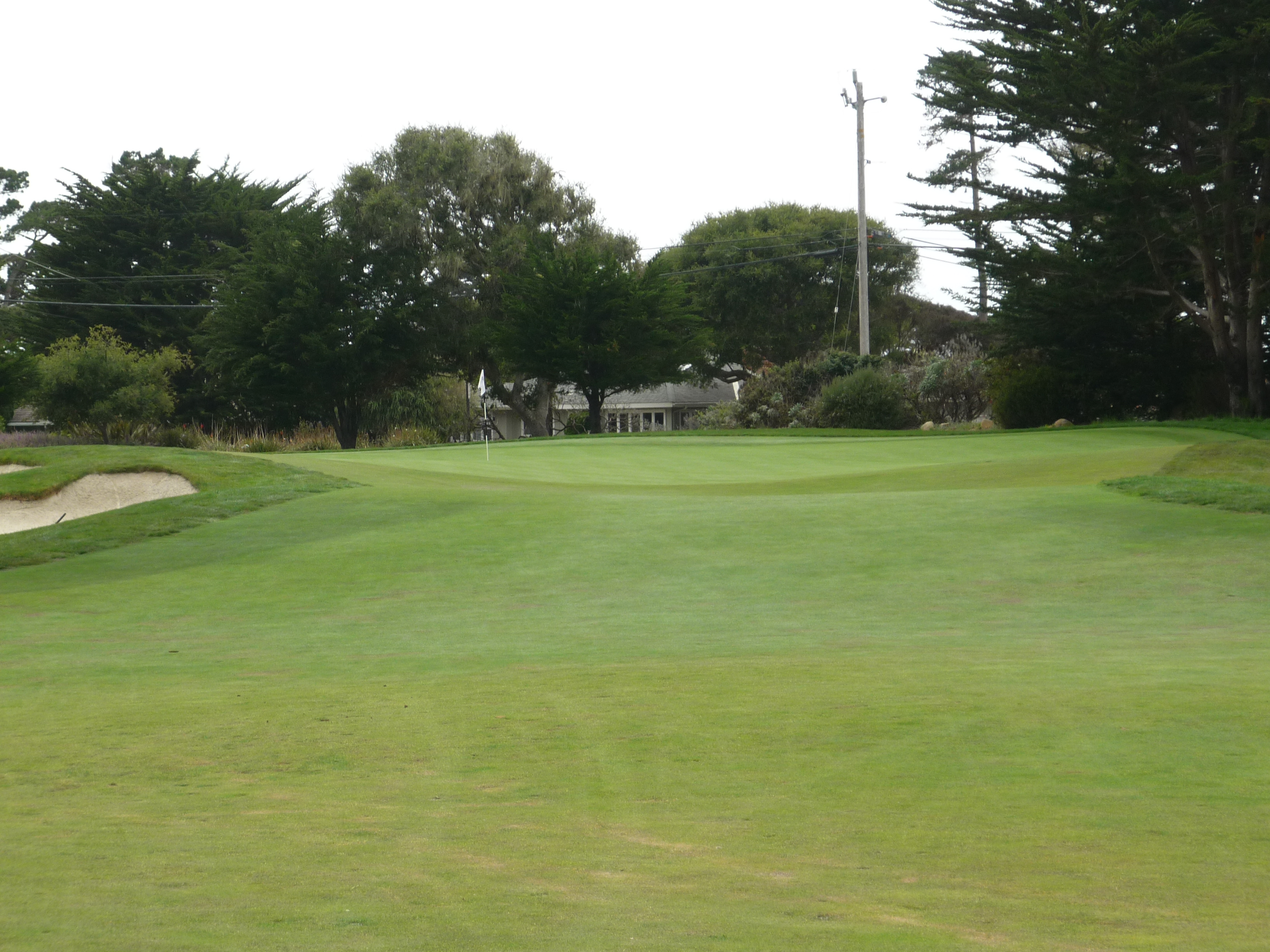
Below you can see the raised edges on the green with everything flowing towards the middle of the green. I want to go ahead and say that these greens were some of the best I have ever played. They were in phenomenal shape.
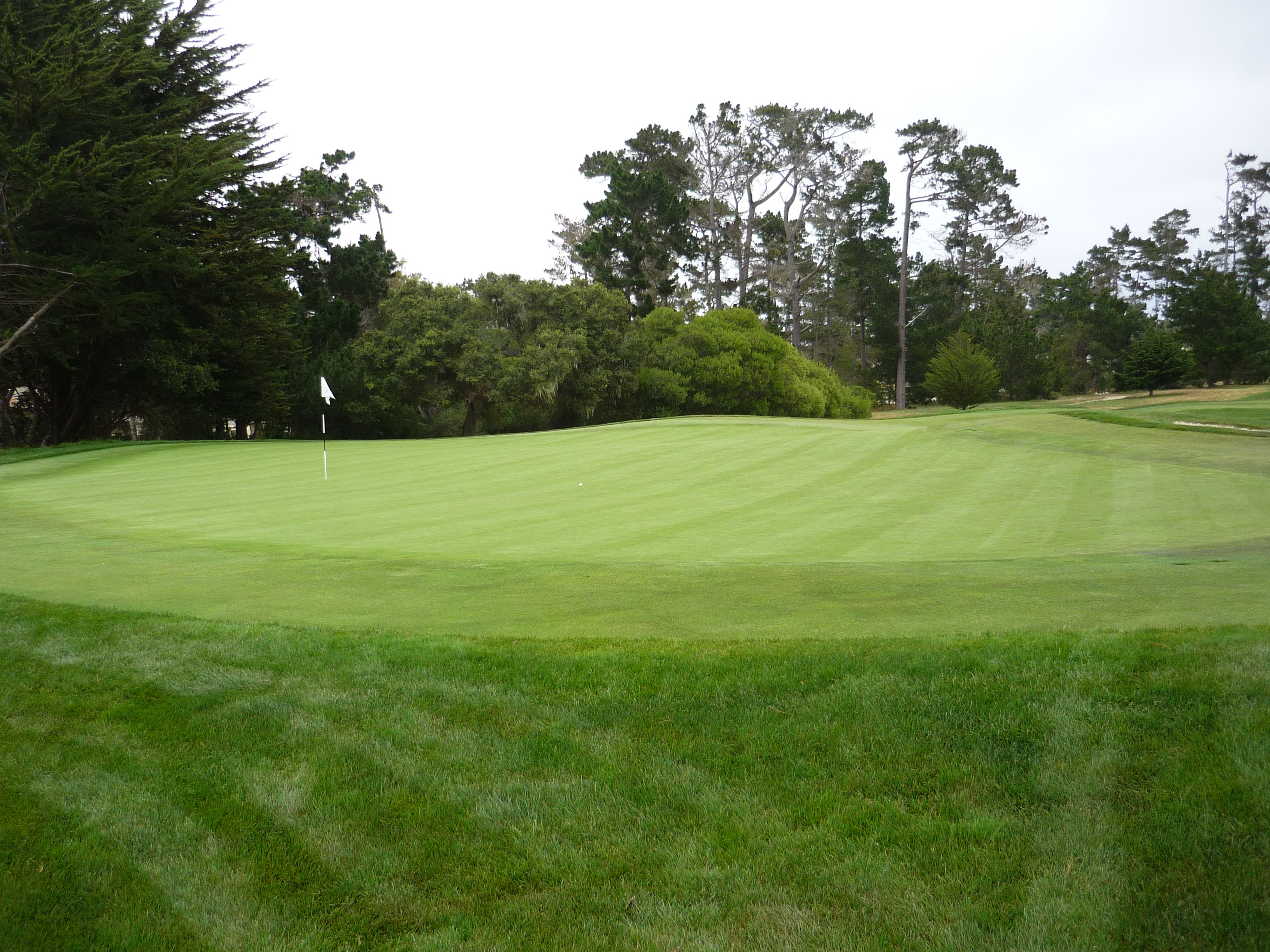
Hole 2 – 382 yards – Par 4
The second hole plays a little tighter off the tee. With the tree on the right if you can knock a fade out there you will be in position A.
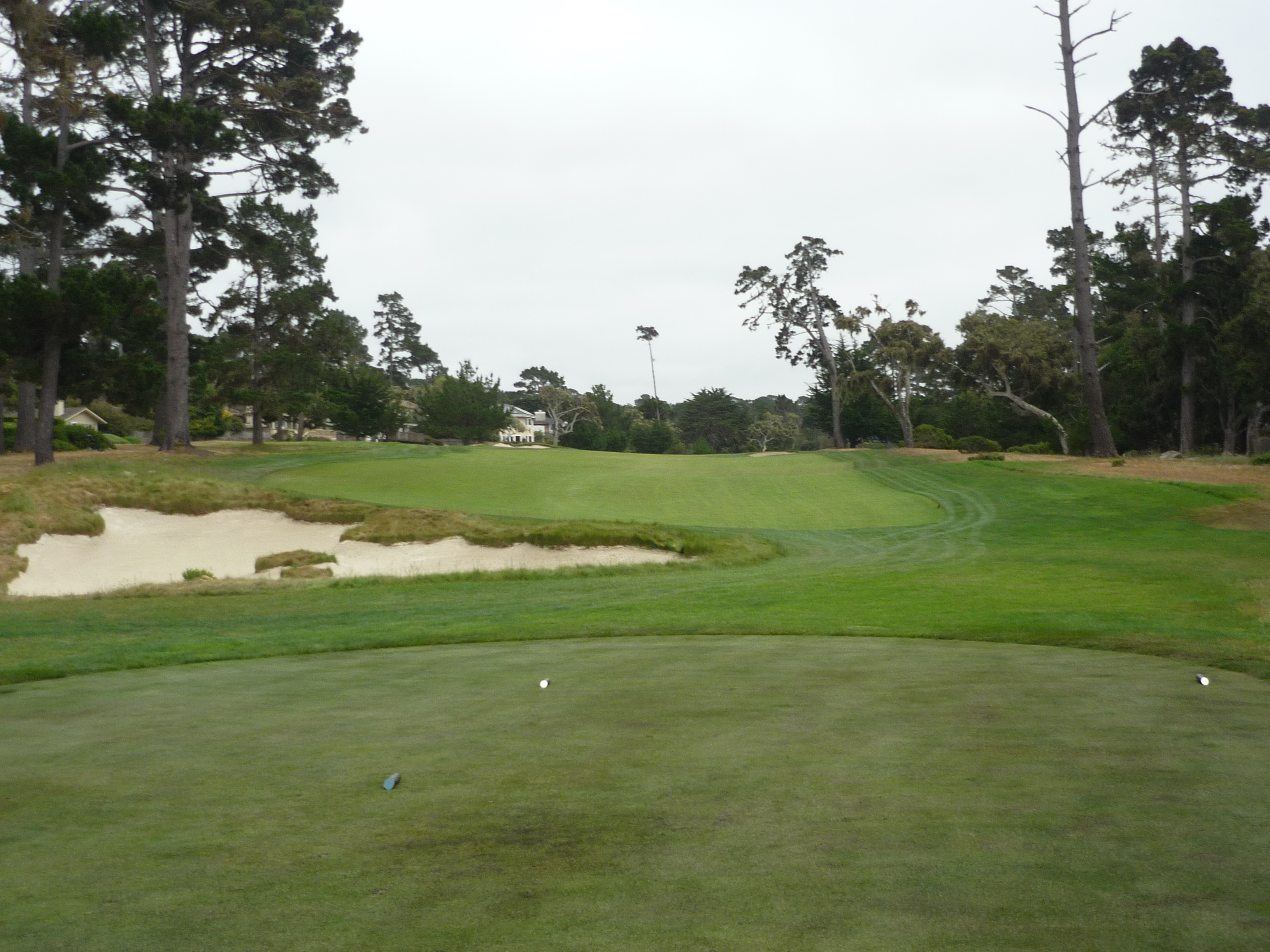
Here is a look at the second shot. With a shorter club, the bunker shouldn’t be much of a concern.
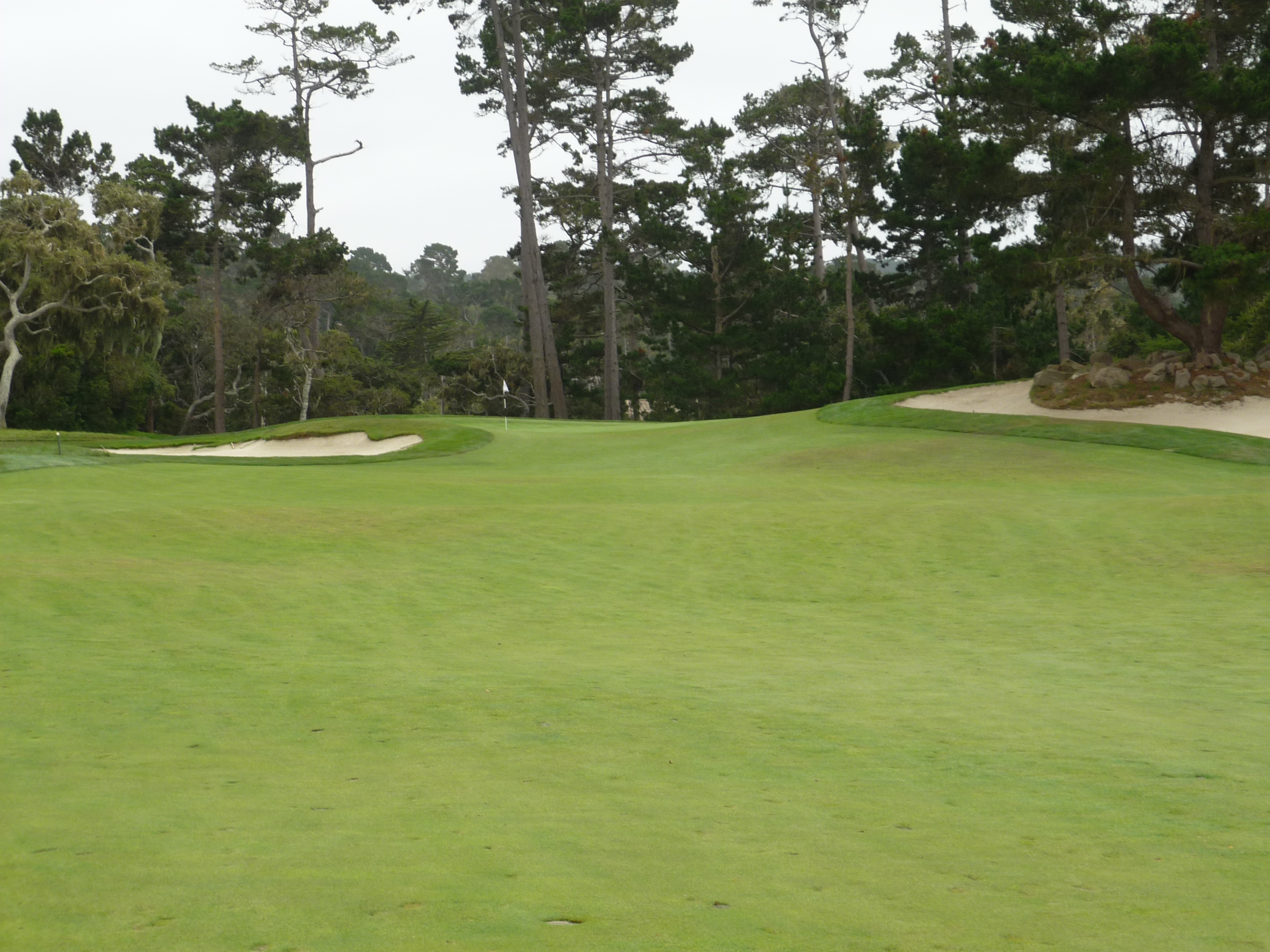
Here is a closer look at the putting surface.
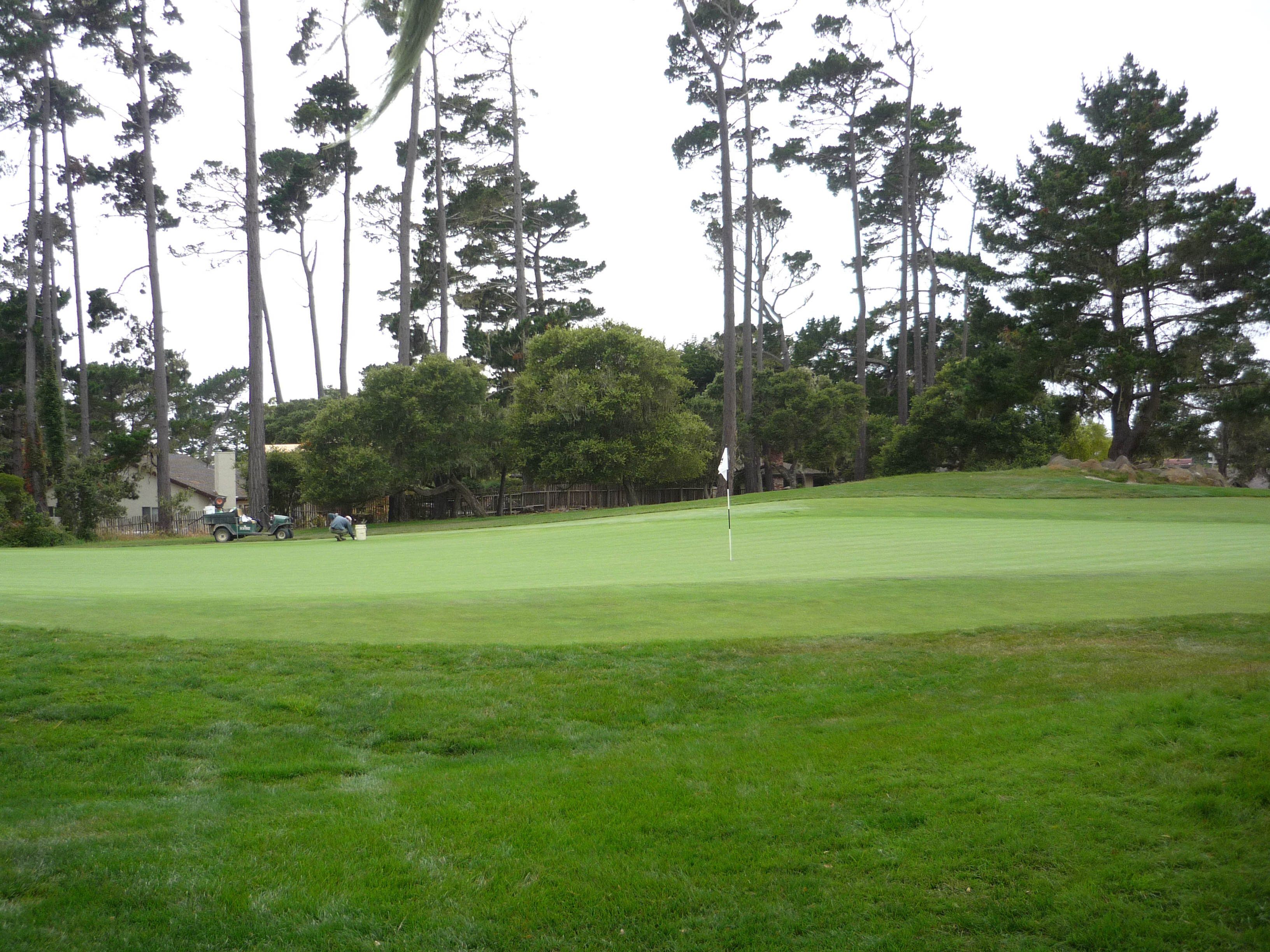
Check this guy out. I saw about 15-20 of these deer all over the course. They are very comfortable around people and did not scare easy. They didn’t bother the golfers either. Really interesting.
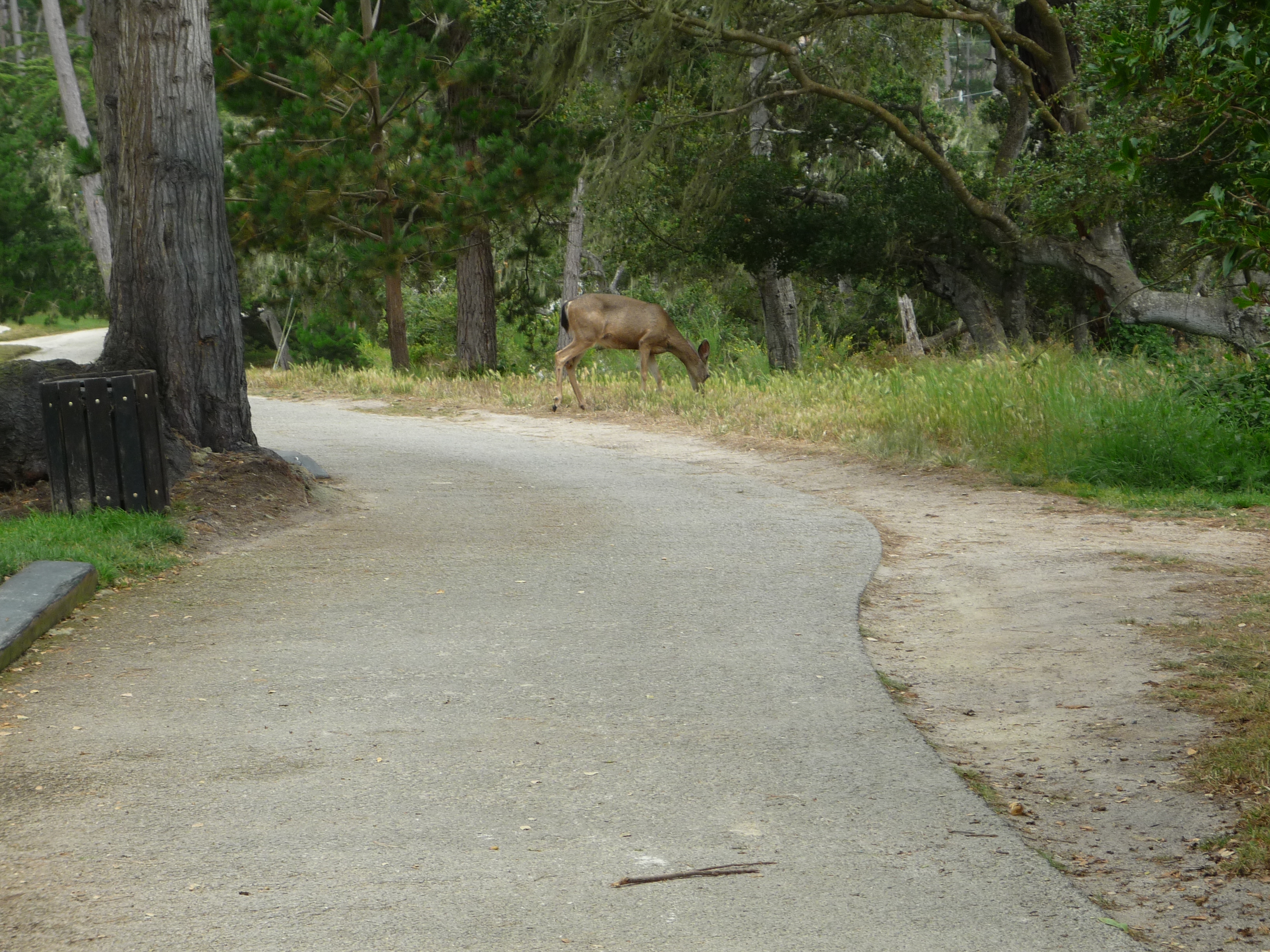
Hole 3 – 149 yards – Par 3
The first one-shotter is down a hill. There is a bit of a false front on the green so carrying the ball a little into the putting surface is recommended.
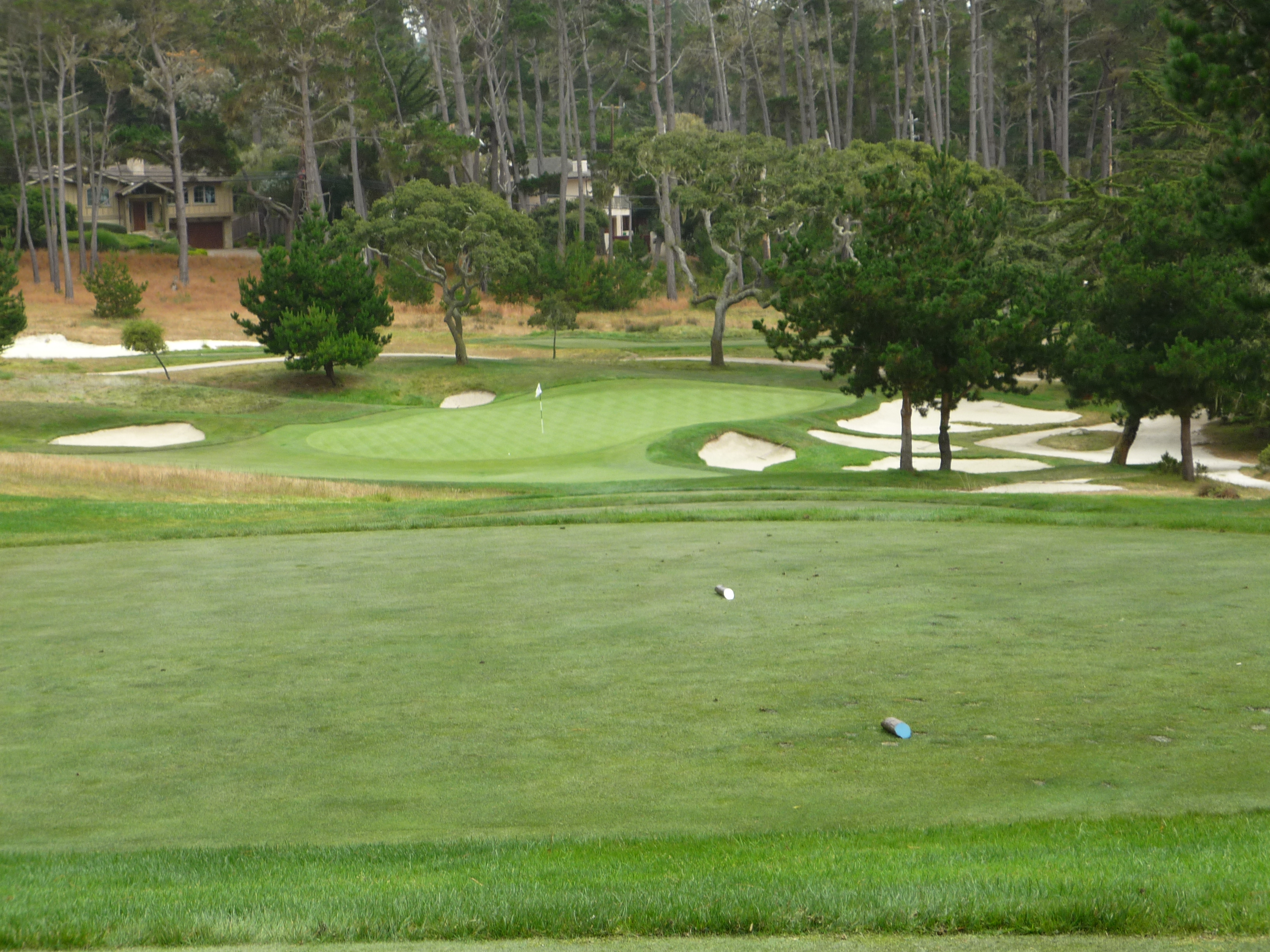
Hole 4 – 353 yards – Par 4
I liked this hole for some reason. You can lay back off the tee for position. This is a decent strategy with all the sand up the right.
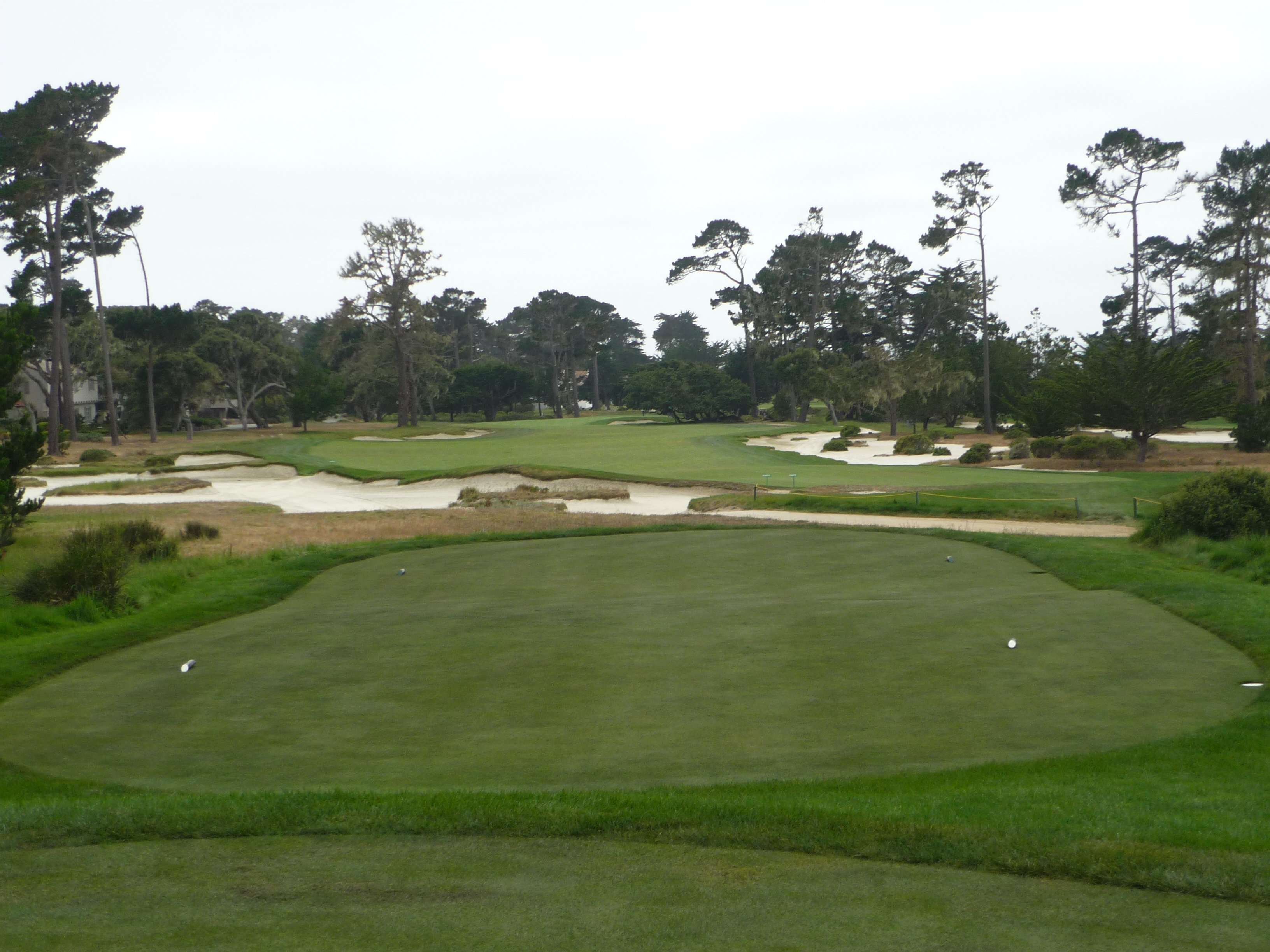
The approach shot is seen below. The shorter tree on the right is to be avoided.
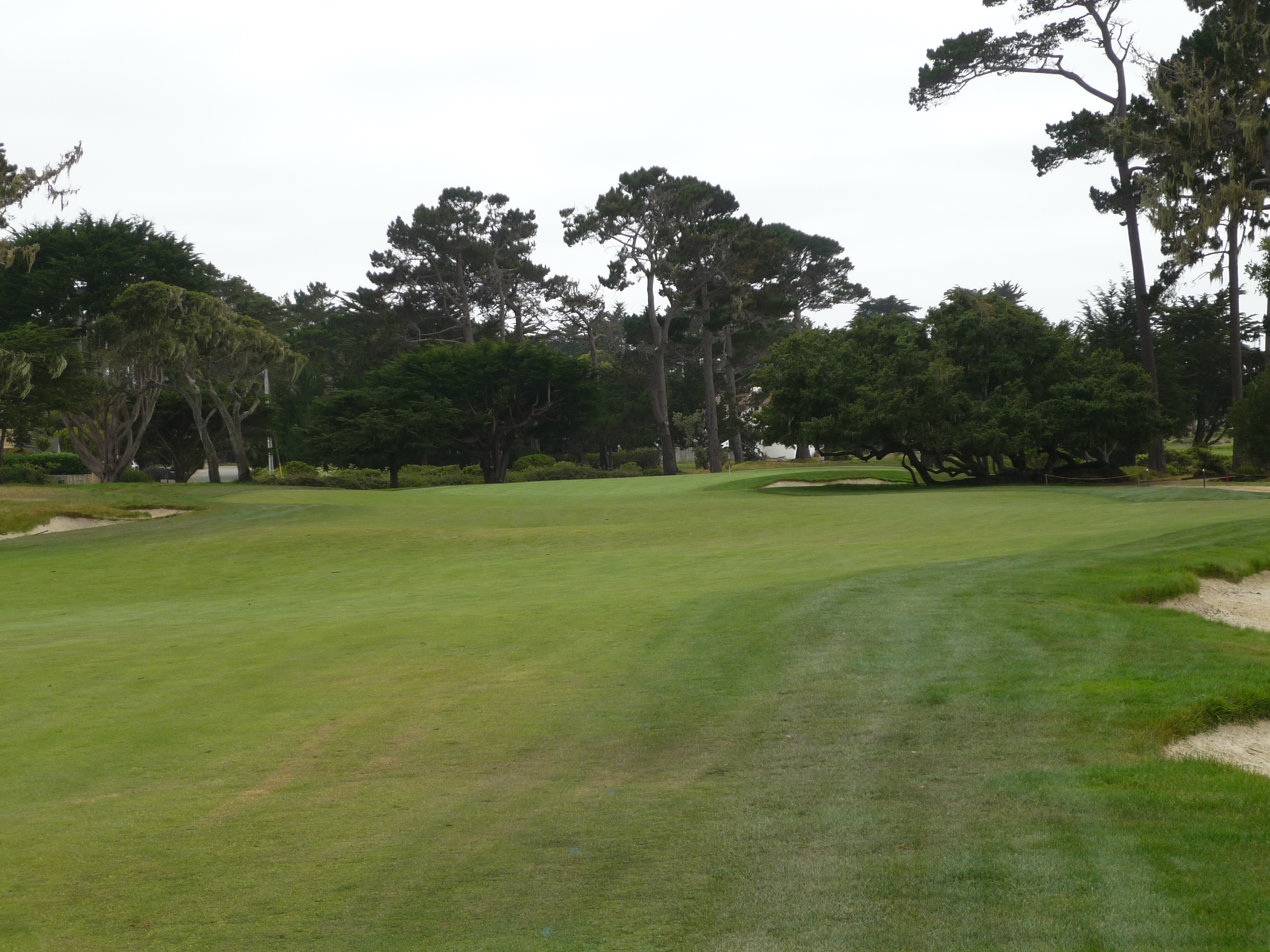
The shape of this green was interesting to me. It is not very big so it provides a difficult target.
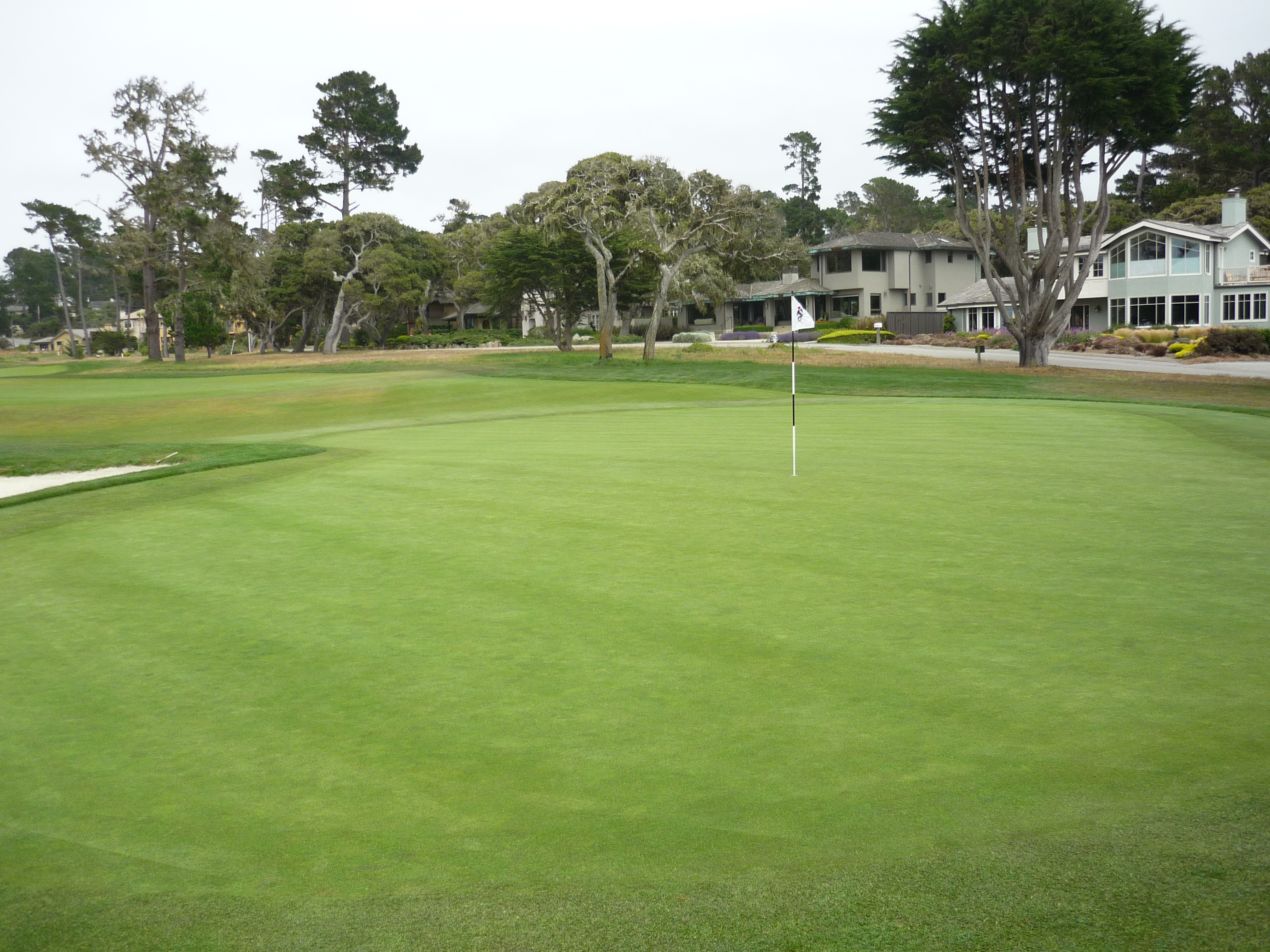
Hole 5 – 306 yards – Par 4
Here we are at the first of the ocean holes. I found the sightlines to be difficult from this tee. On the advice of my caddie, I took three iron and aimed at the middle tree in this picture. You can go with driver but the line changes quite a bit.
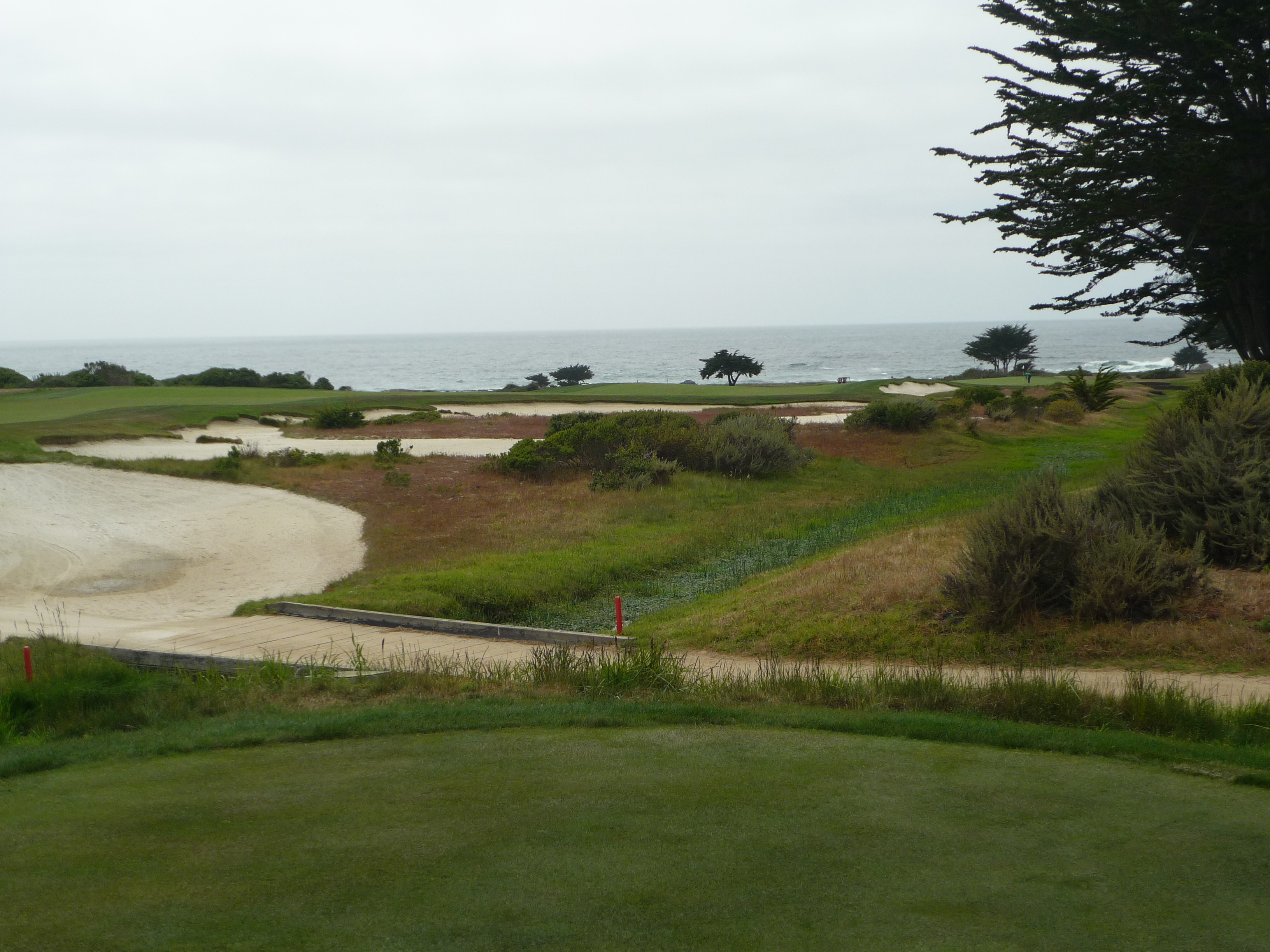
Even laying back from the tee I still didn’t have much left into the green. The hump in the fairway obscures the view a bit.
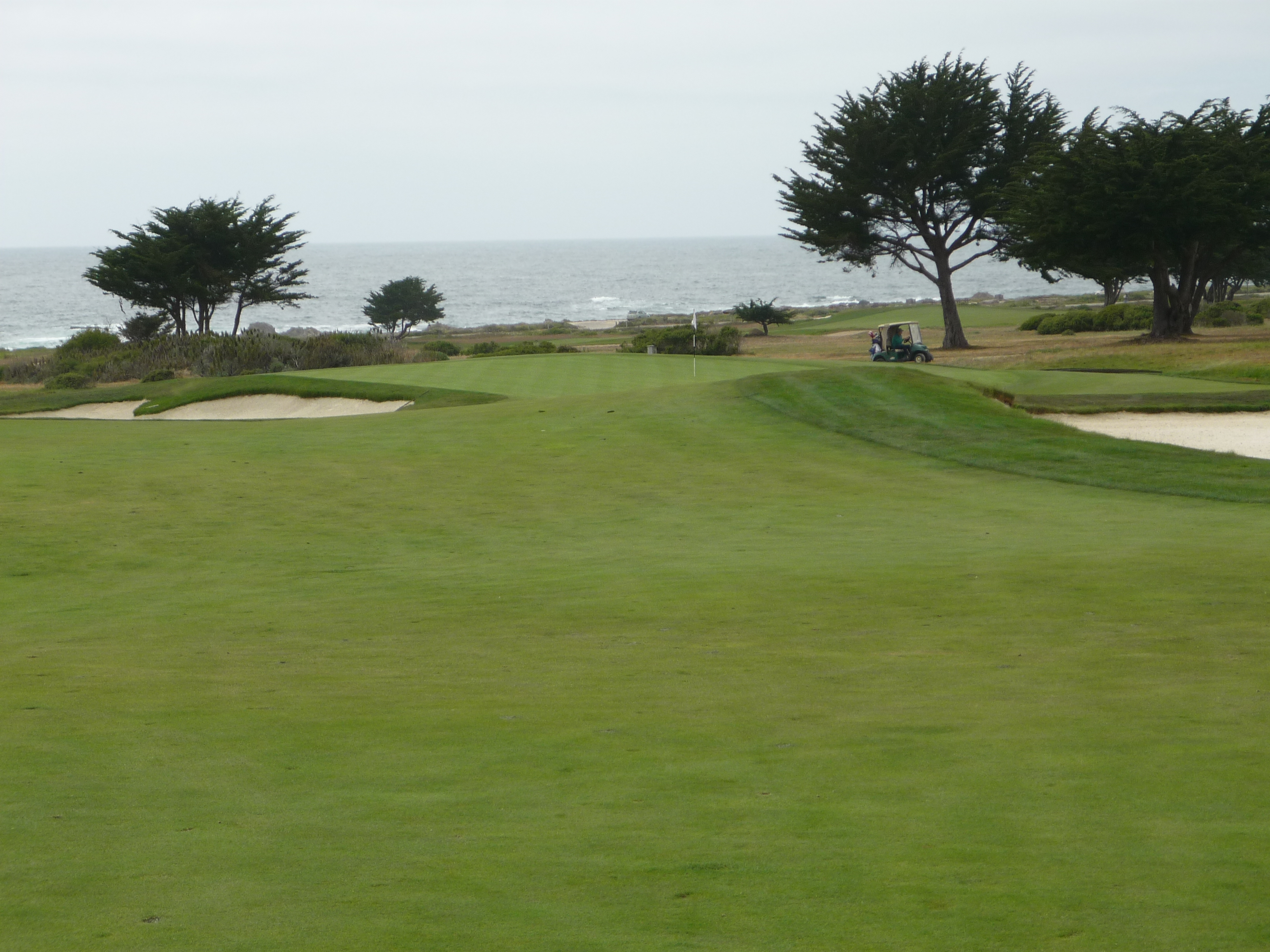
See what I mean about the deer. No fear.
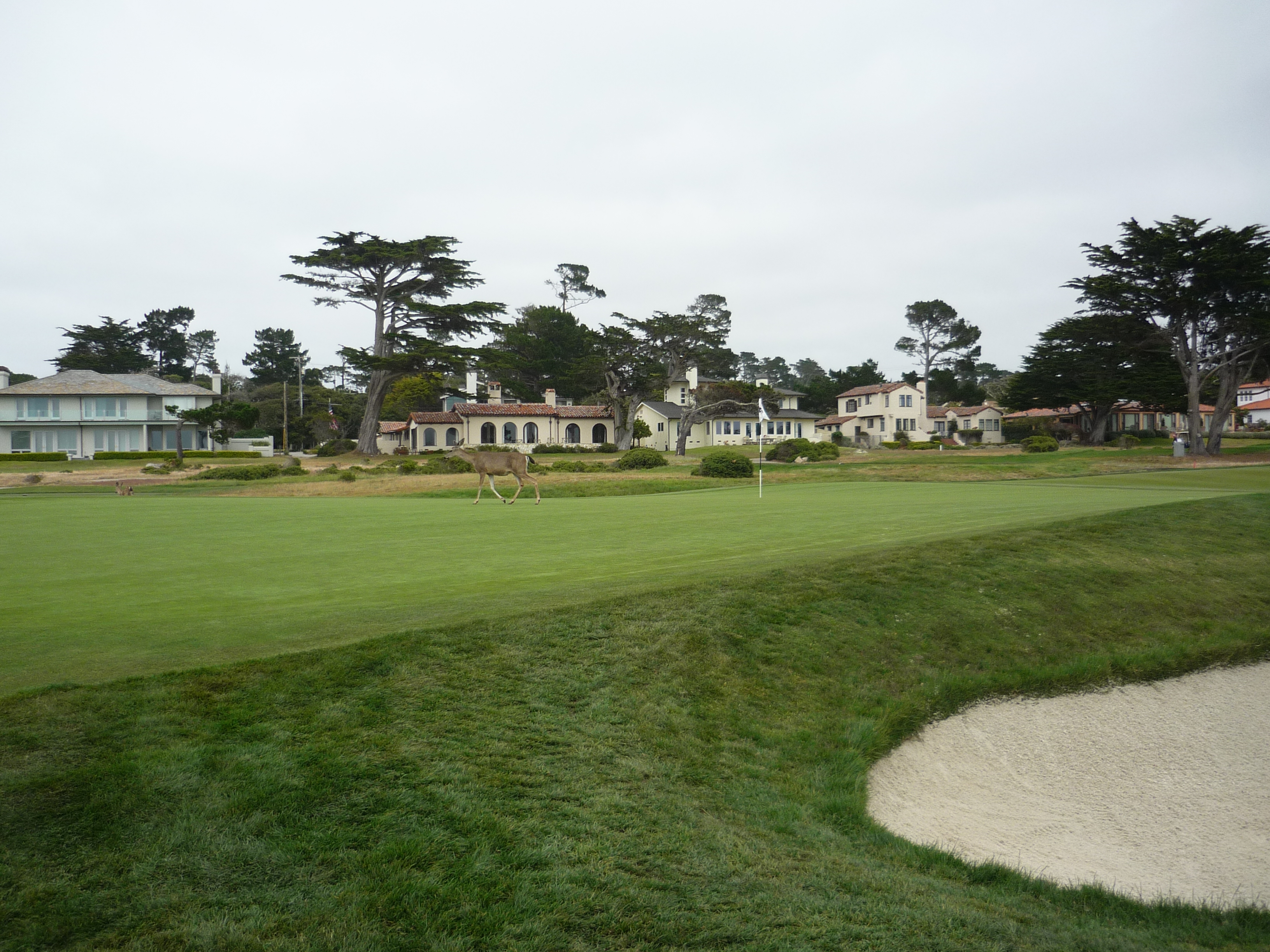
Hole 6 – 511 yards – Par 5
This hole bends to the right, but off the tee, you can hit it up the middle and worry about the curve on the second shot. Hitting one right over the cart path is a good play.
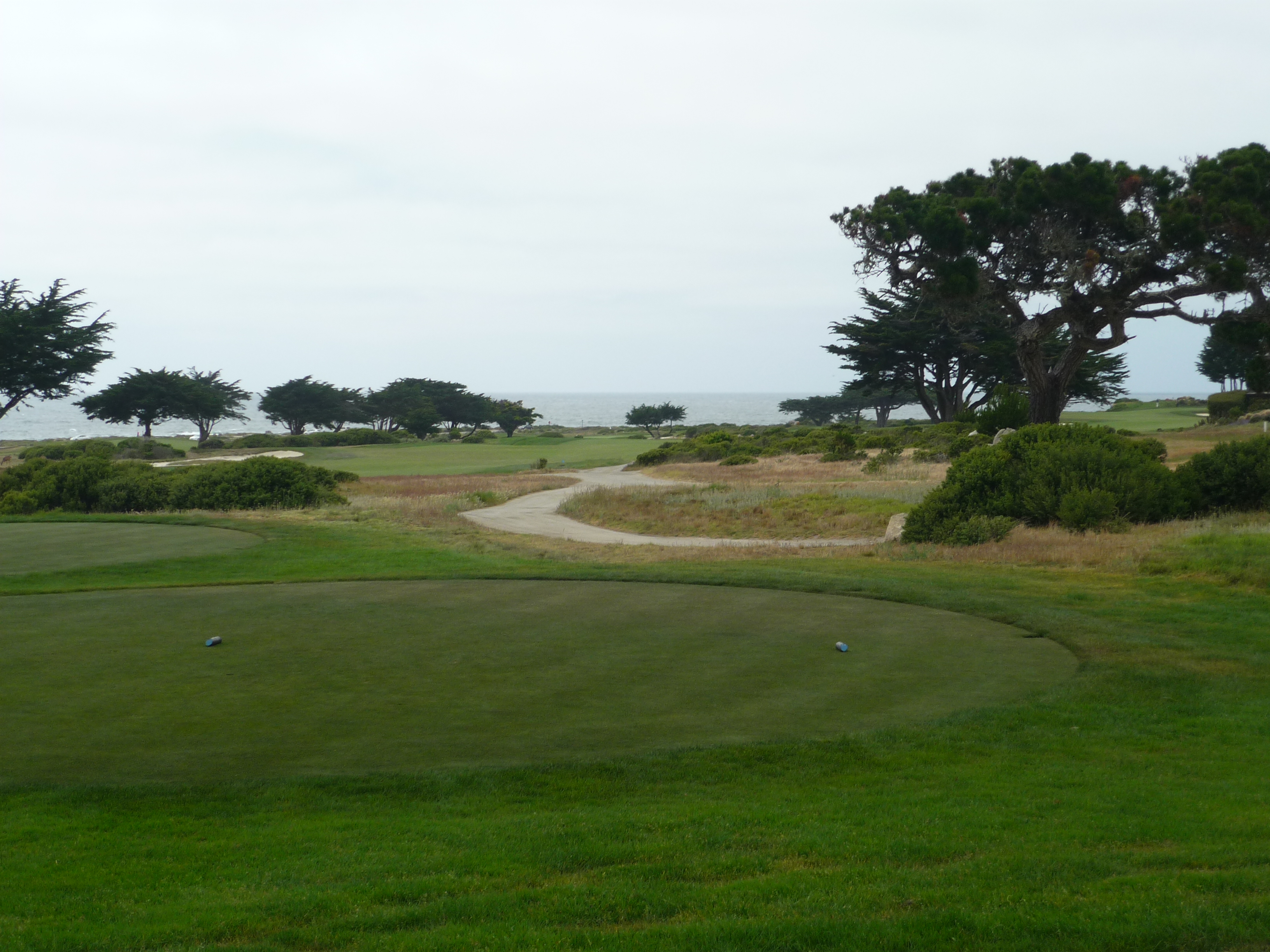
Once you get into the fairway, the hole makes a right turn. The second shot plays uphill all the way and has a bunker fronting the green. It is also a tough green to hold with a long club. Everything is saying to hit to a comfortable distance for your third shot.
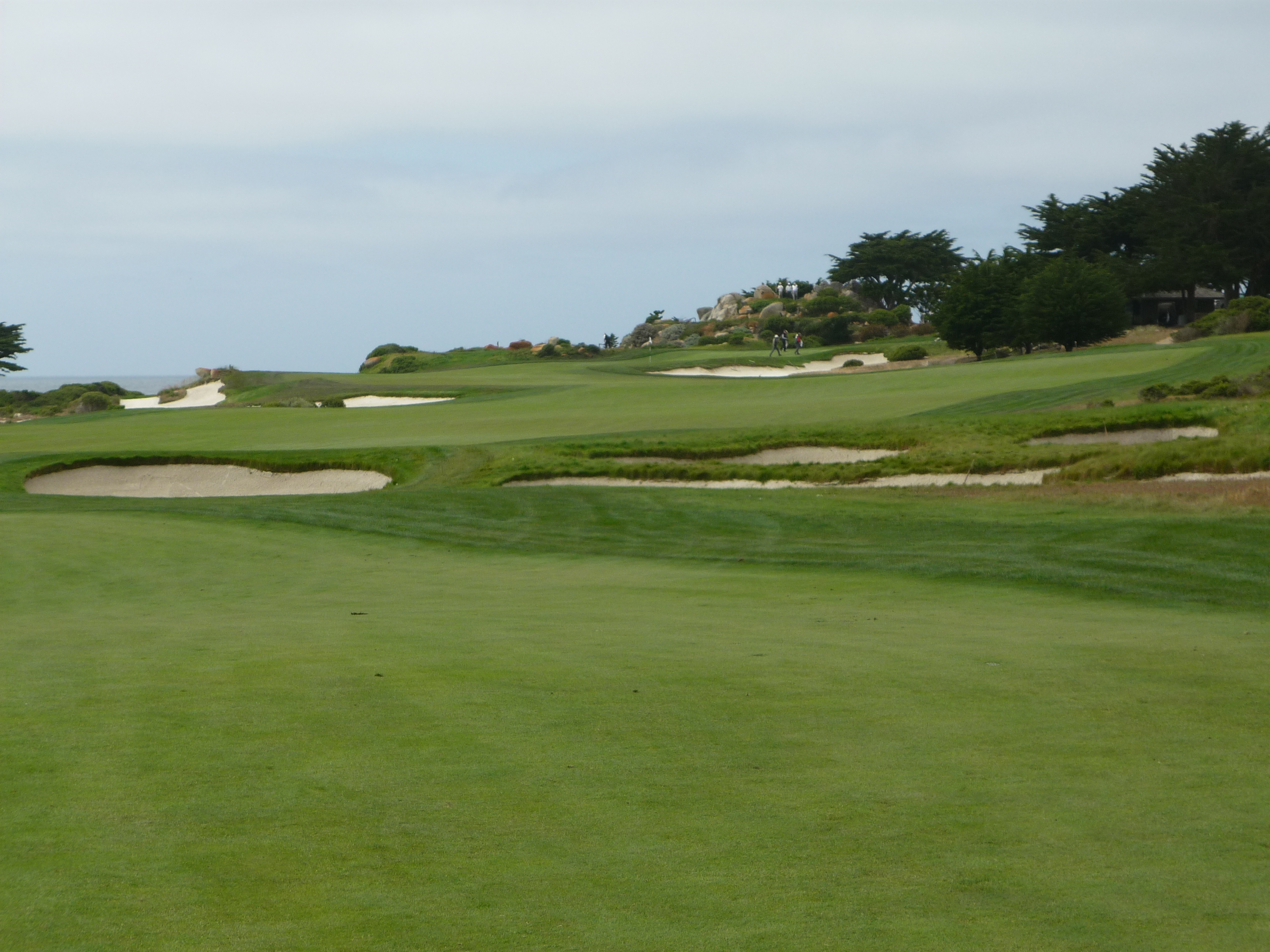
From behind you get the full view of the slope. The green is two-tiered. You can see what I was referring to about holding the green with a wood.
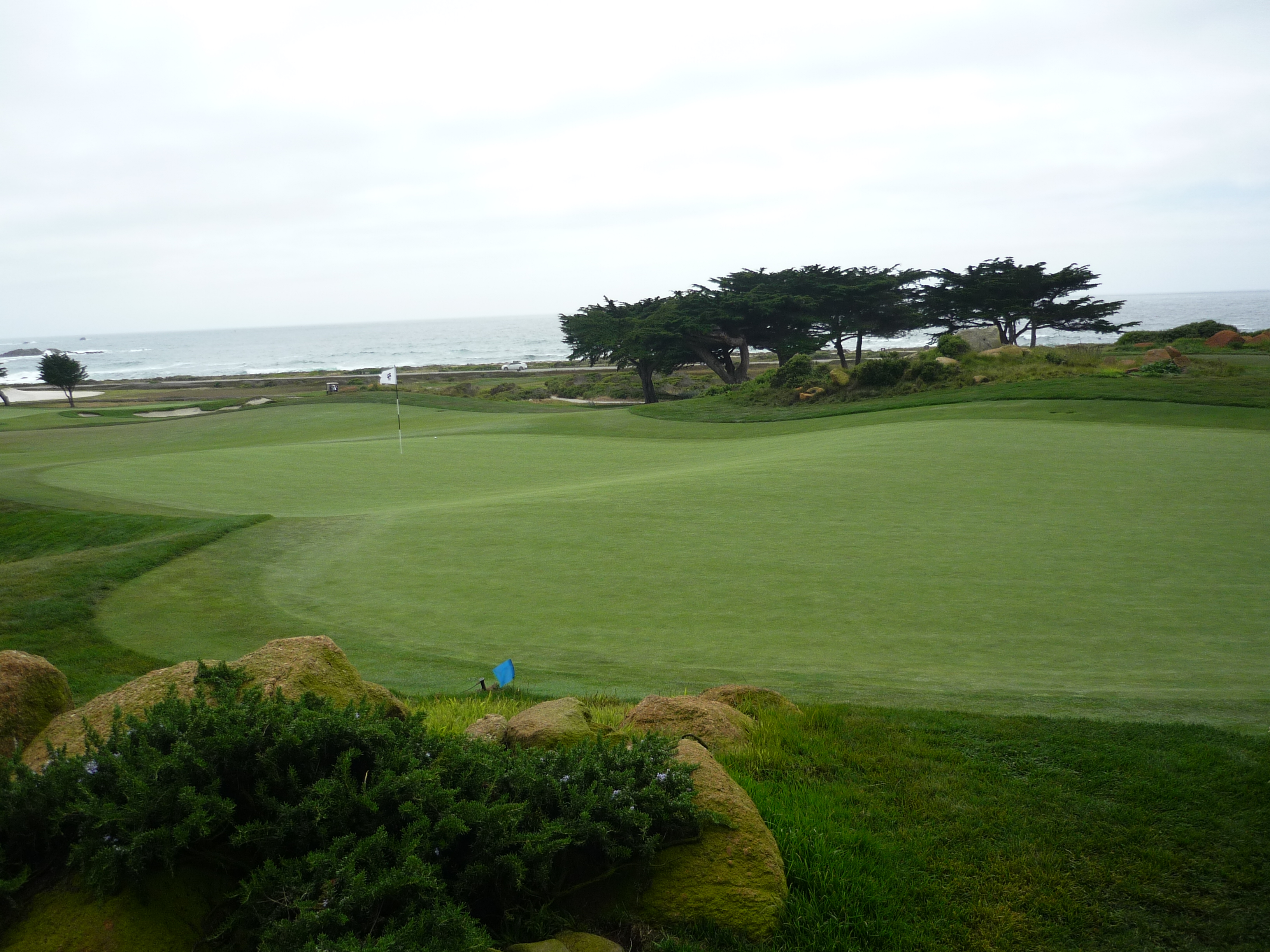
Hole 7 – 203 yards – Par 3
This is a longer test than the previous par three. There is a lot of trouble left. A miss just short of the green will not hurt you too much.
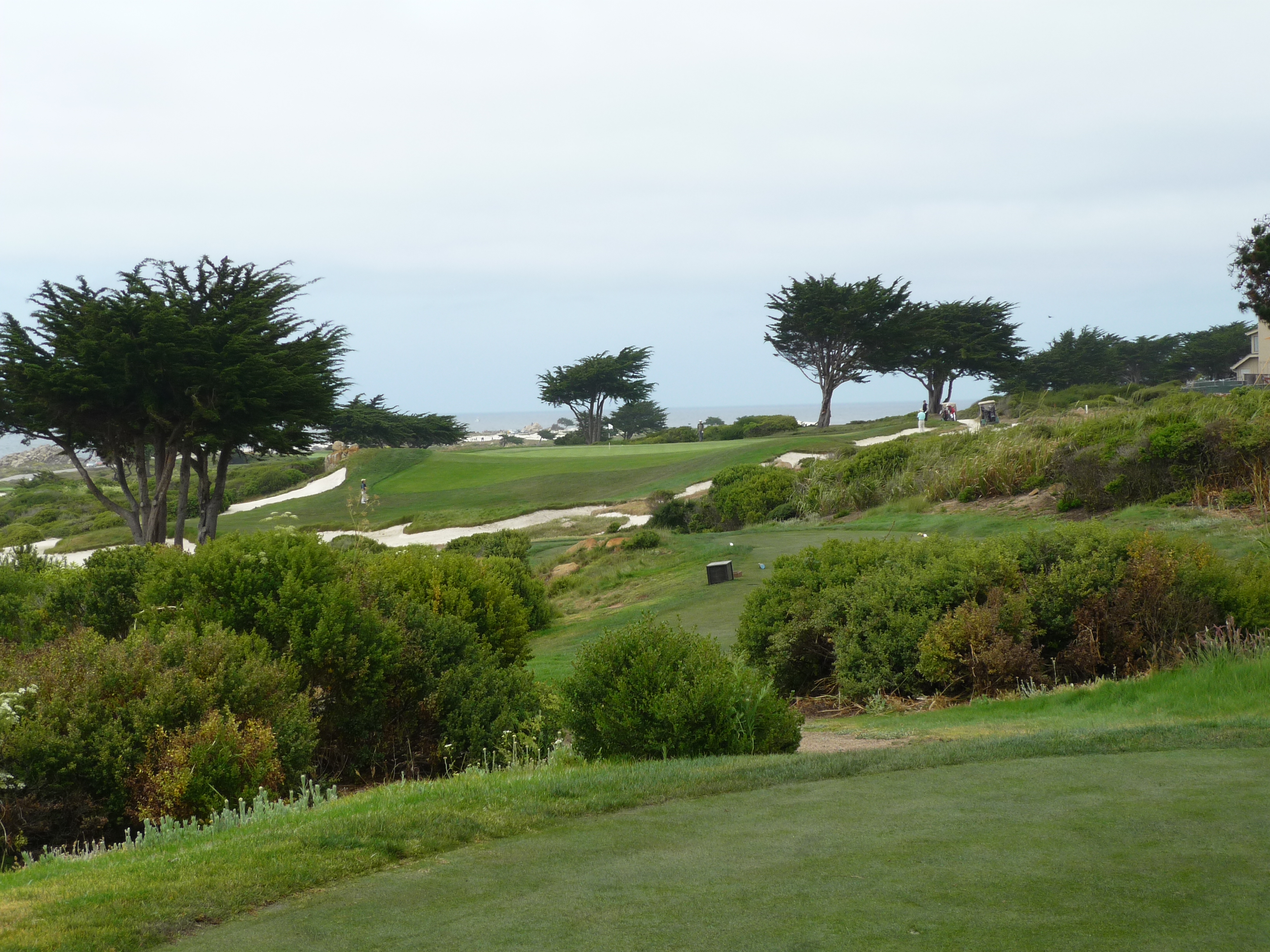
Here is a closer look to show you what you face.
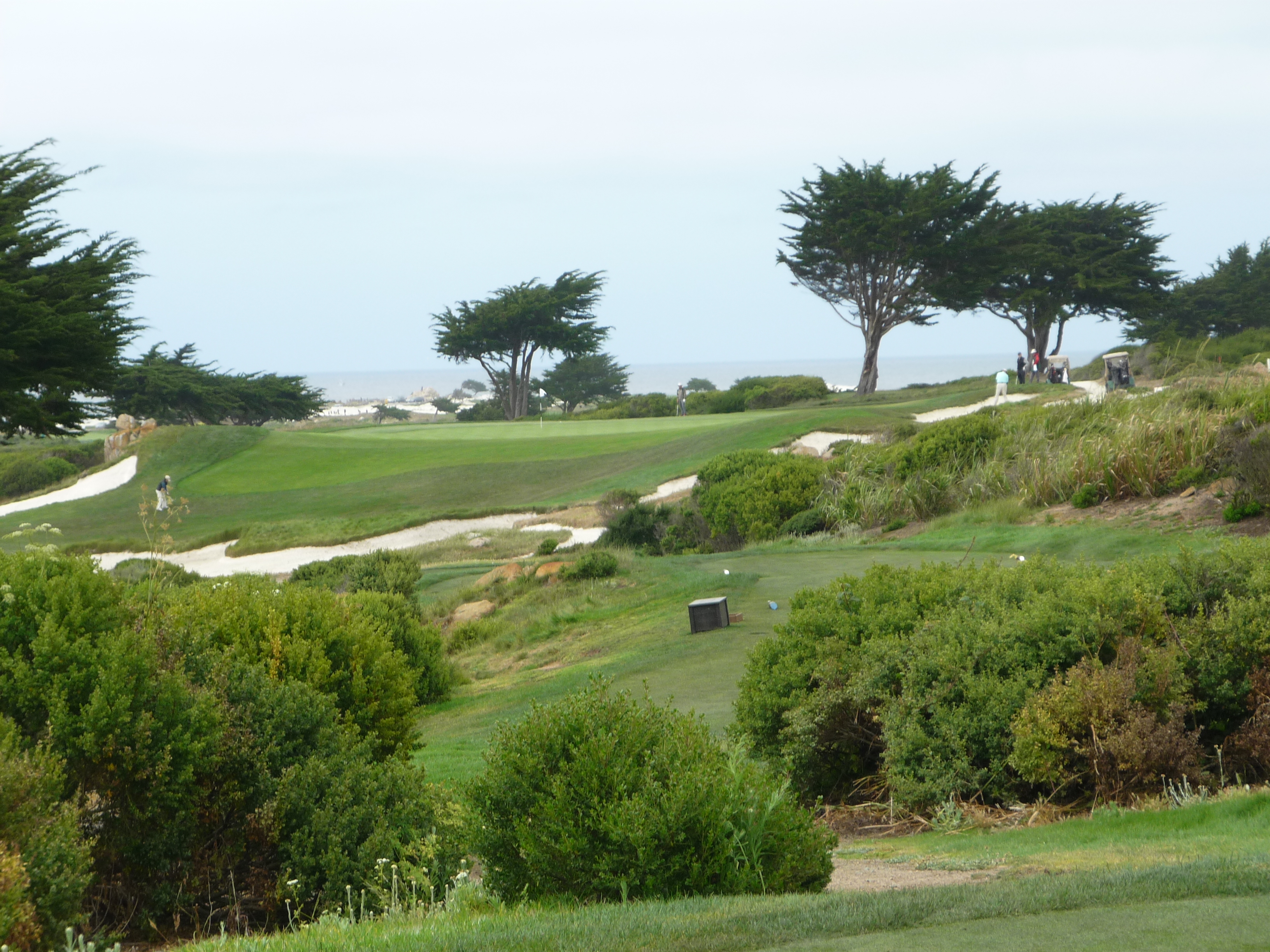
The views are something else.
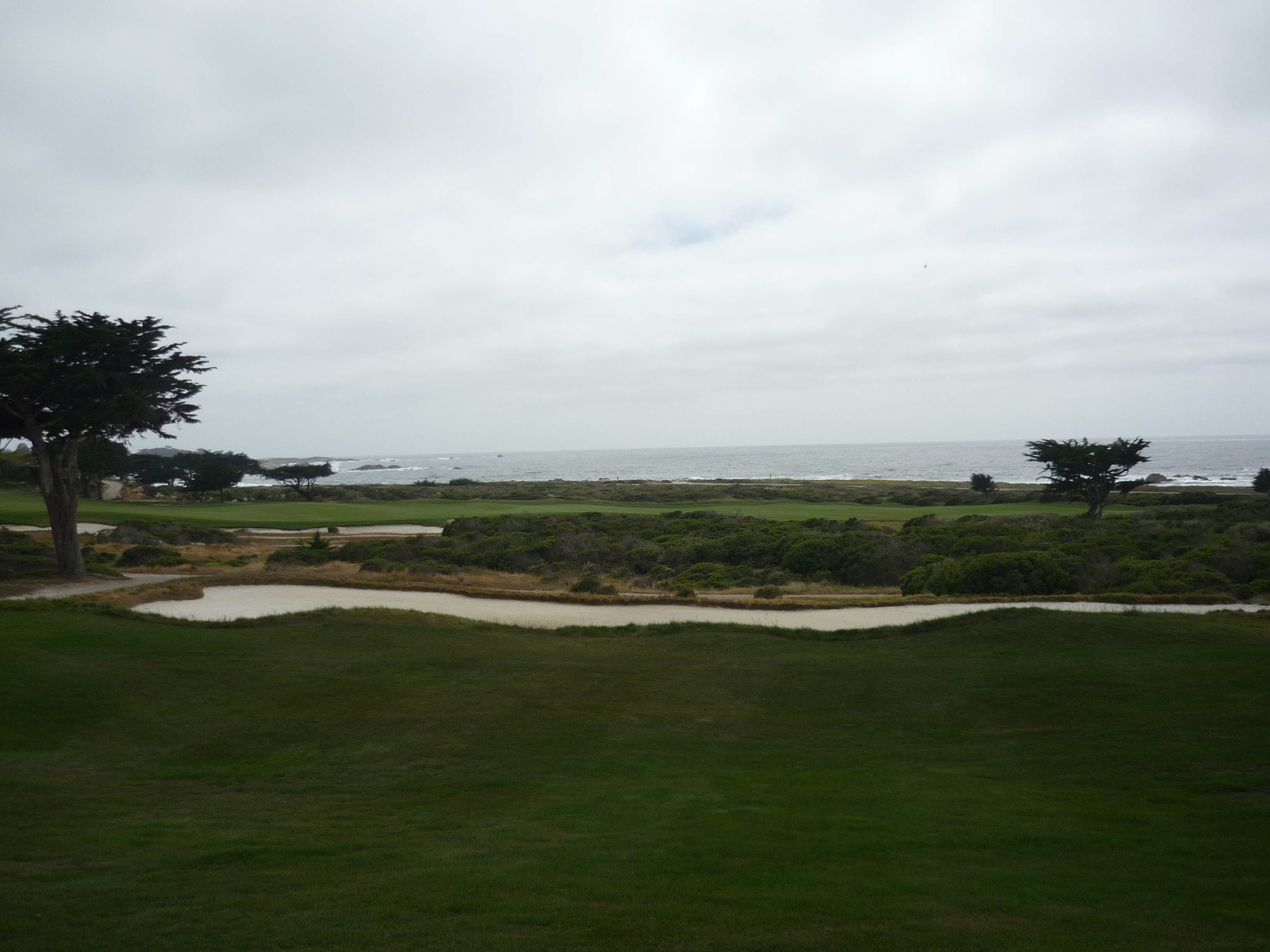
This is a large green that isn’t too undulating. If you hit the green you should have a good look at birdie.
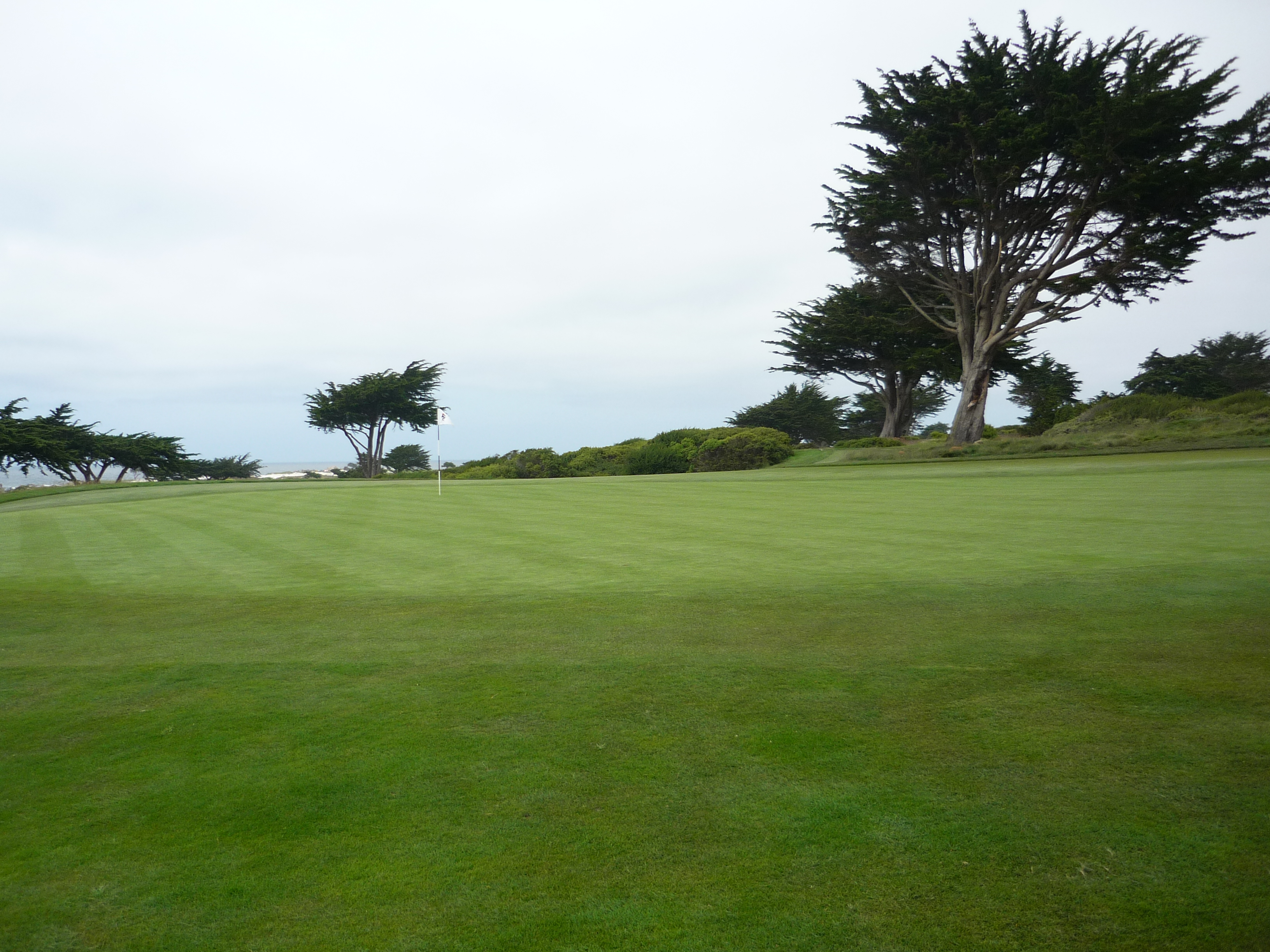
Hole 8 – 425 yards – Par 4
This is a longer hole that bends to the left. You can see the fairway out in front of you. The preferred shot is a slight draw that starts in the middle of the short stuff.
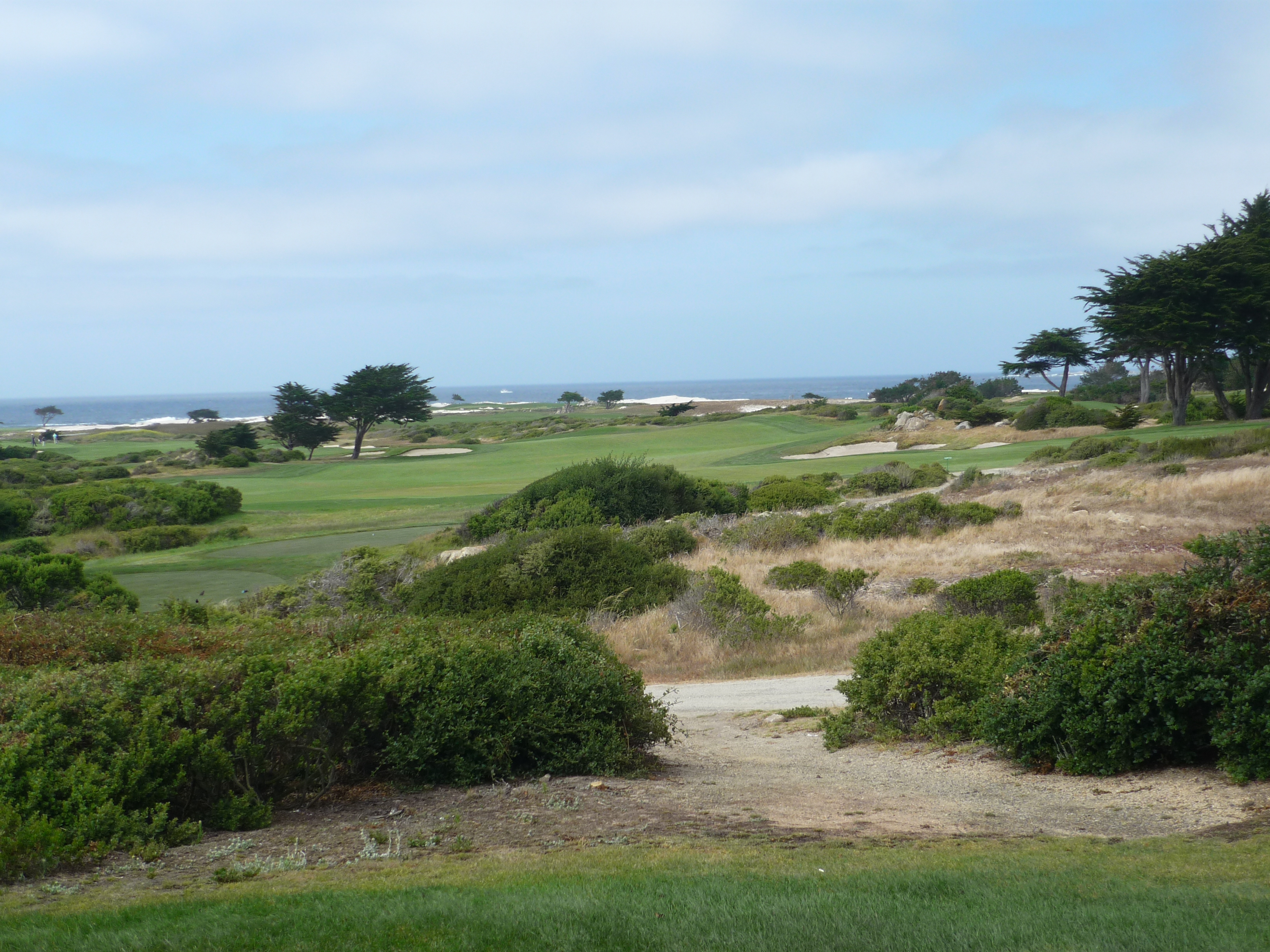
The second shot is quite level. The closer bunker isn’t really in play.
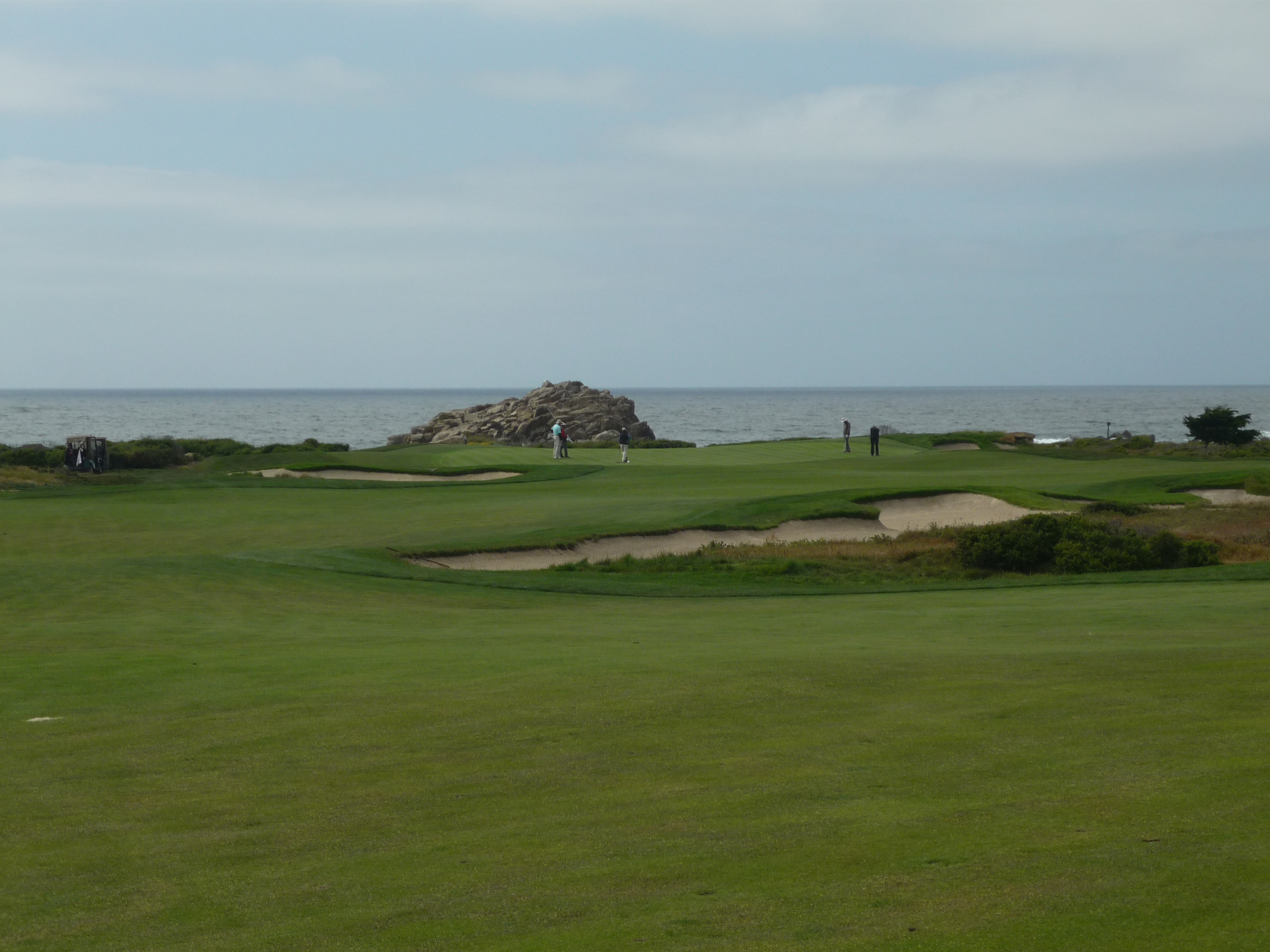
The slope in this green has a wavy quality to it.
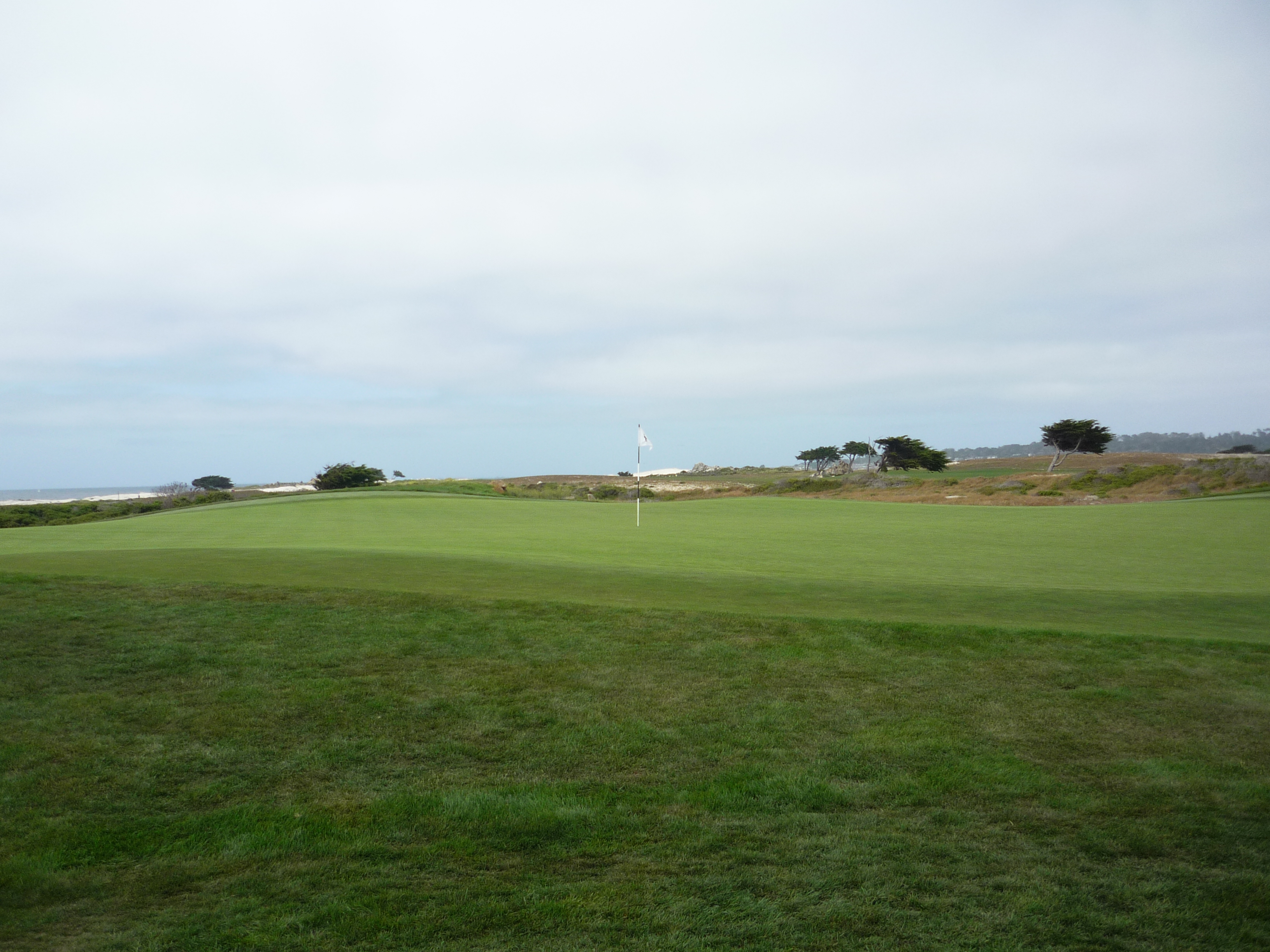
You can see below that this is a larger putting surface. There are many pin locations possible on this hole, but I got one right in the middle for a simpler putt.
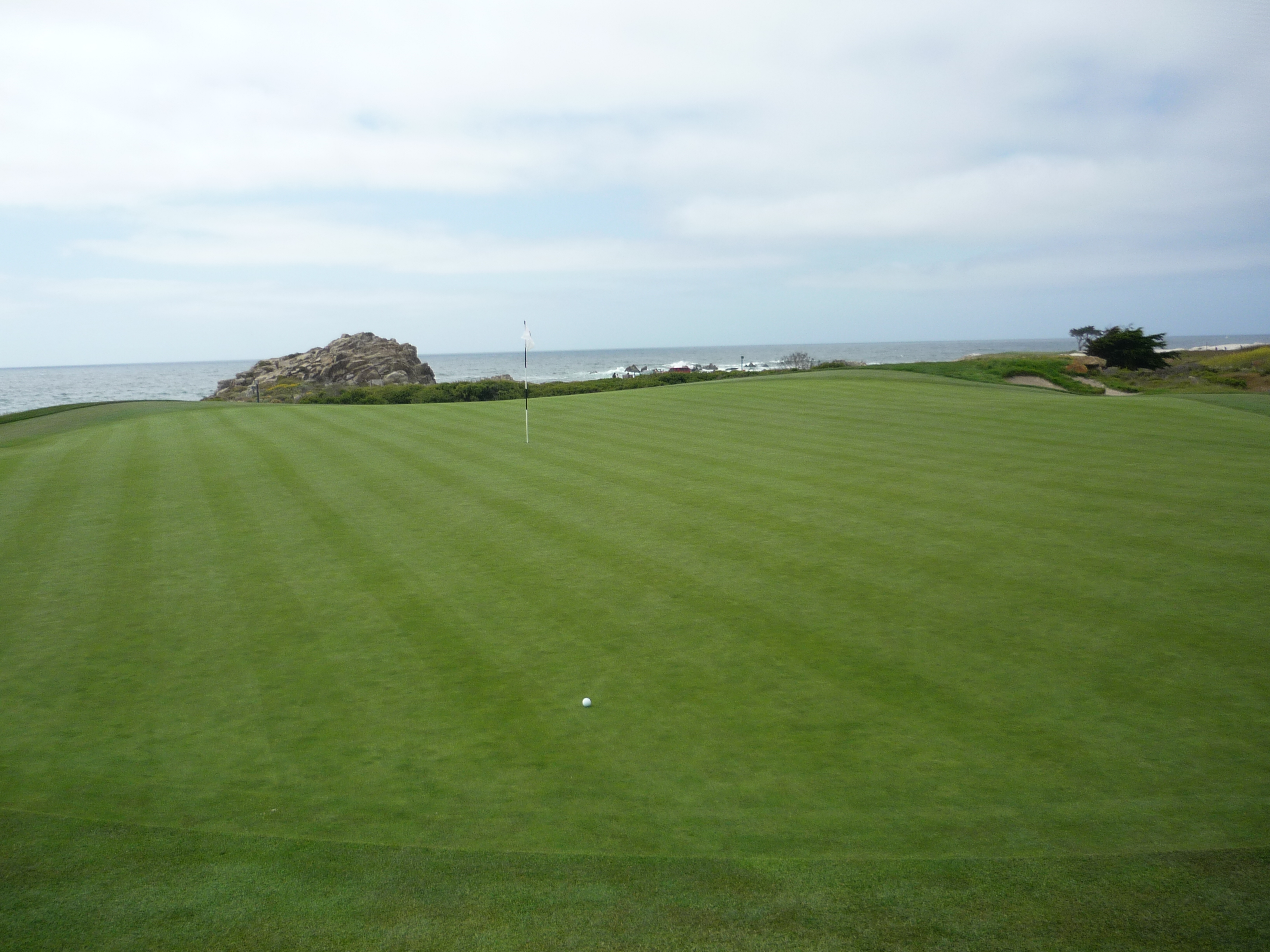
Hole 9 – 187 yards – Par 3
We played through a group on this hole so I didn’t get a close photo of the green. Below is the tee shot. It is a two-tiered green surrounded by bunkers. This pin can use the second tier as a backstop. This is a great hole. I also liked the quirkiness of having three par three’s on the front nine.
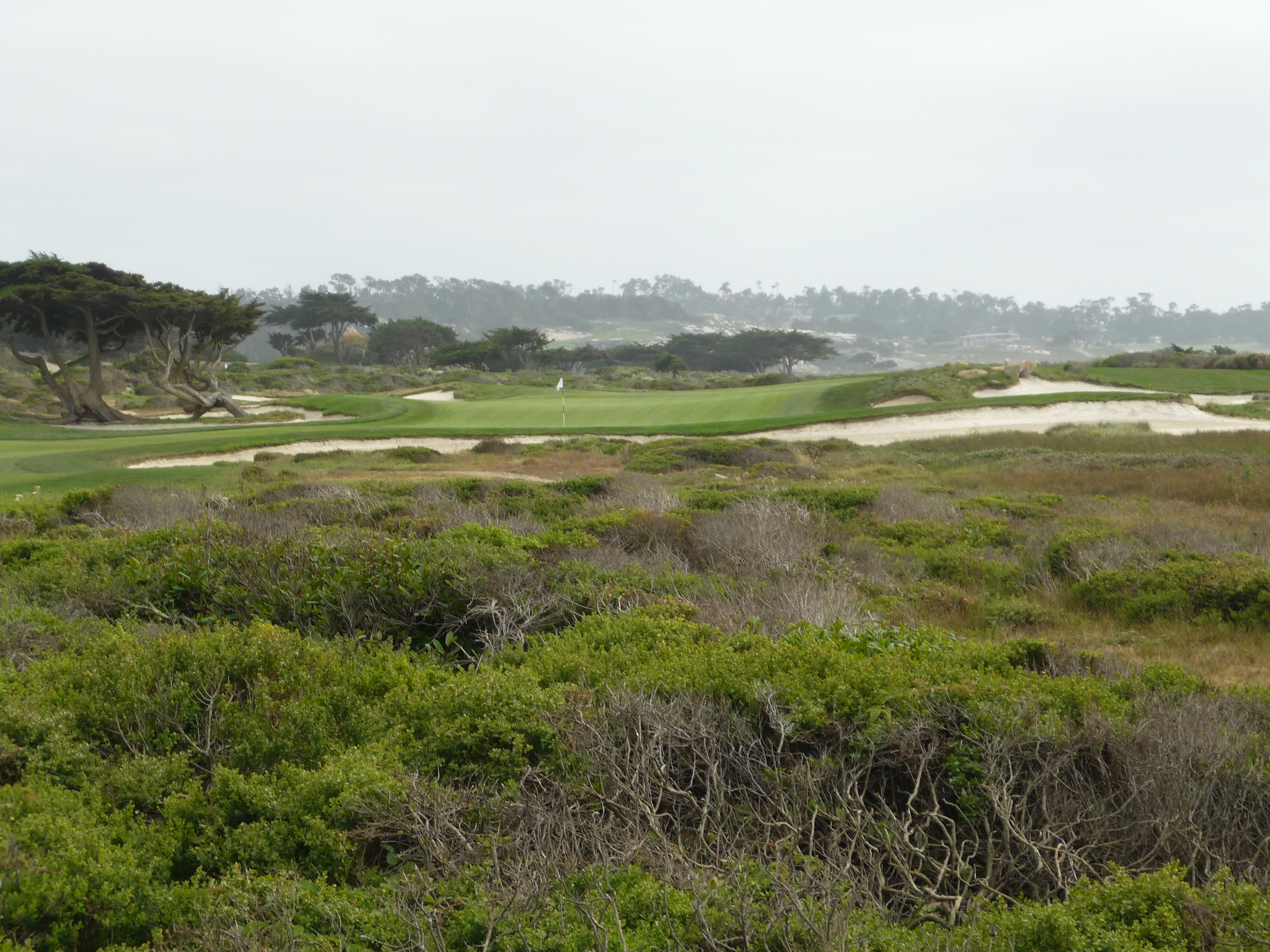
Hole 10 – 497 yards – Par 5
The fairway here is a mile wide. I challenge you to miss it! Take a big rip at this one.
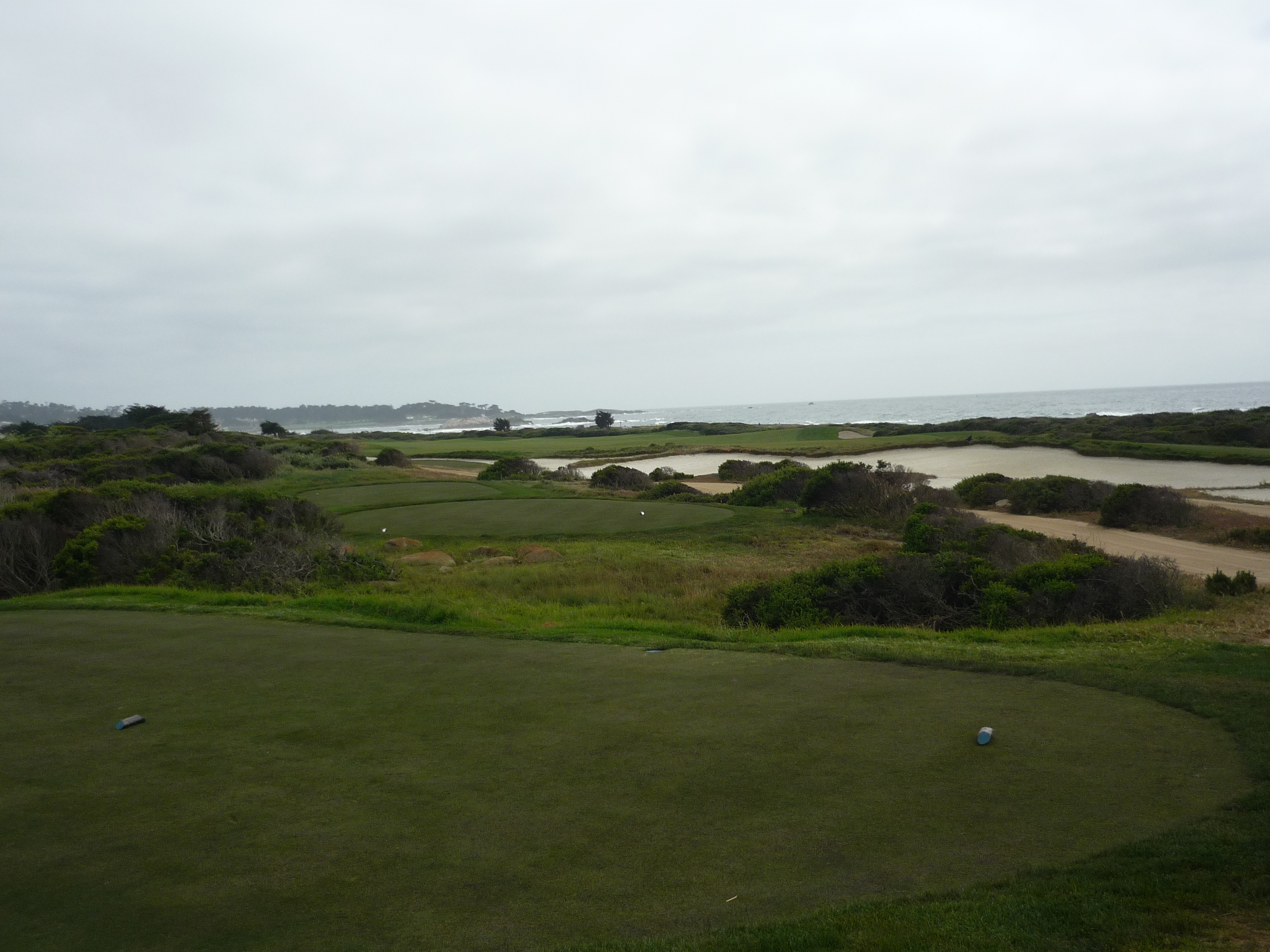
The second shot bends back around to the left. It is a tough shot to hit the green. I hit a layup down the left side for position.
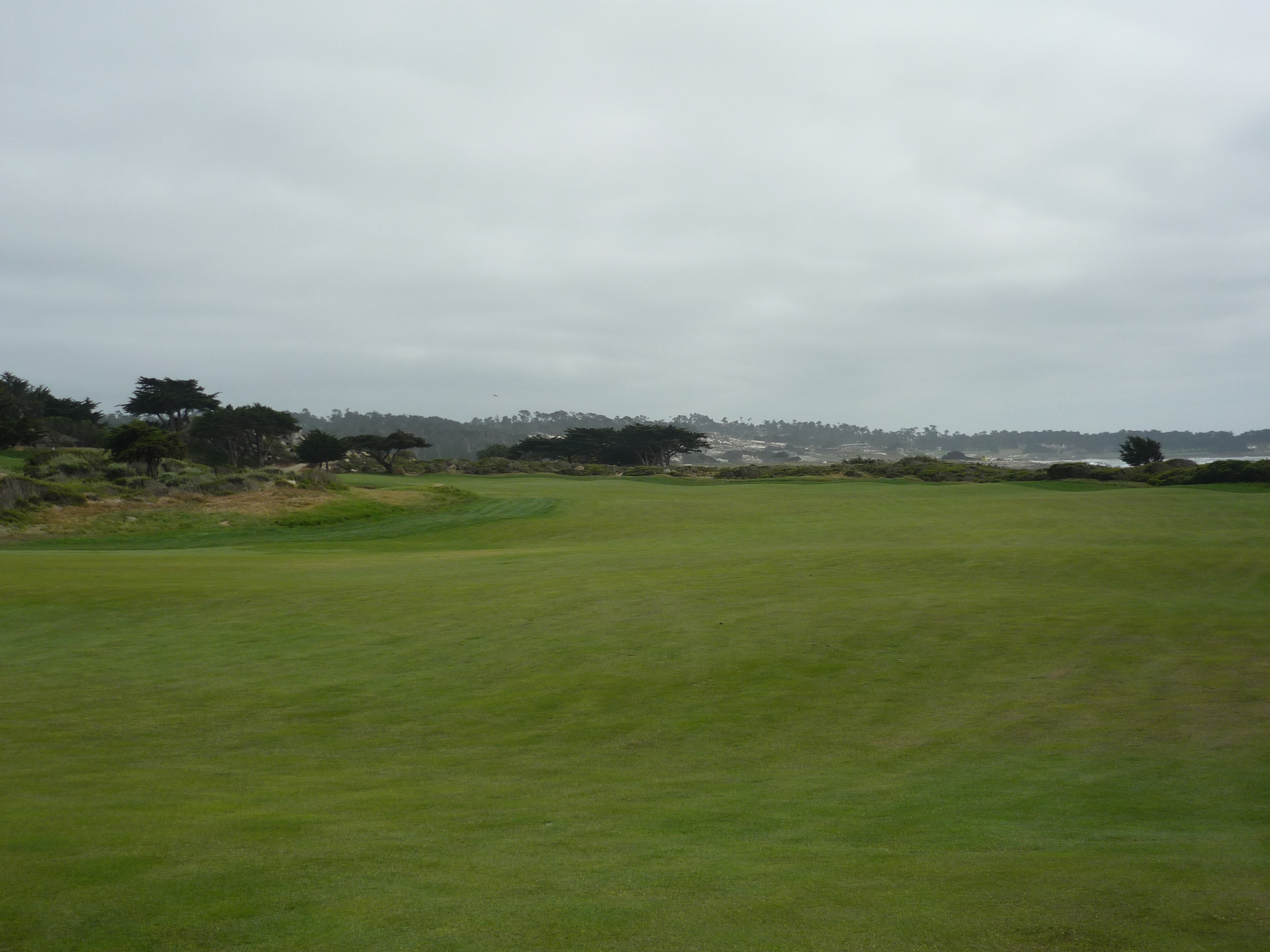
The third shot plays uphill to a green protected by a deep bunker in the front. Trust your yardage and carry it far enough.
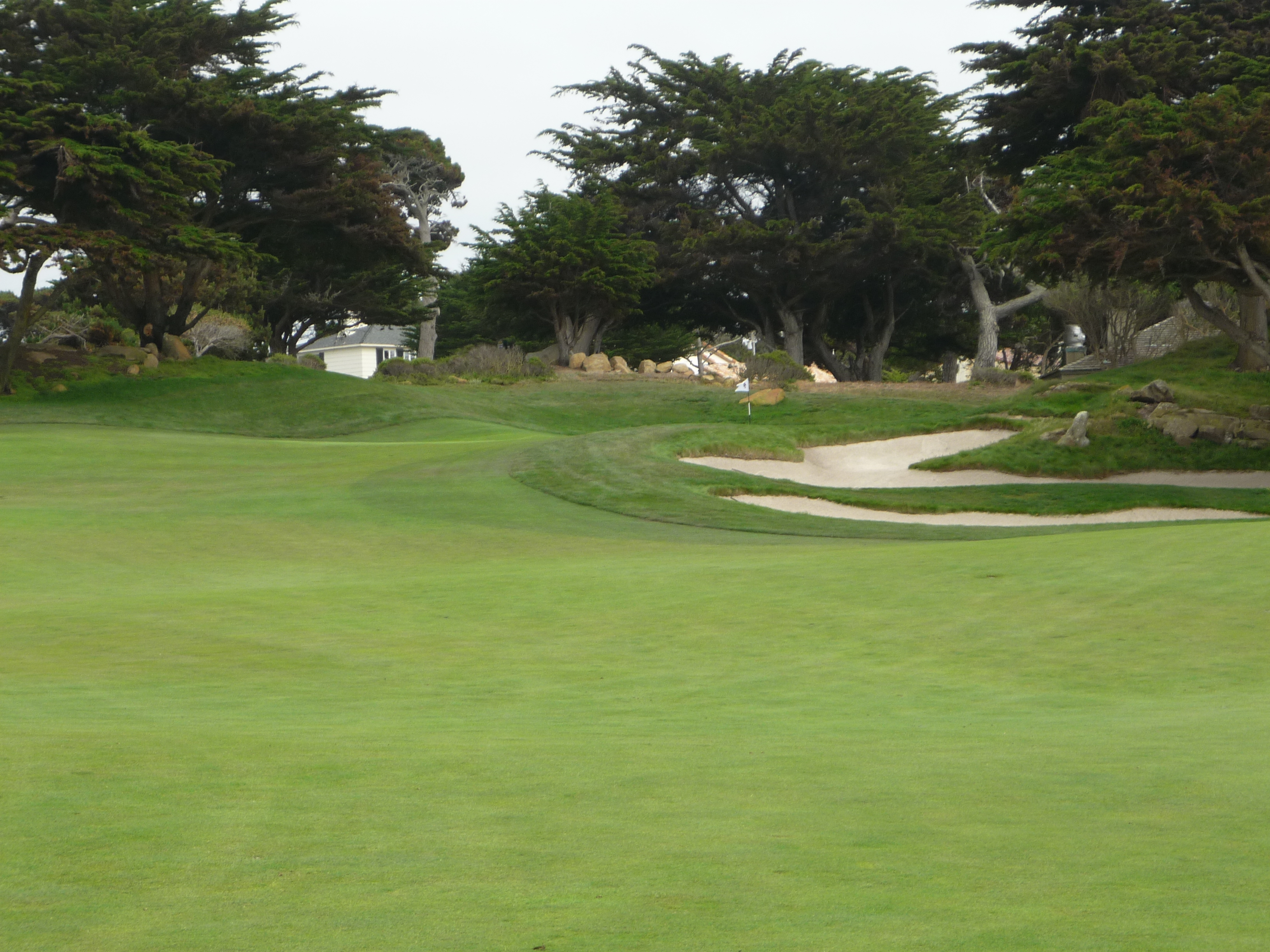
This green has plenty of wavy slopes. It almost has three tiers. It is very important to know where the pin is for your approach shot.
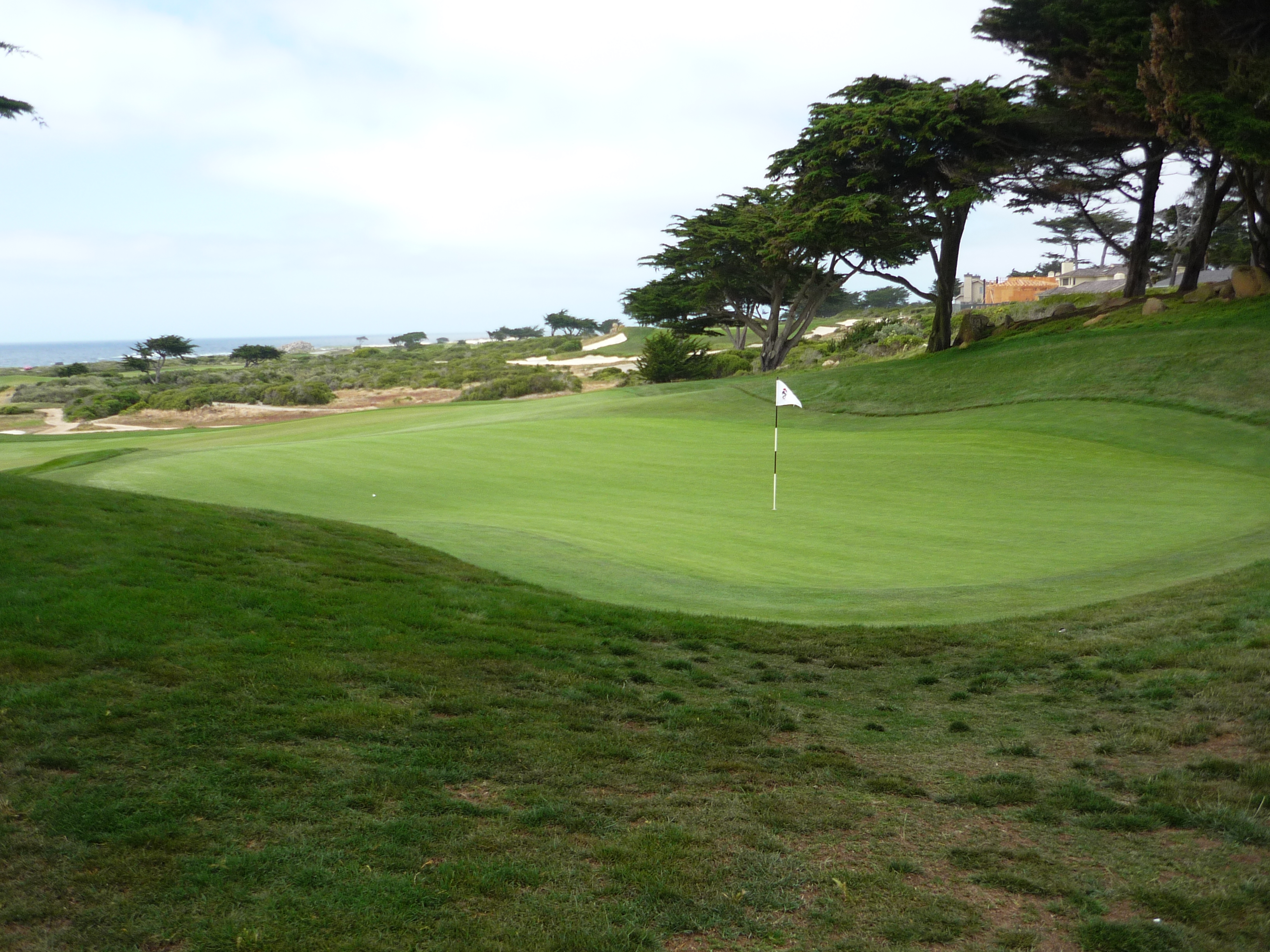
Hole 11 – 170 yards – Par 3
The eleventh is the signature hole on the Shore Course. Just look at this view. Cypress Point is off in the distance to the right and Spyglass Hill is up on the hill straight away. After you pick your jaw up from the floor, just look at the hole itself. The bunkering and green set among the trees is all world.

Here is a closer look. This hole is so good.
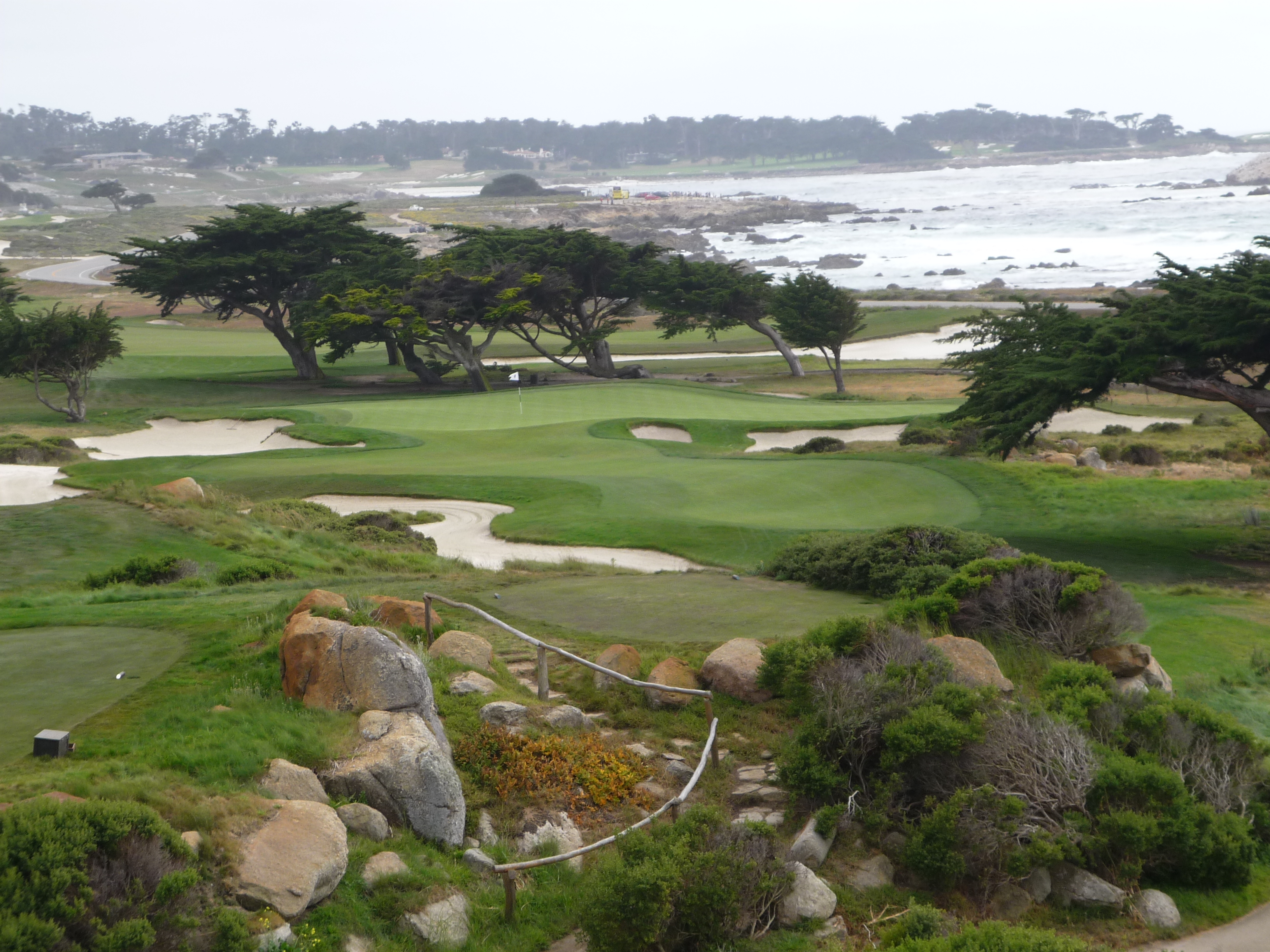
The green has a little bit of slope to it, but the middle is relatively flat.
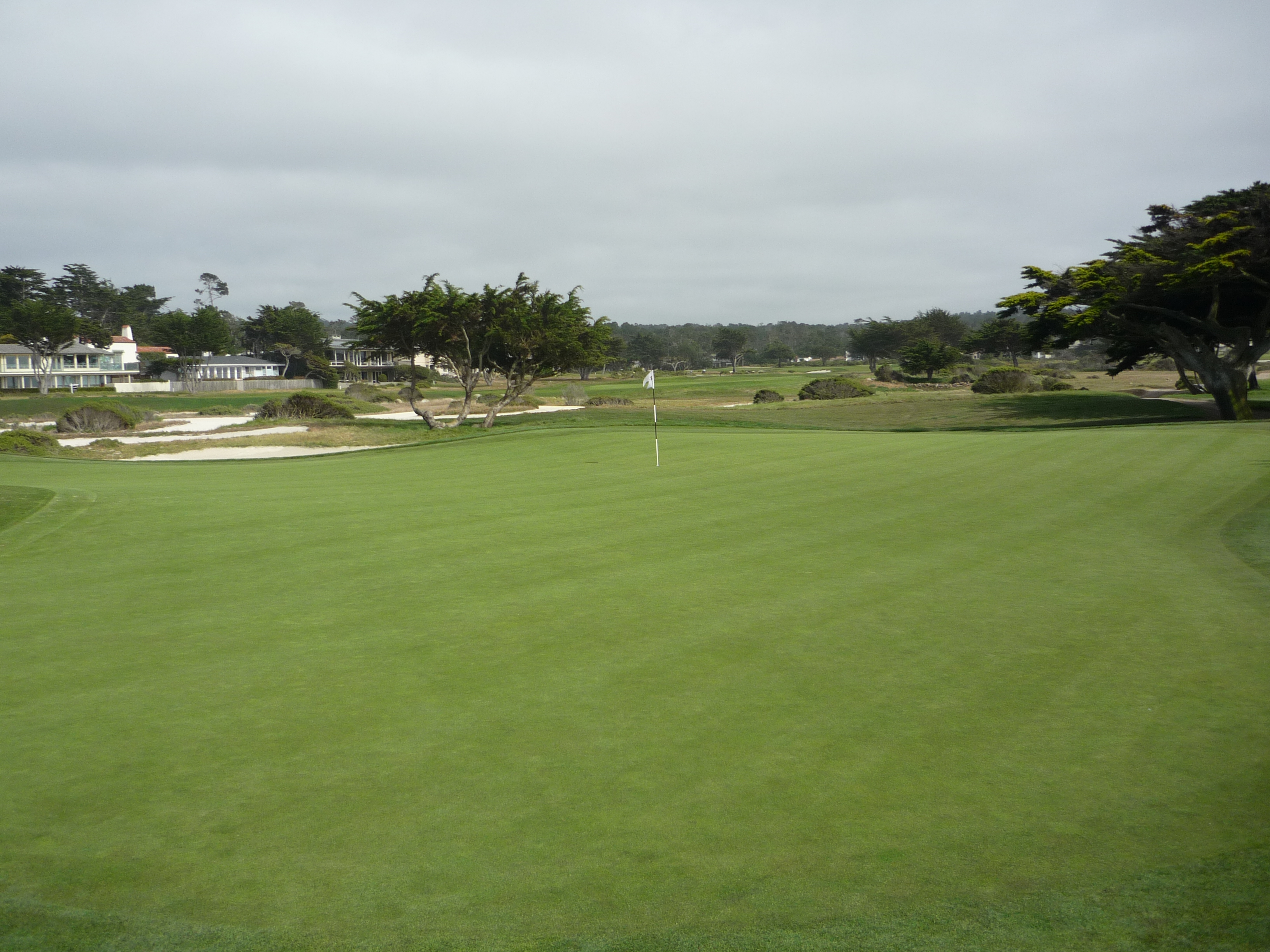
Hole 12 – 586 yards – Par 5
This hole is a monster. All I can advise you to do here is hit your best drive of the day and enjoy the views.
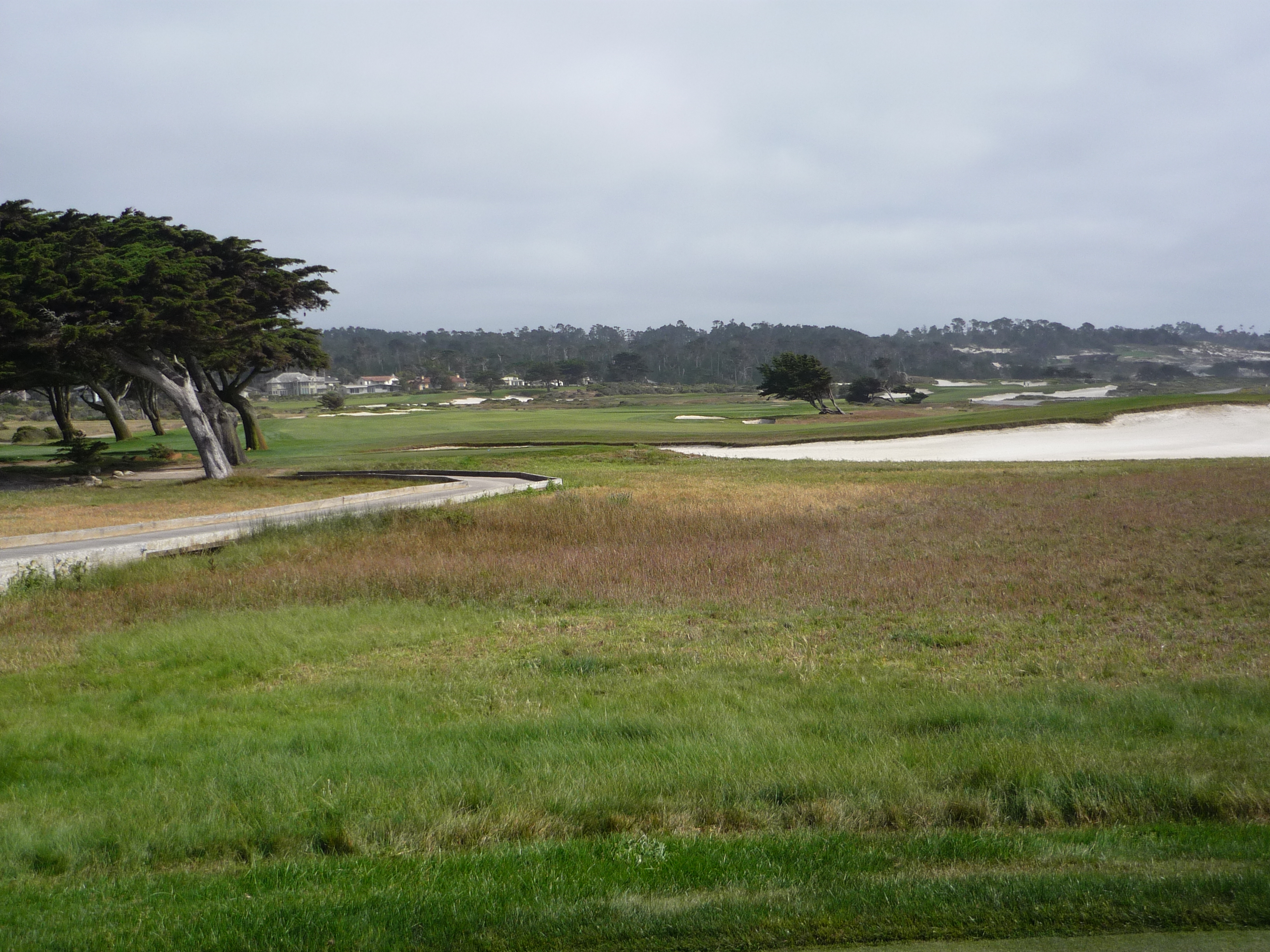
Here is a look at the blurry second shot. It plays slightly uphill through plenty of sand.
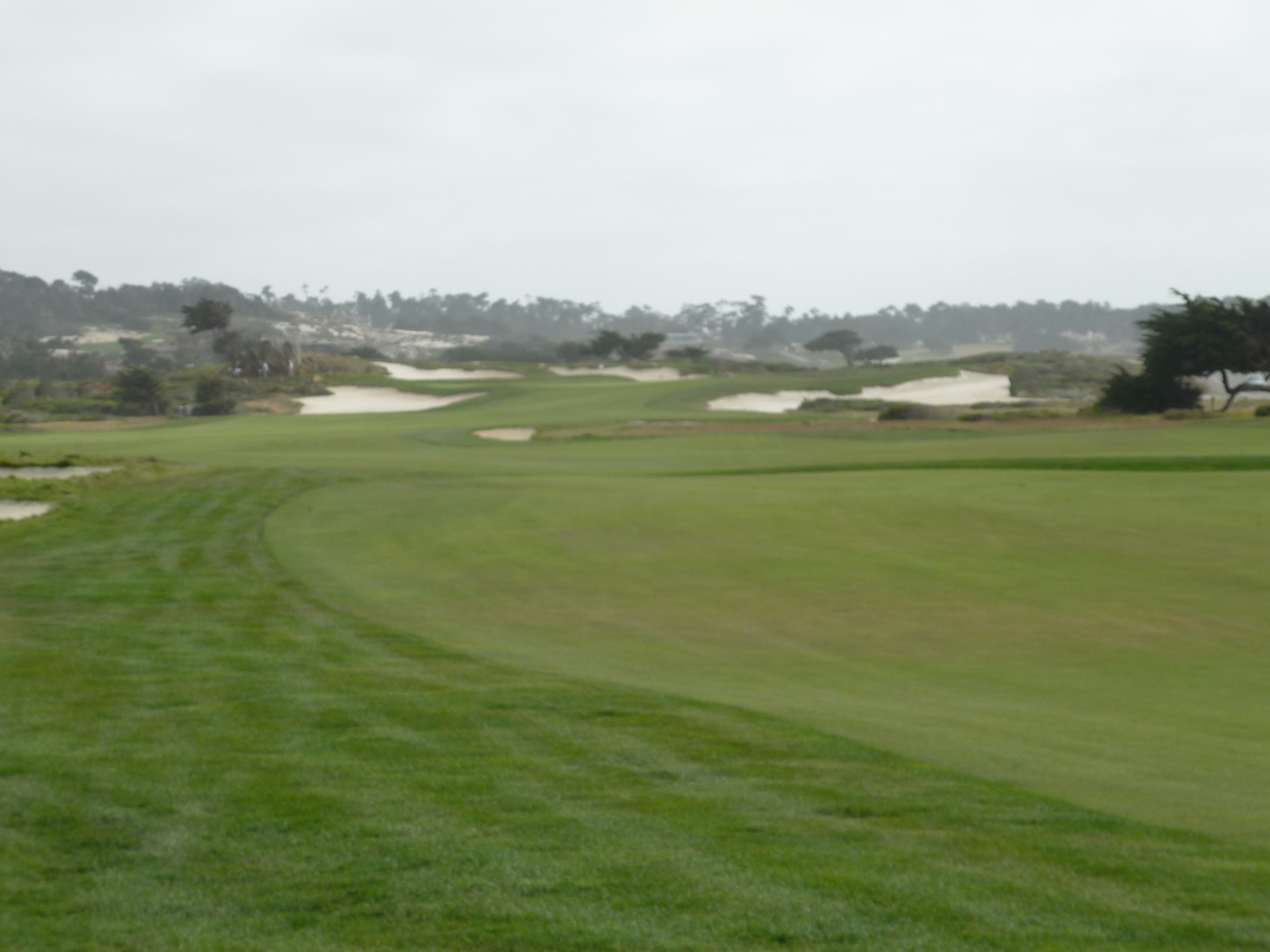
When you get closer and have a shorter club the sand becomes less of a concern. There is no trouble at all in front of the green.
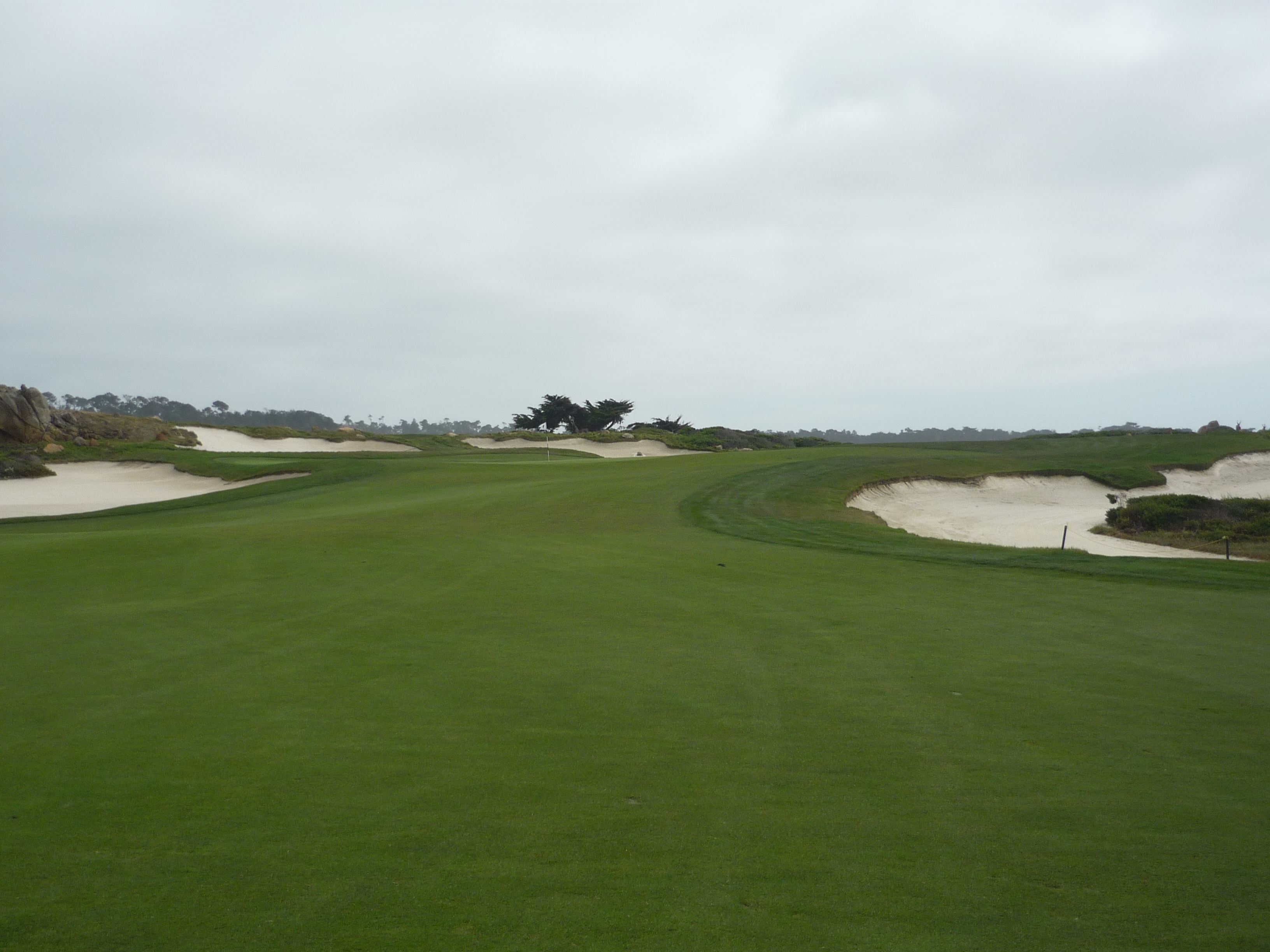
Here is a closer look at the putting surface.
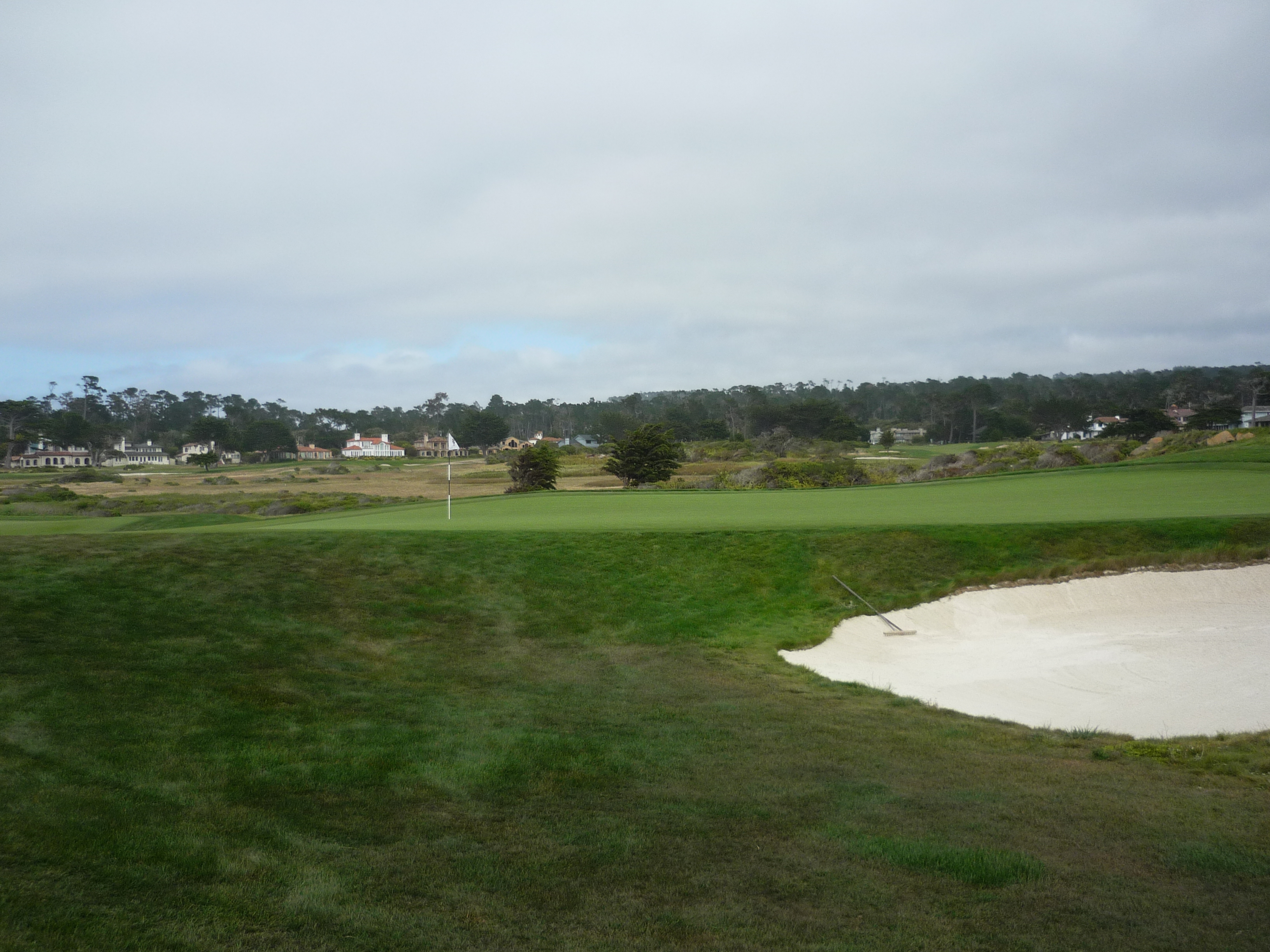
Hole 13 – 373 yards – Par 4
With no tree-lined fairways, you need to be sure in your lines. Straightaway from this view is the way to go.
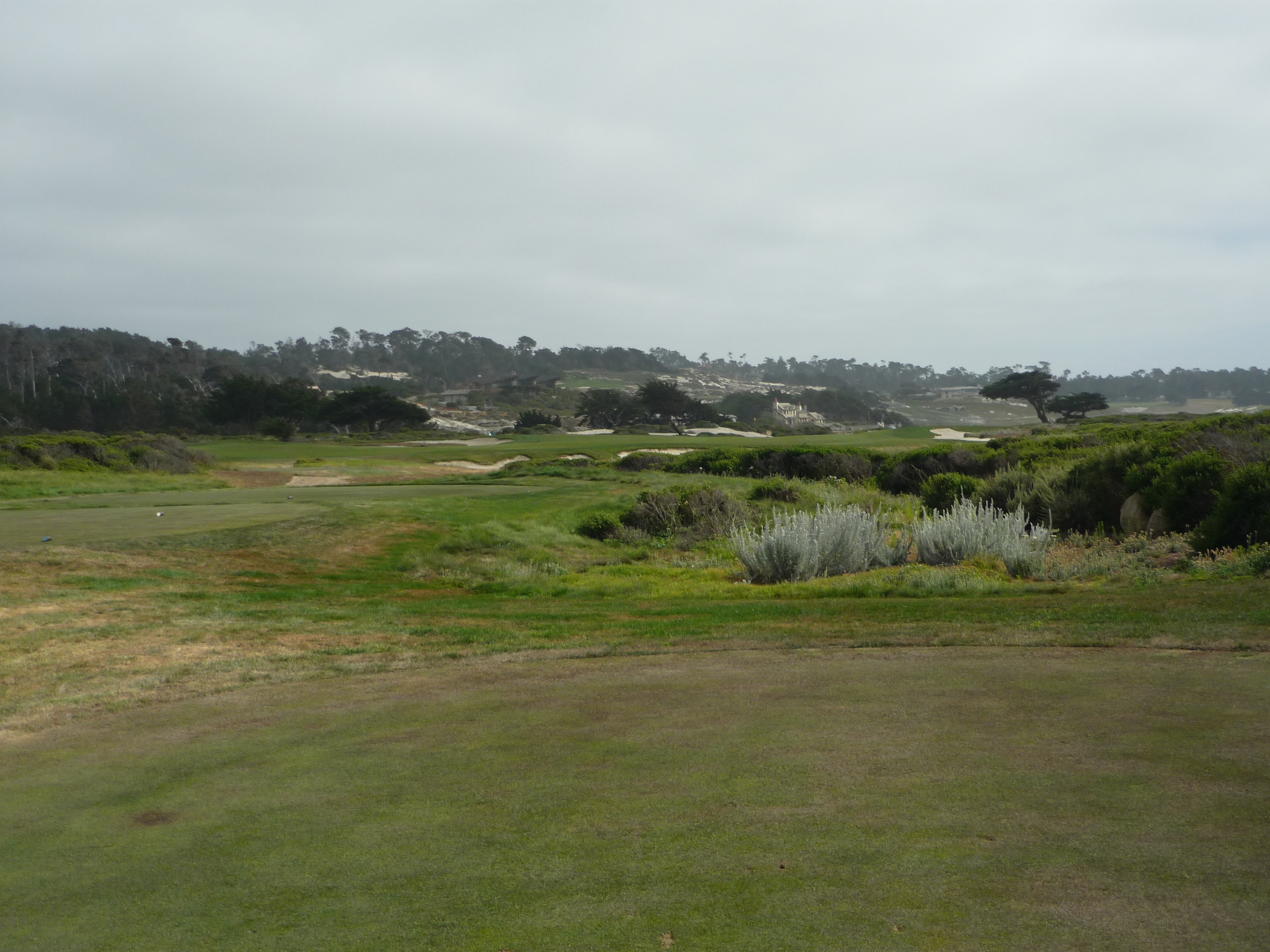
If you turn around on the tee this is the view you get. Pretty special.
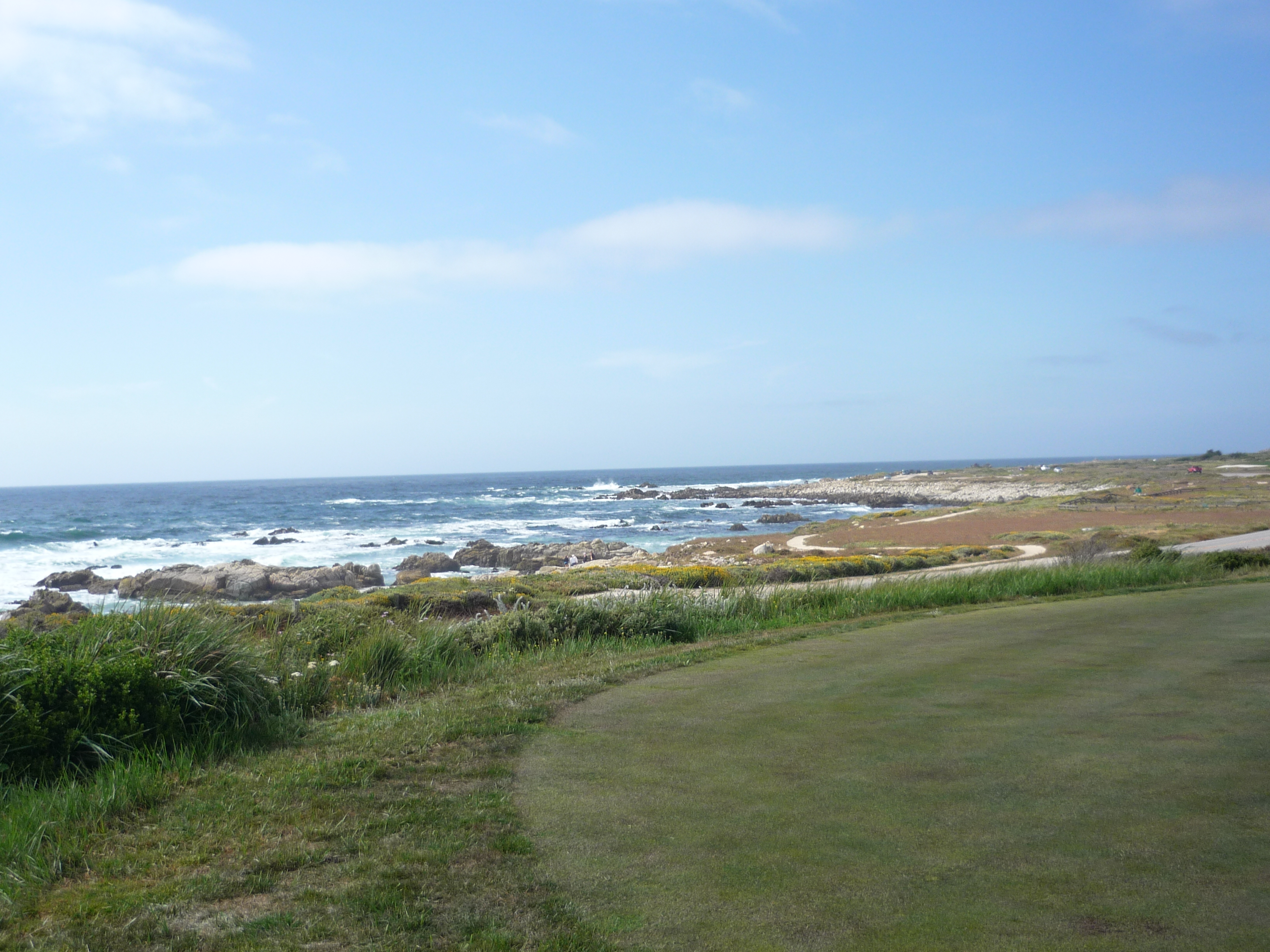
The green is expansive as you can see below.
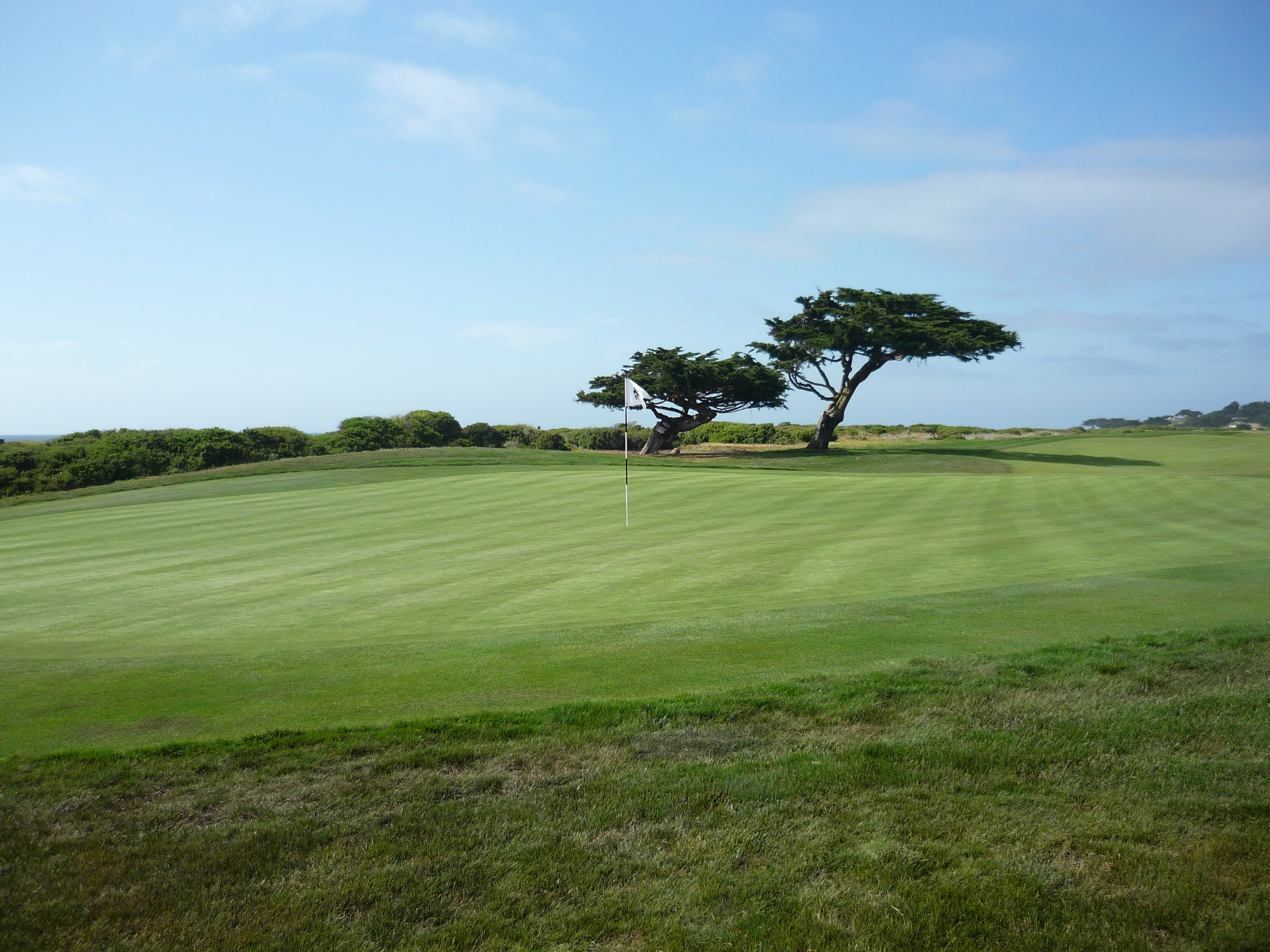
If you look just off the green you can see Bird Rock where hundreds of seals gather. It is a great spot to stop and check out if you are riding along 17-Mile Drive.
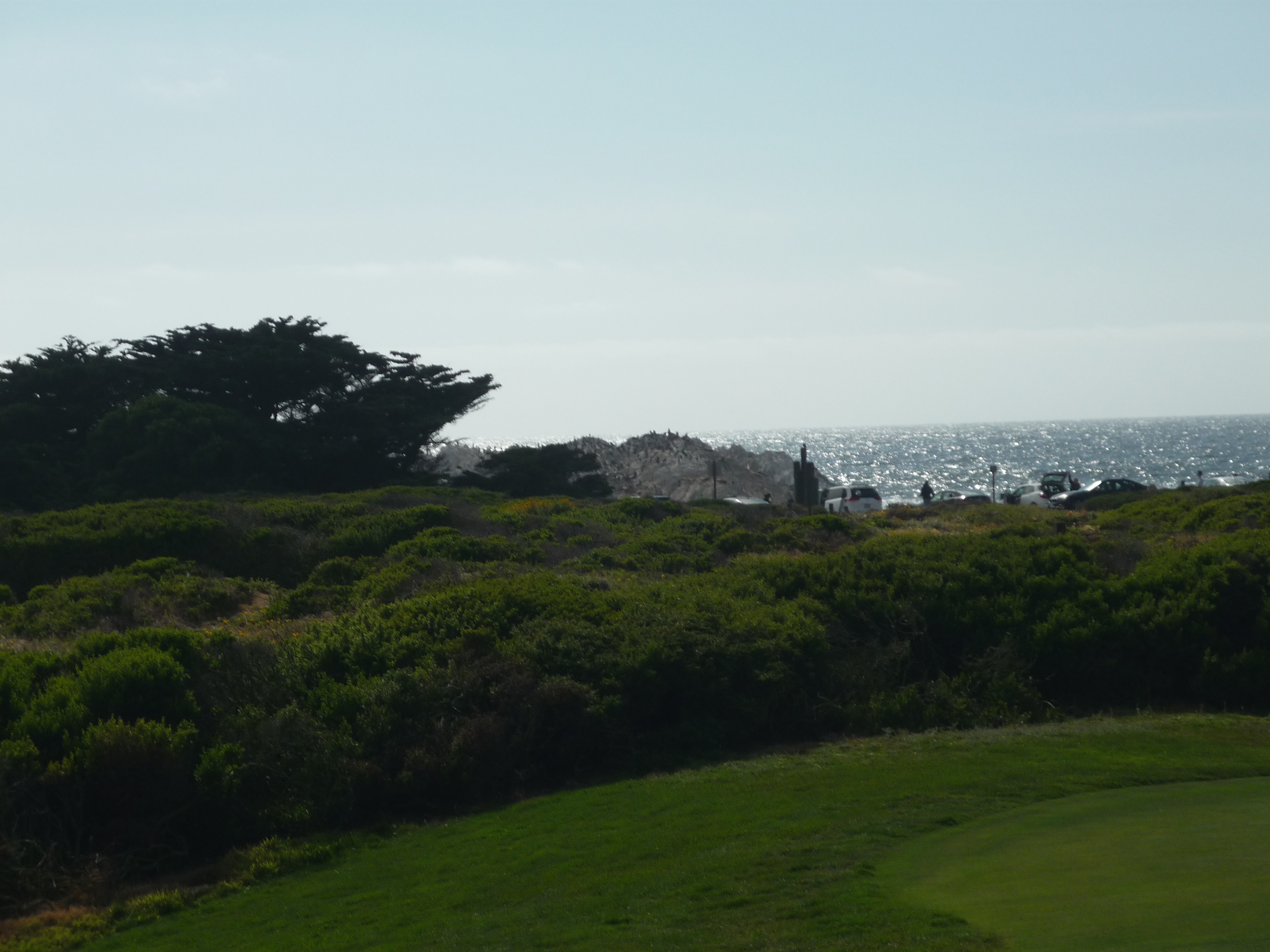
Hole 14 – 166 yards – Par 3
This is the first uphill par three we have seen. Playing over a large waste area you may need another club. The green is pretty big, but you need to avoid the bunkers guarding it.
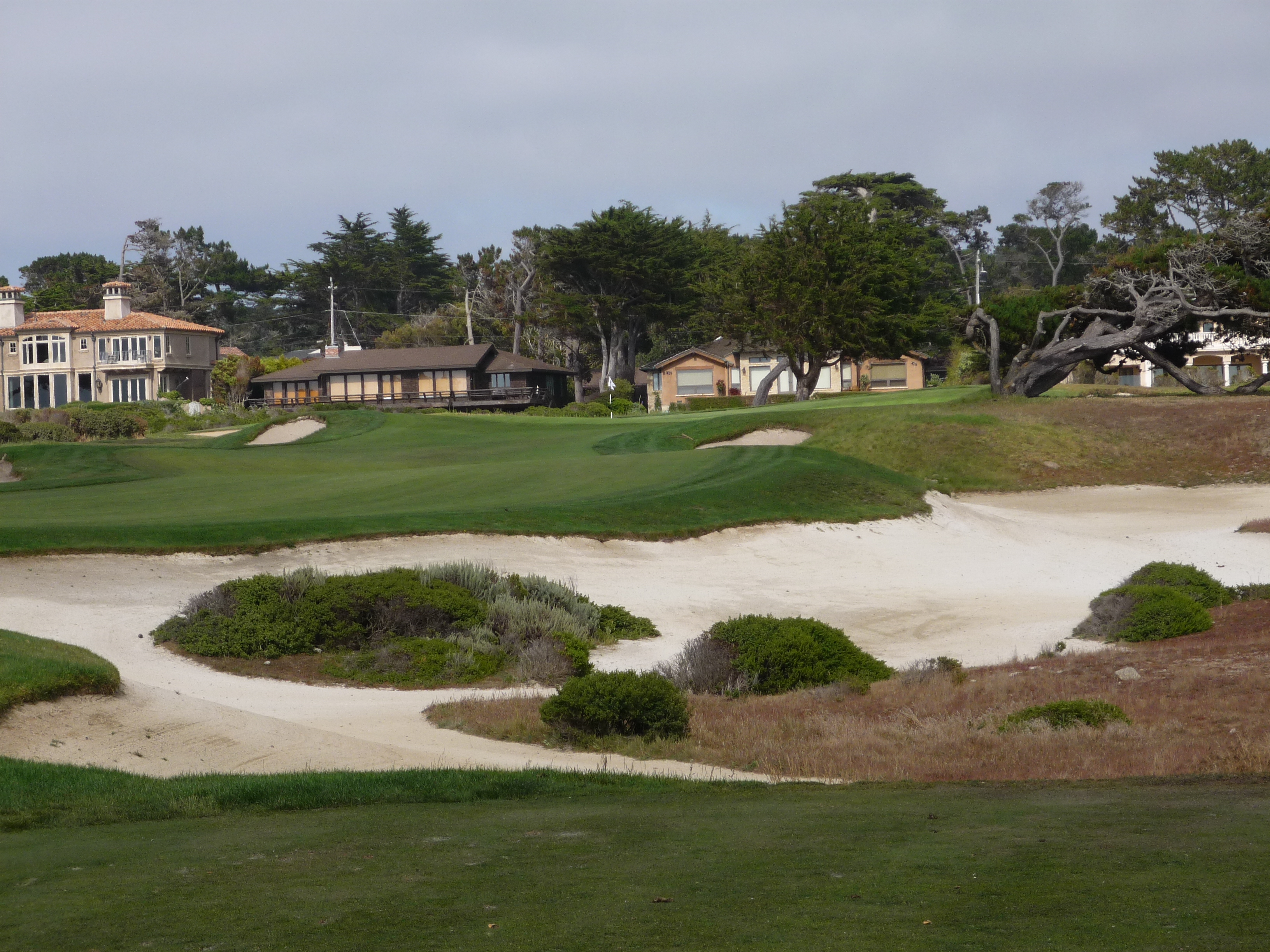
Below you can see the shape of the putting surface.

Hole 15 – 393 yards – Par 4
This is a wonderful hole. It angles out to the right off the tee with your line being over the left side of the big bunker you see right off this tee. You can pound one here.
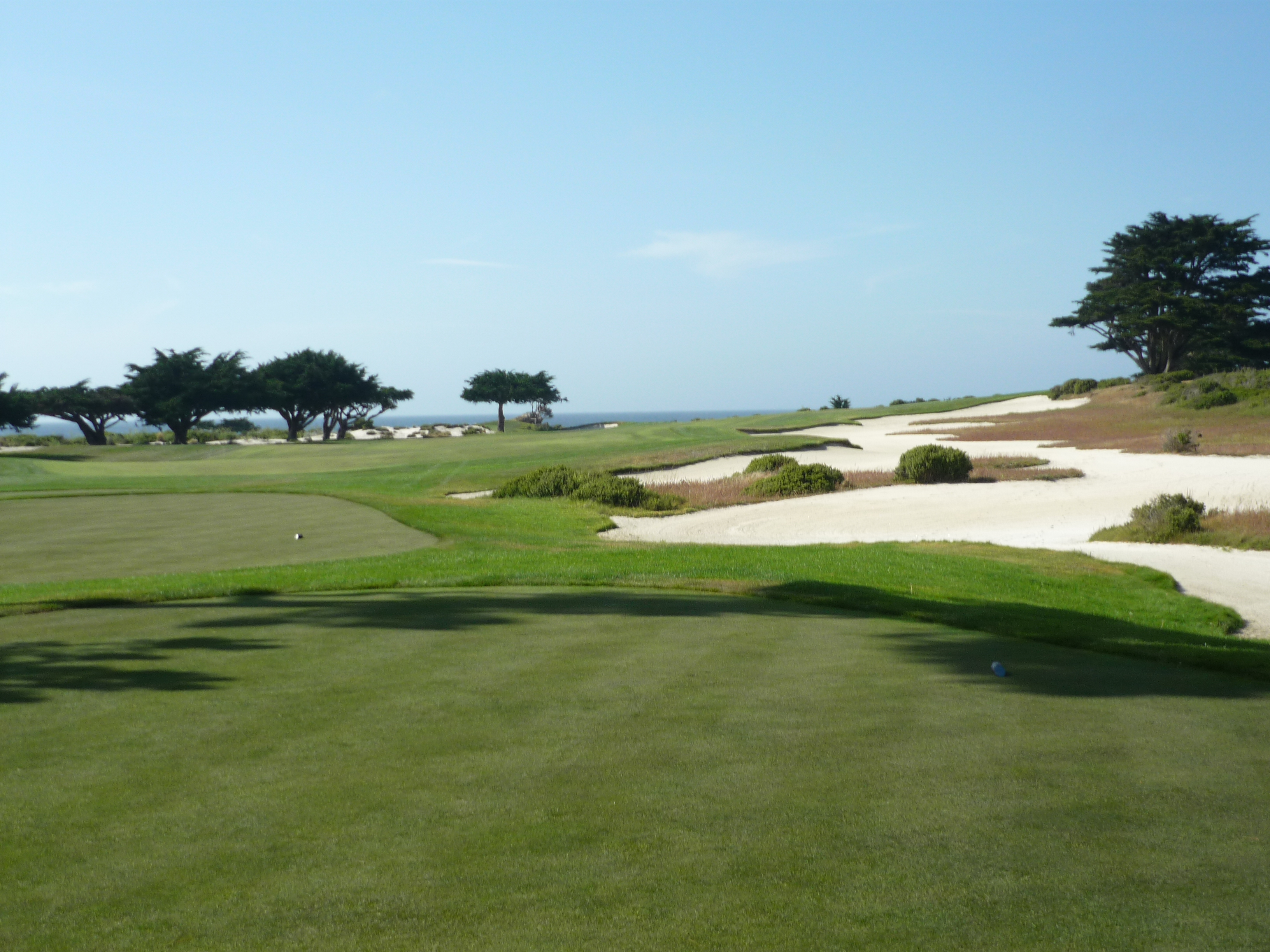
The green perched as if it sitting next to the ocean. It is more of an optical illusion than anything.
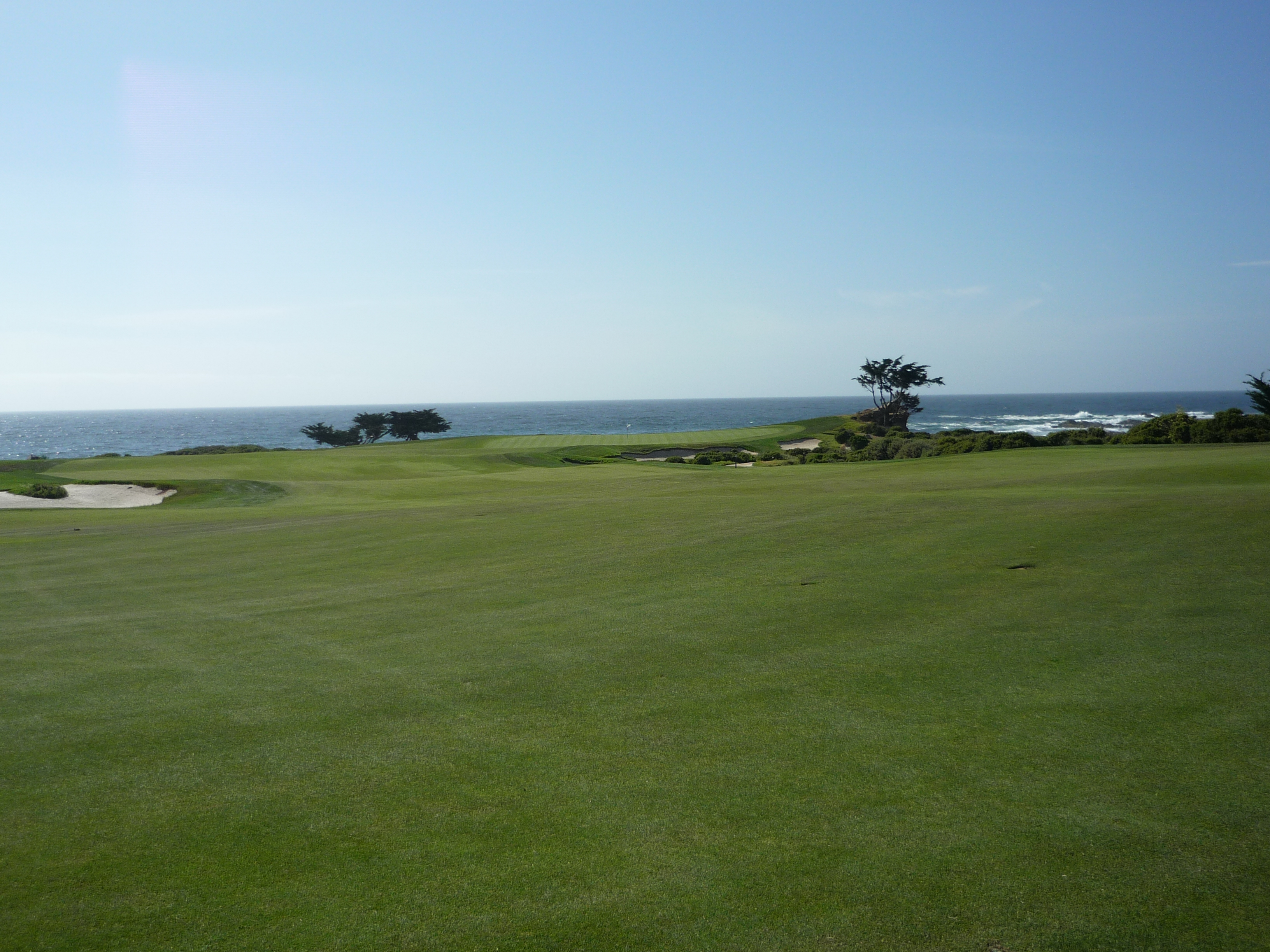
Here is a closer look to show you the large green. The size of the green allows you to maneuver your ball in the wind. A small green would be overly penal.
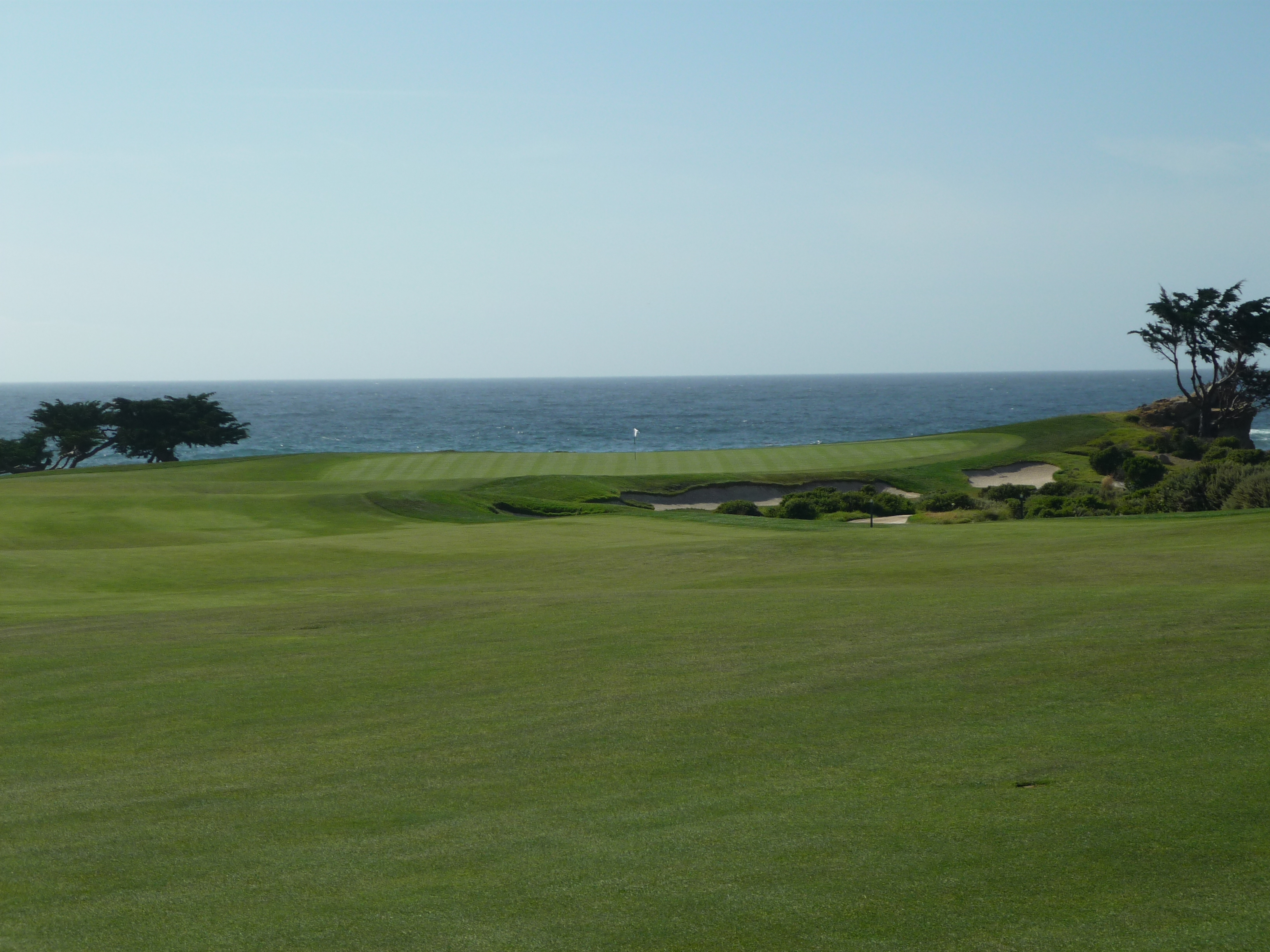
I just liked this photo below and wanted to show you.
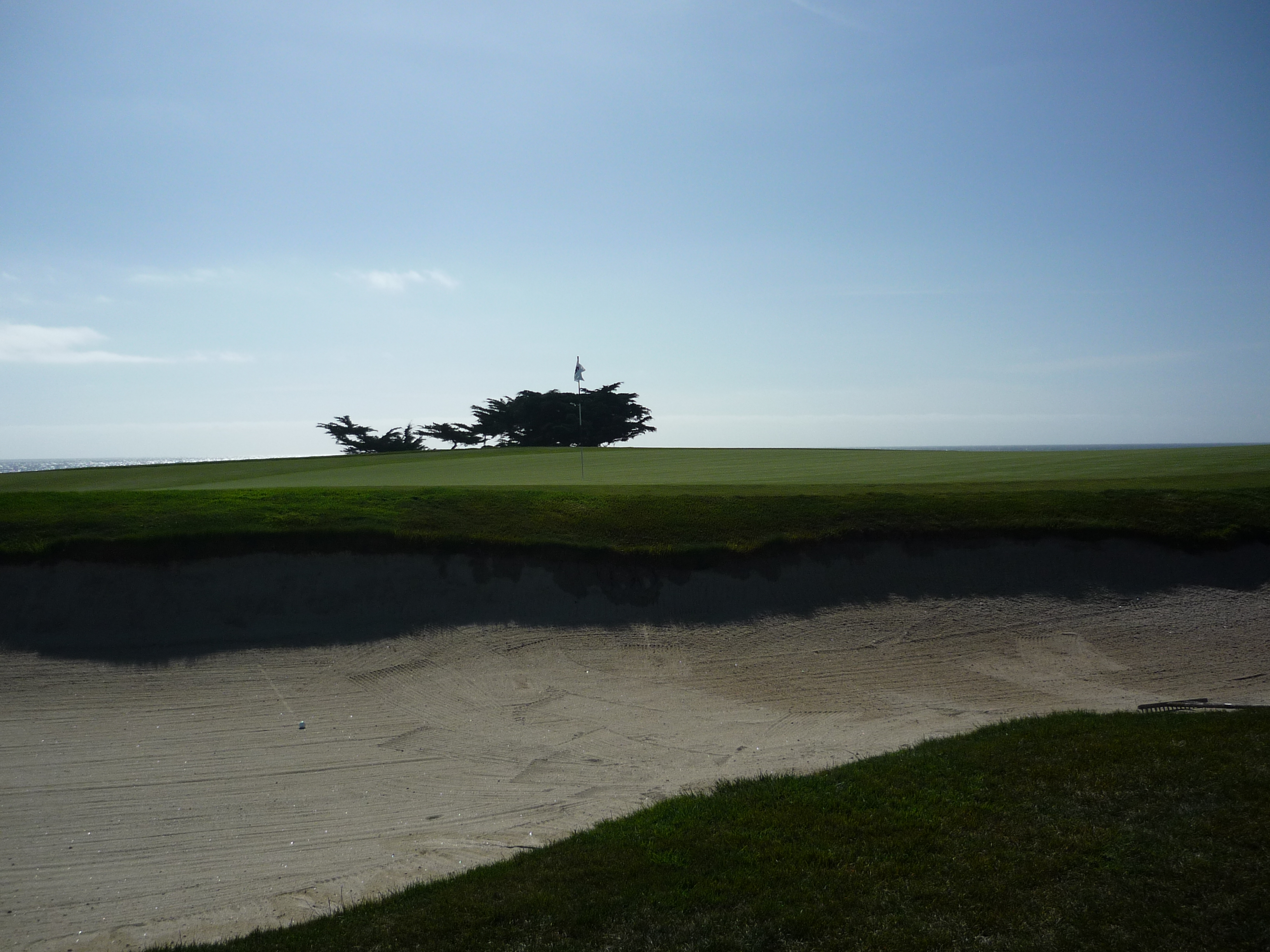
Here is a wider angle to show the sloping of the green.
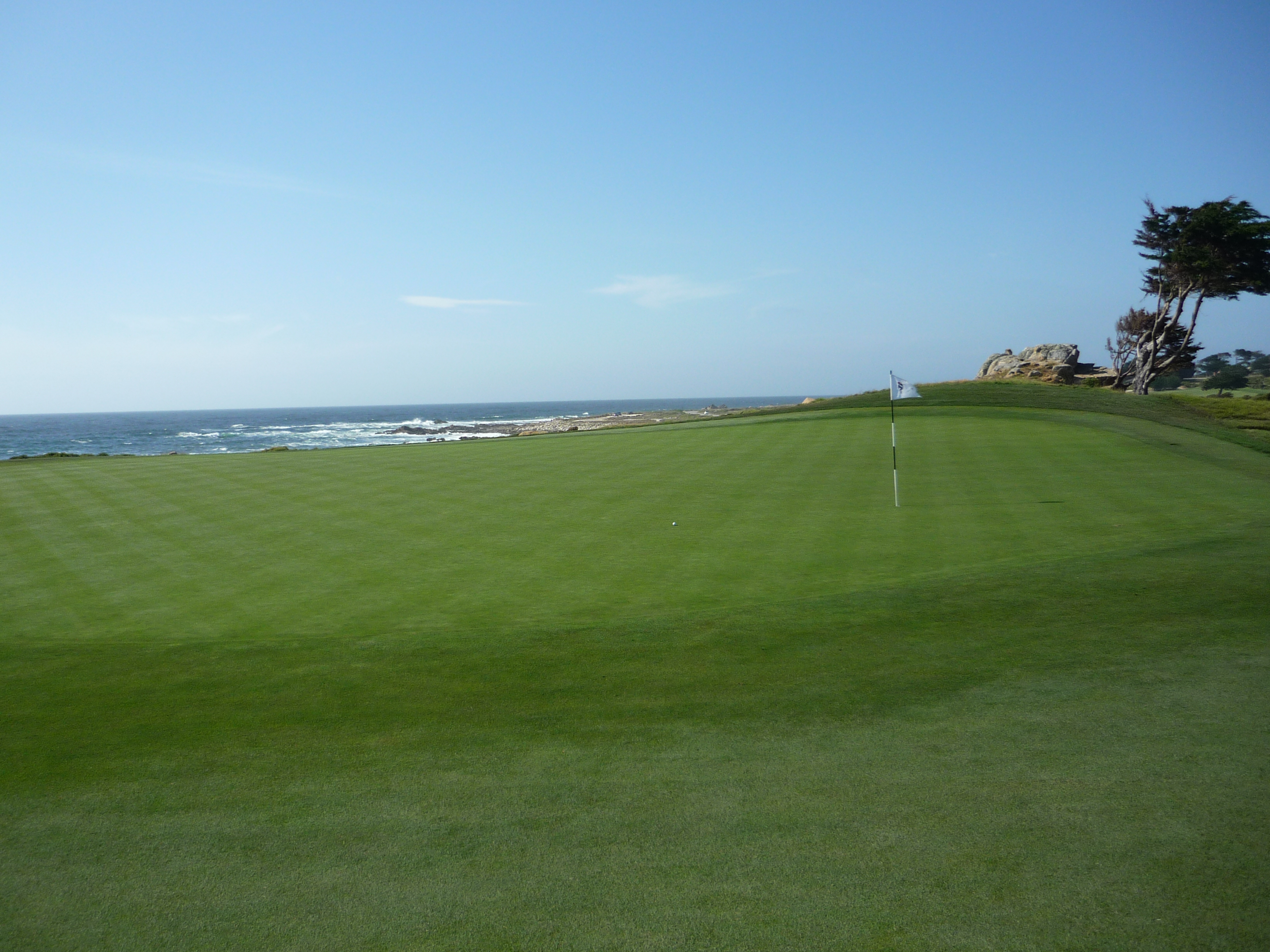
Hole 16 – 483 yards – Par 5
I first wanted to show you the view from this tee. You’ve got to stop and smell the roses sometimes.
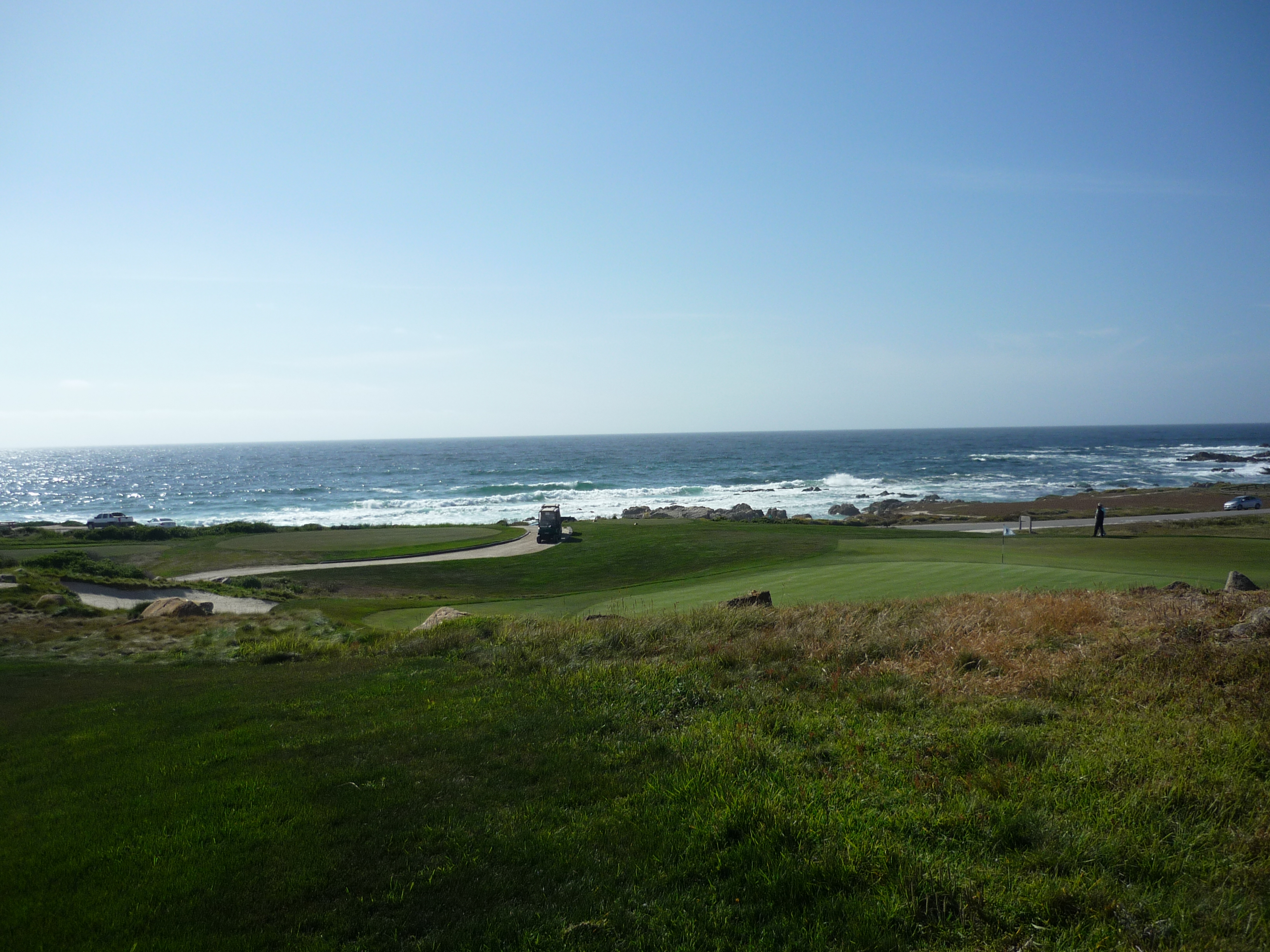
This is a big landing area. You can play any type of shot you prefer just make sure to hit the fairway.
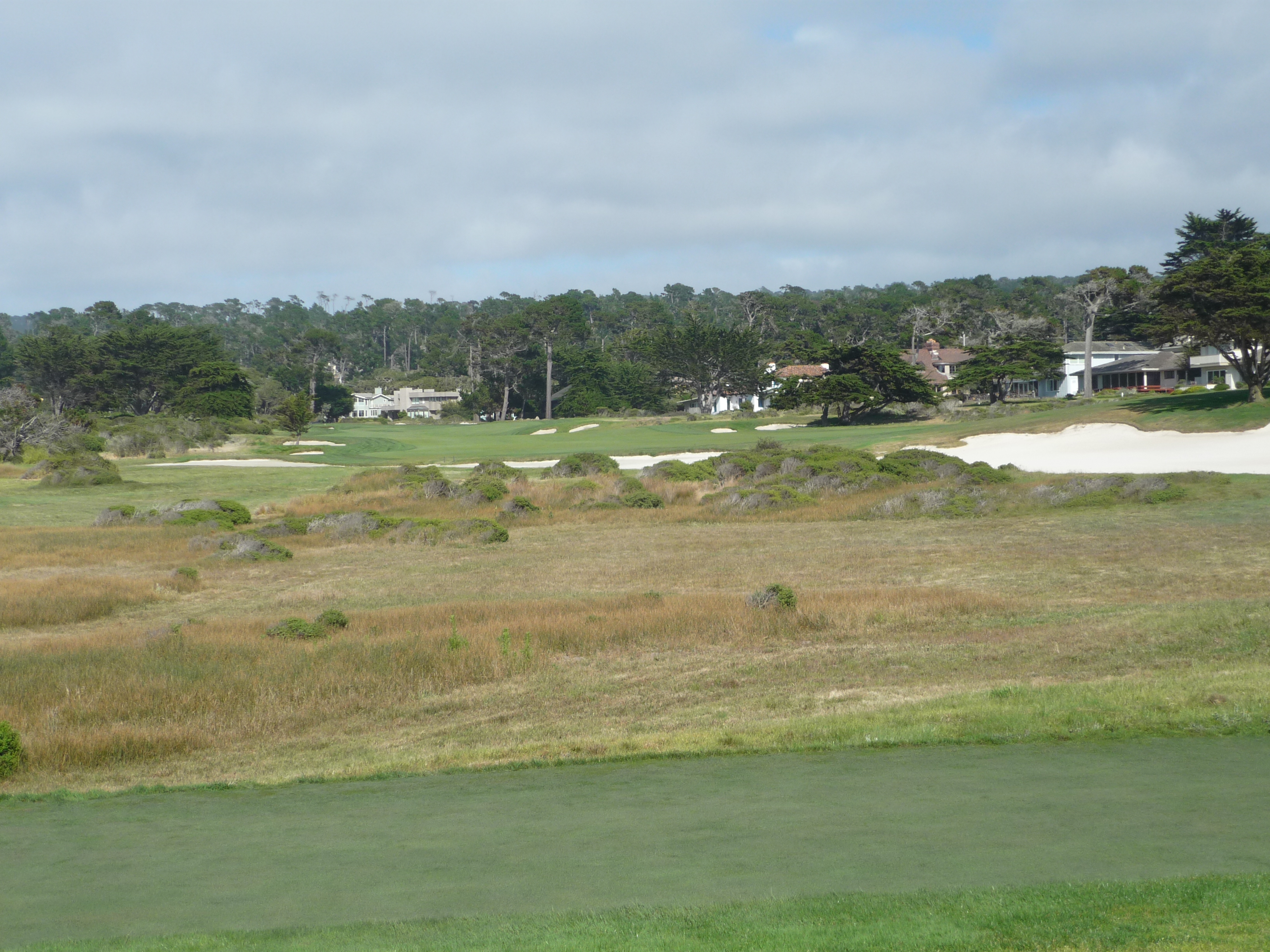
It’s a long second shot that is slightly uphill. It is tough to see the green in this photo.
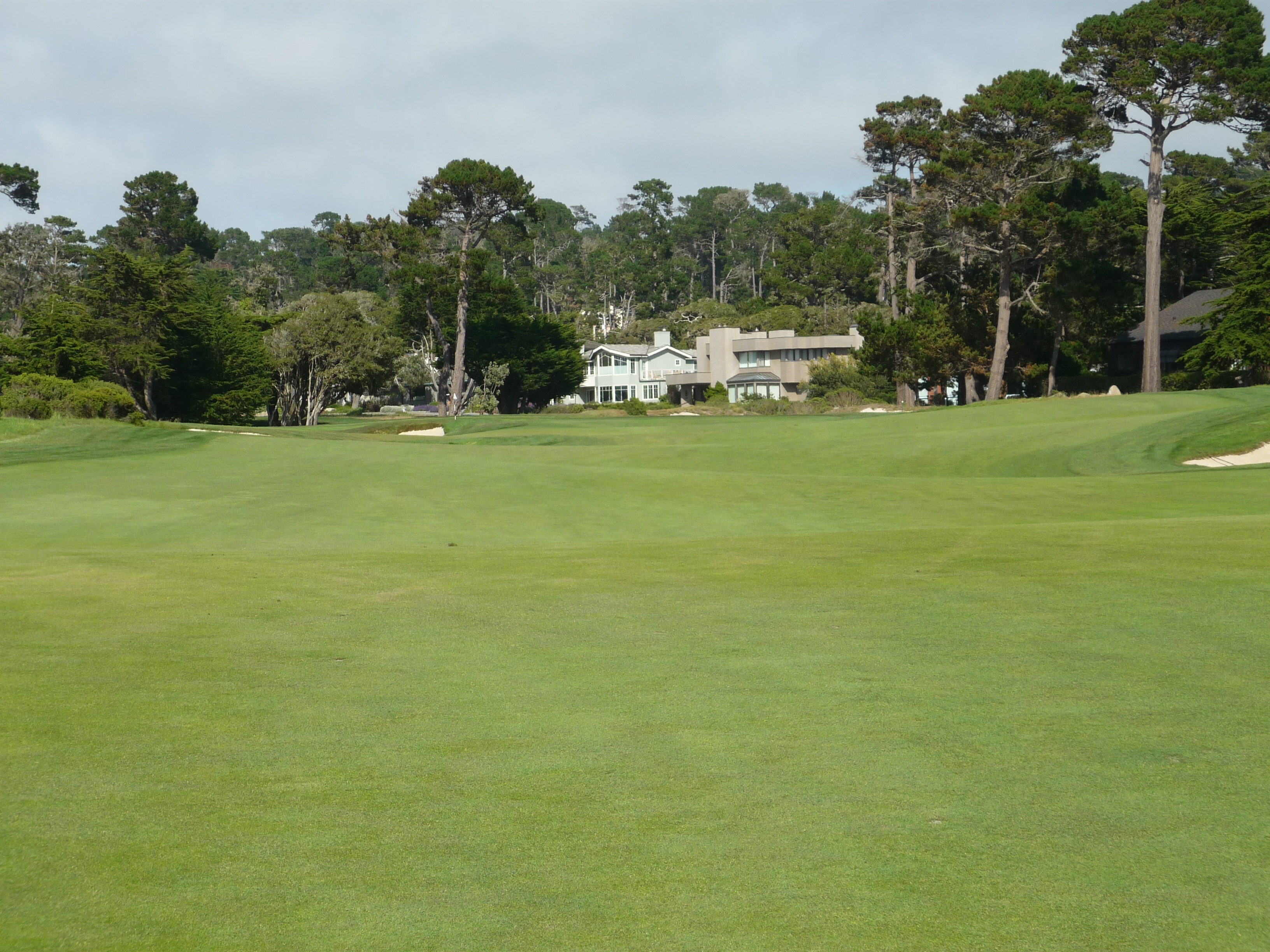
The green is guarded by some bunkers and rough. The green has a mild punchbowl quality to it. This is just a solid hole start to finish.
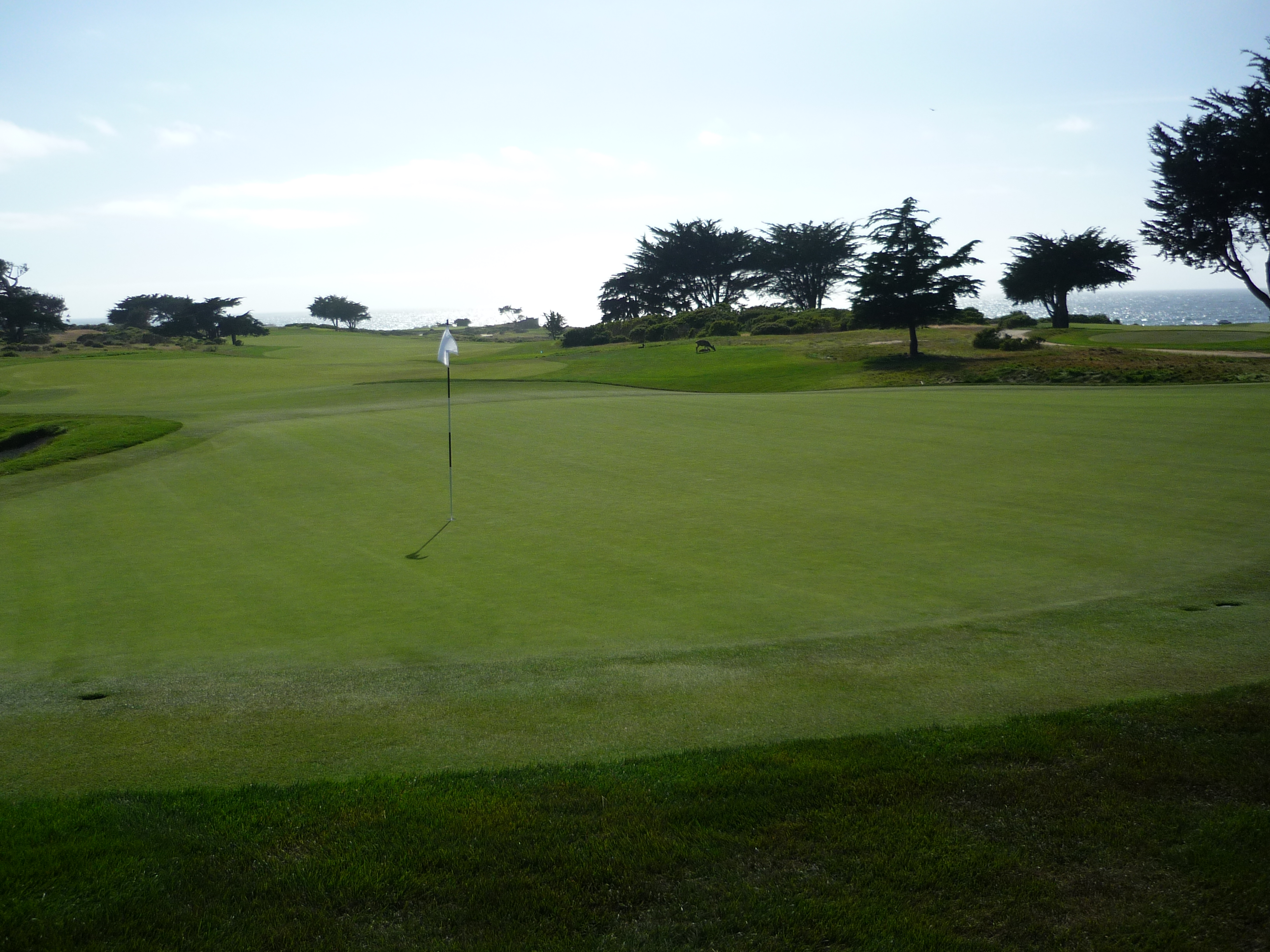
Hole 17 – 429 yards – Par 4
The tee shot here bends slightly to the right. You want to keep it away from the right side because of the large bunker. I didn’t take my own advice!

If you push one right this is what you will have to deal with. It’s a long shot, but if you get it running you can get the ball on the green. The thing I like about Mike Strantz is that he always gives you options. Most of the trouble he presents you with is visual. It makes you think more than penalize you explicitly. He was a master.
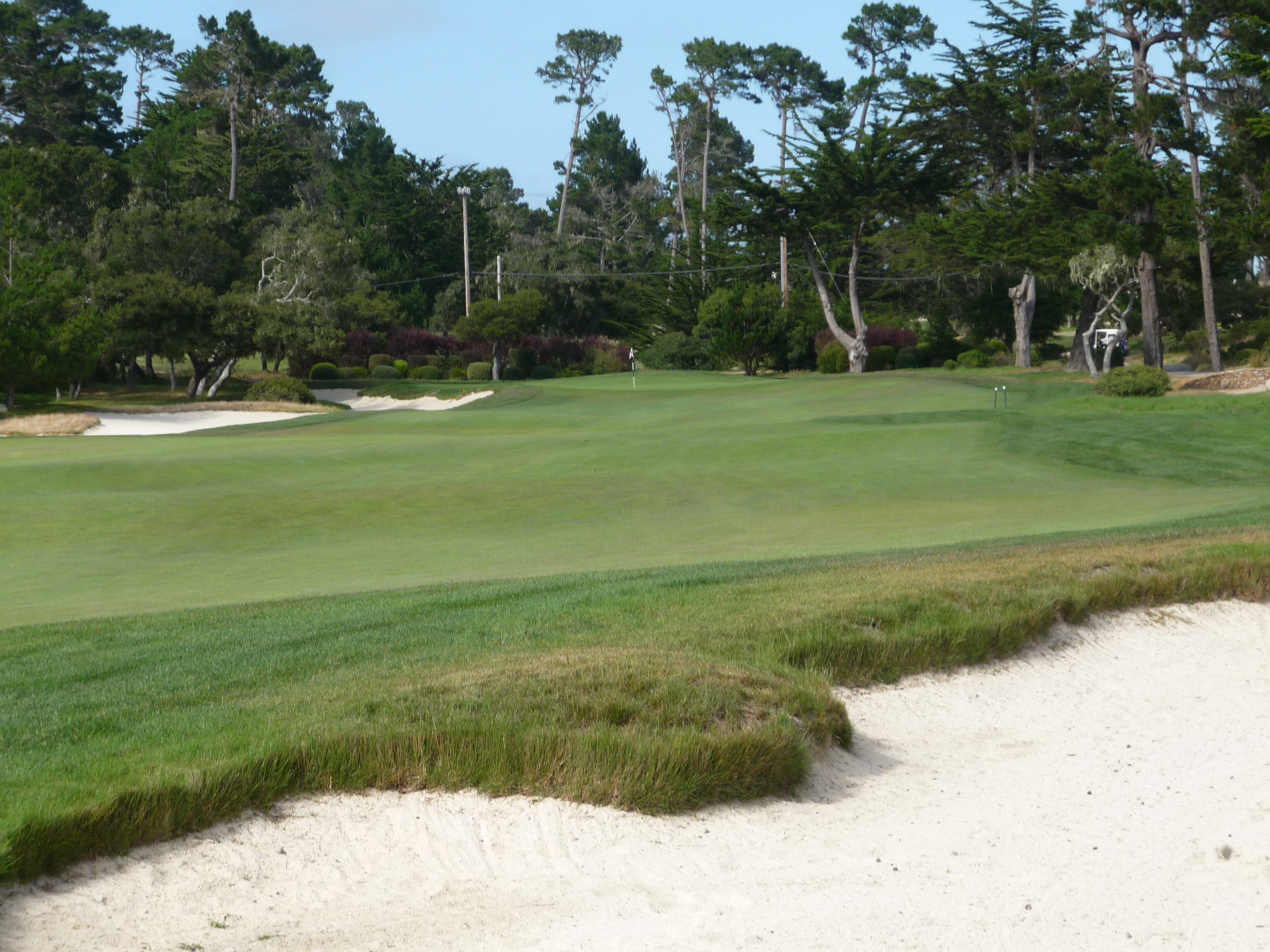
Here is the green and just another example of the immaculate conditioning.
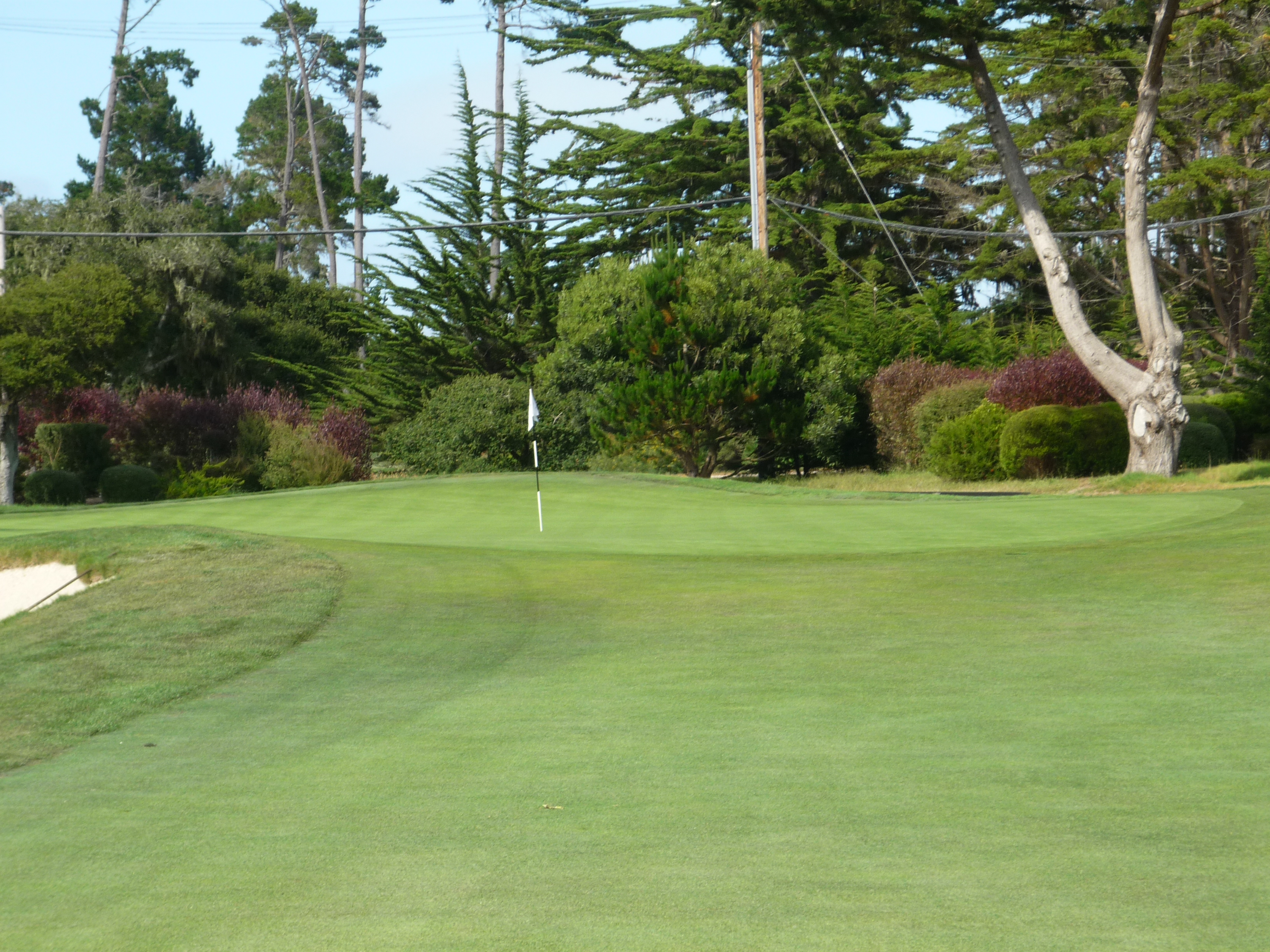
A wider angle further illustrates the conditions.
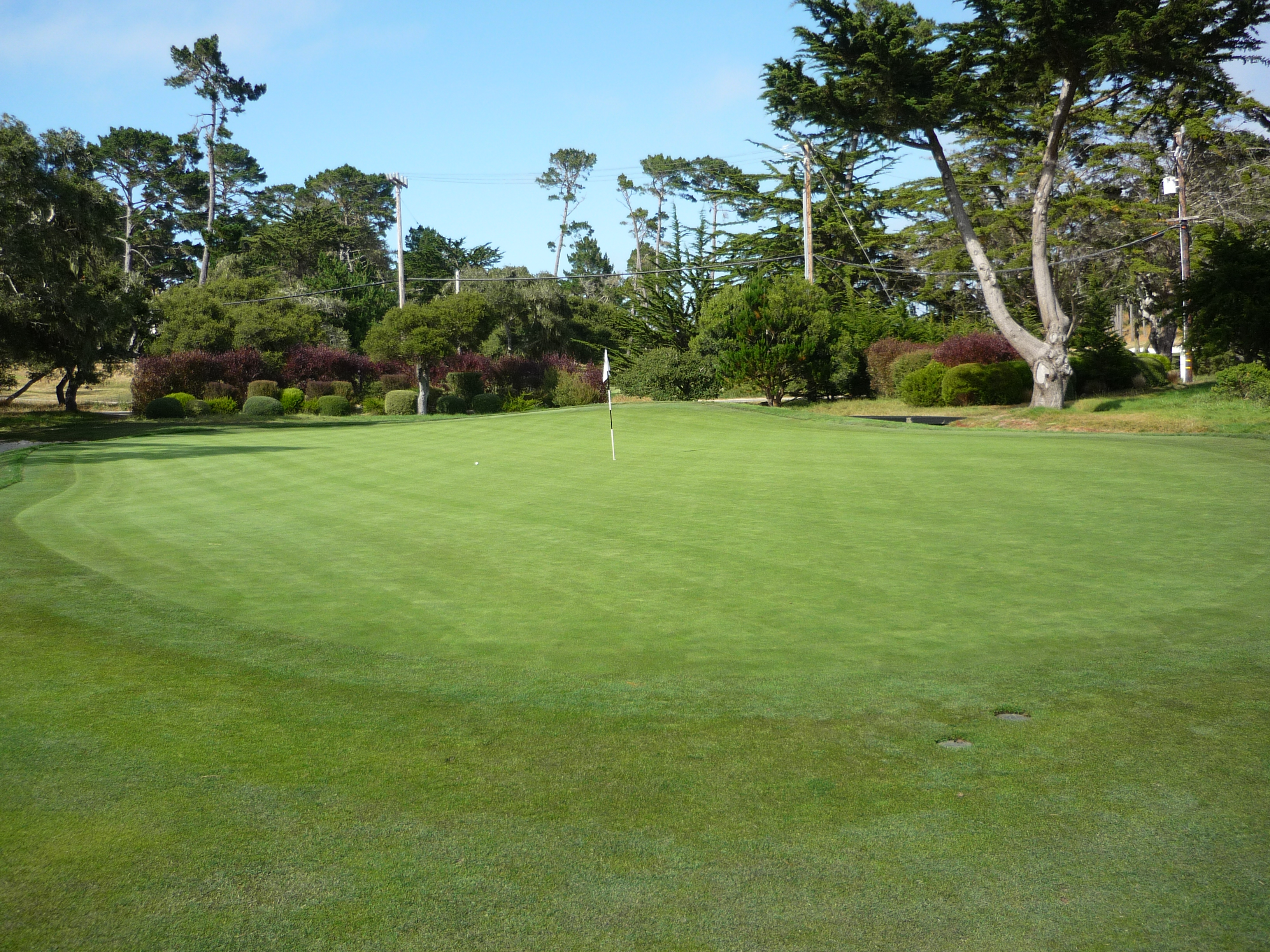
Hole 18 – 369 yards – Par 4
The view here is a good one with the hole bending to the right and going up the hill. There is tree trouble all up the right side. The fairway is more important than length here.
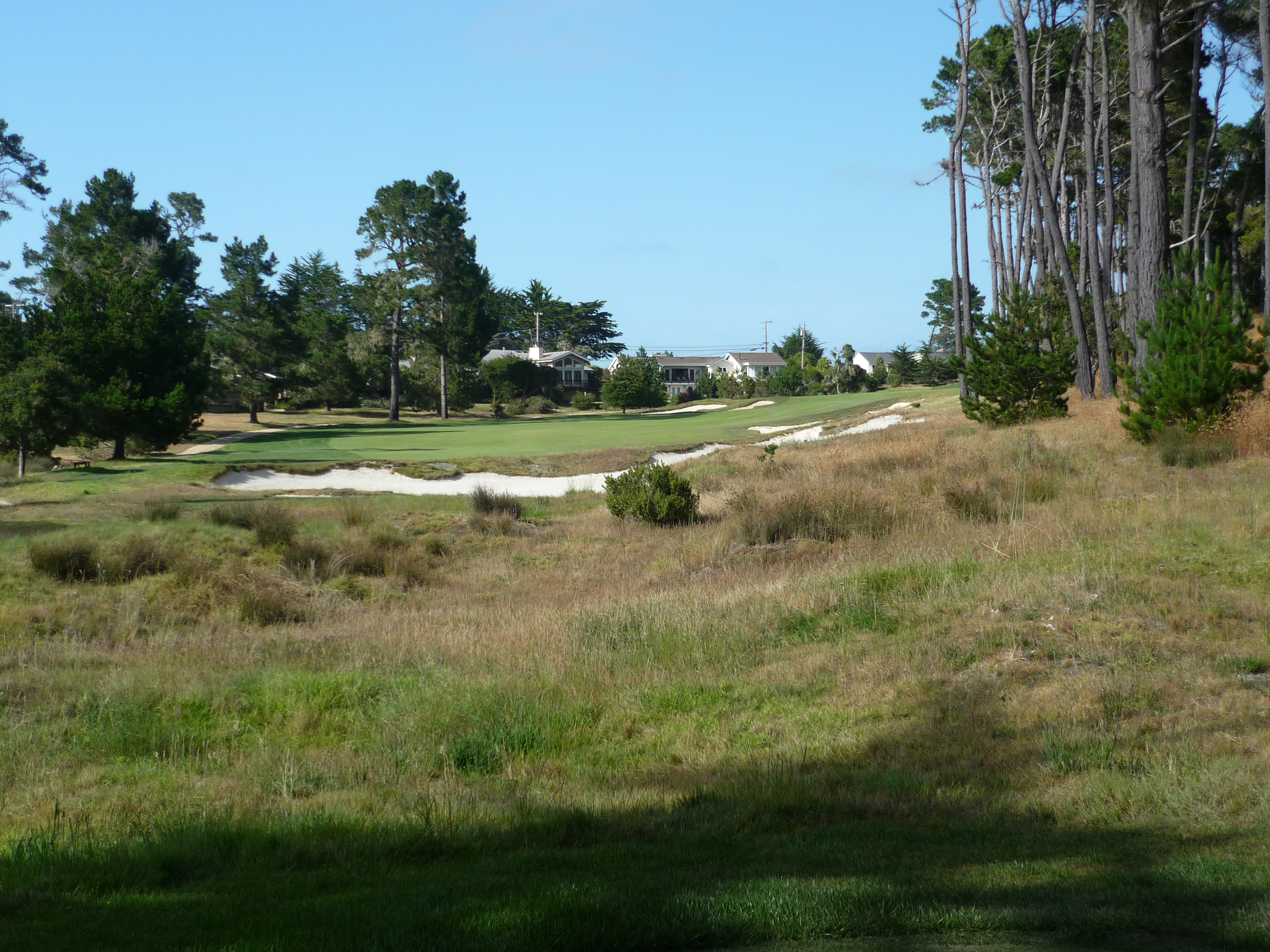
The second shot is all uphill and will most likely require an extra club. Like most of the holes, the hazards are off to the sides instead of in the front.
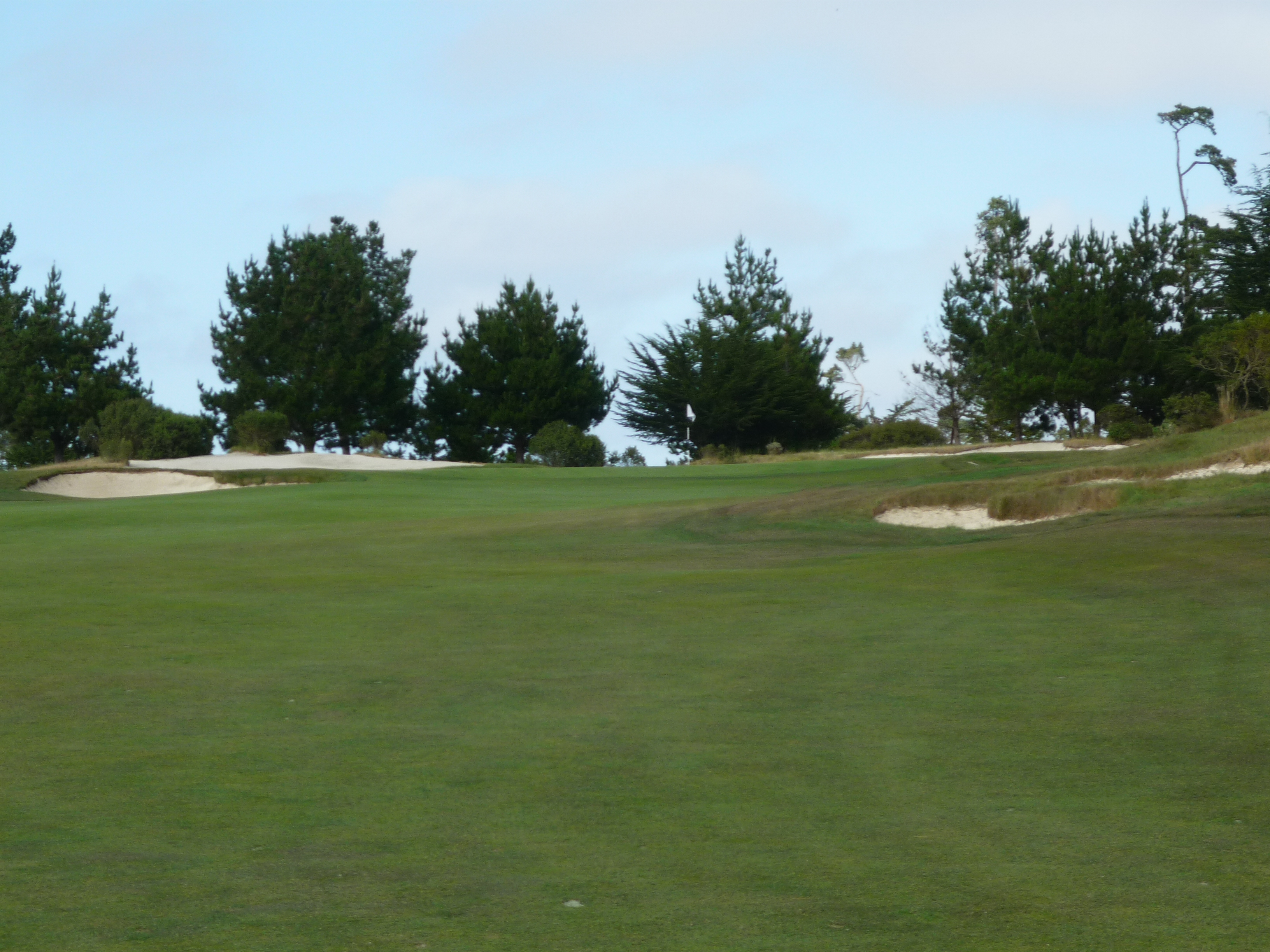
The green has a false front on it as you can see below. Other than that the slope isn’t too much.
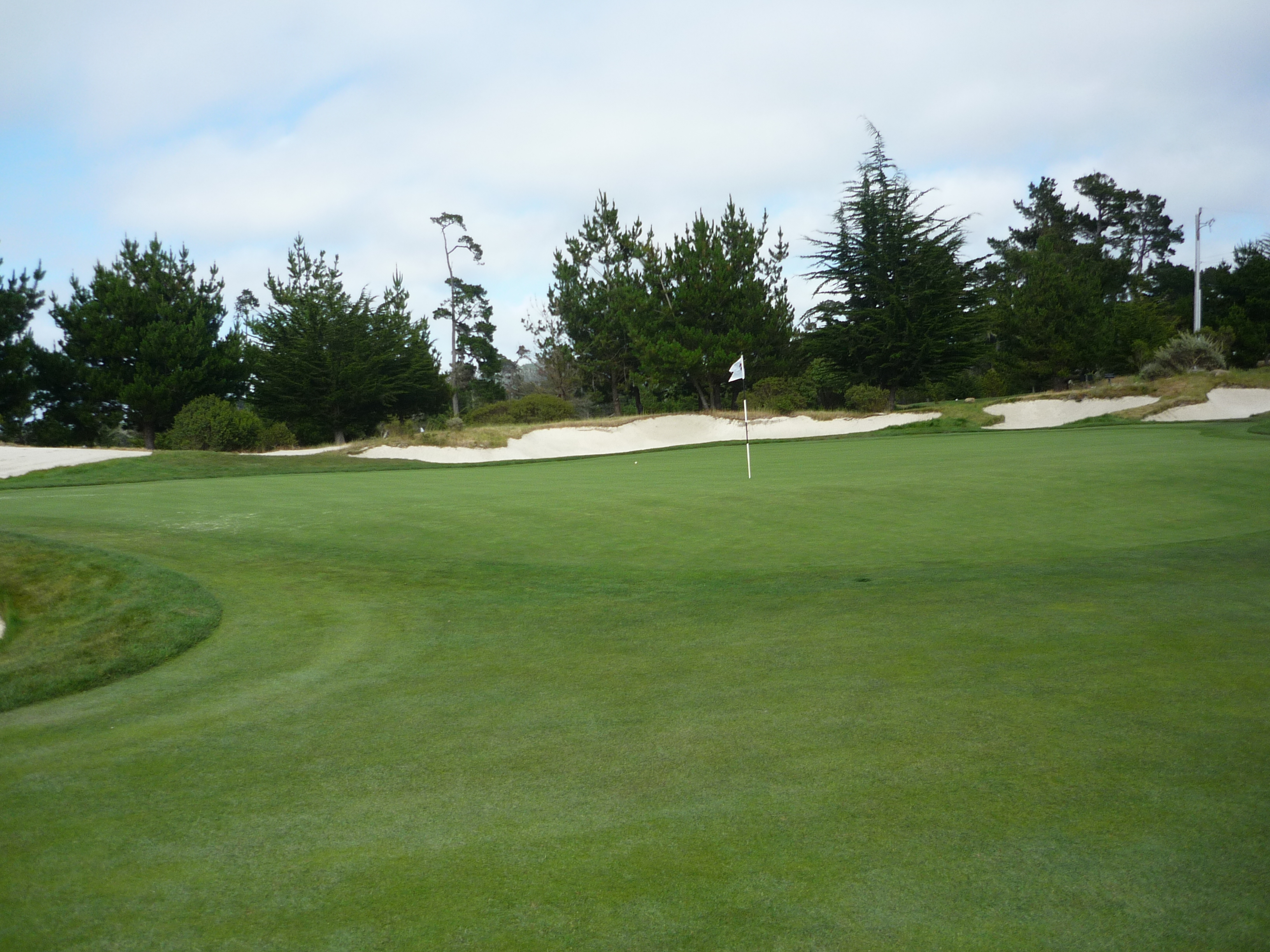
Below you can see the overall slope of the green which is back to front.
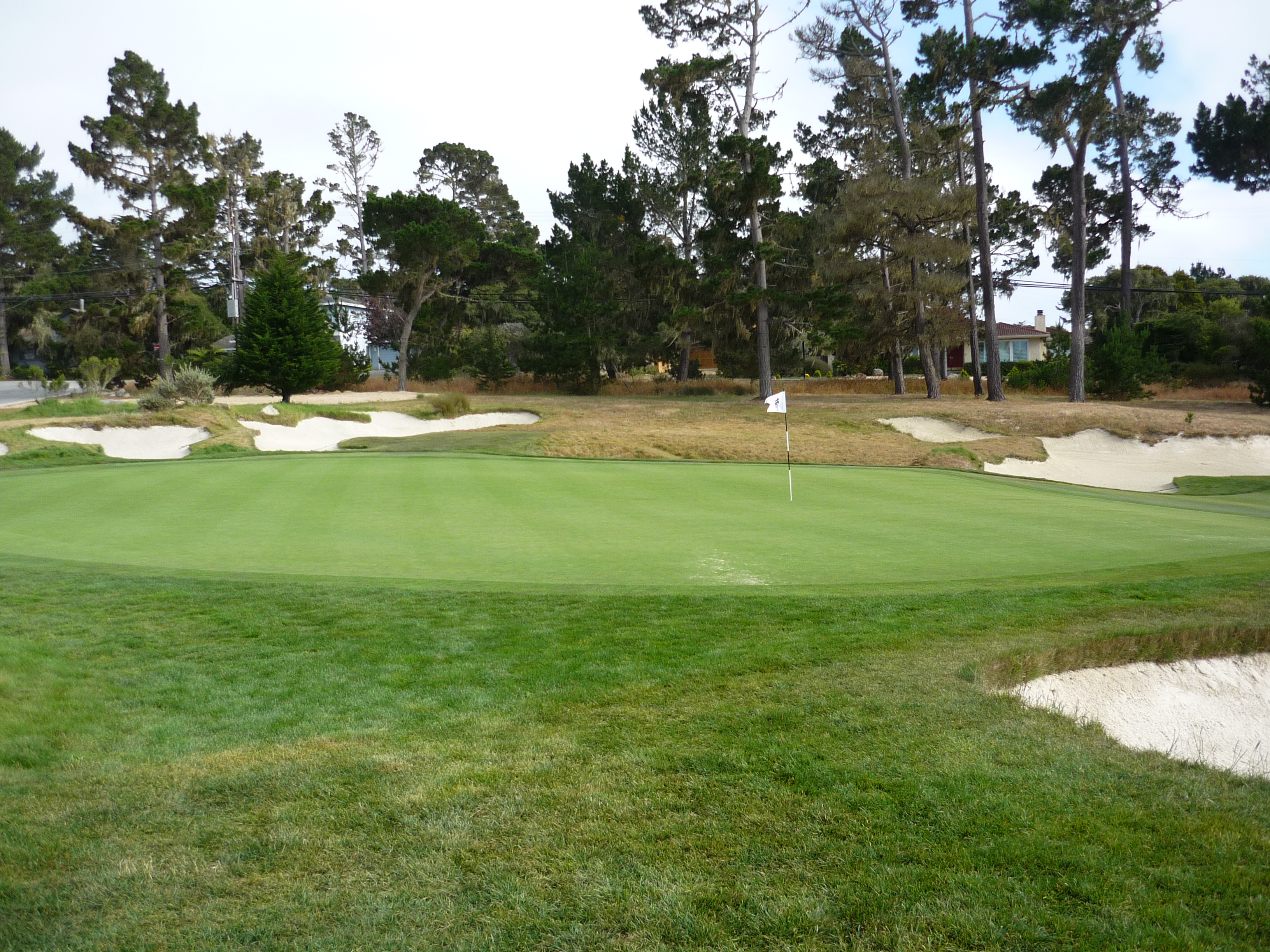
You know me and how I love my clocks. Enjoy below.
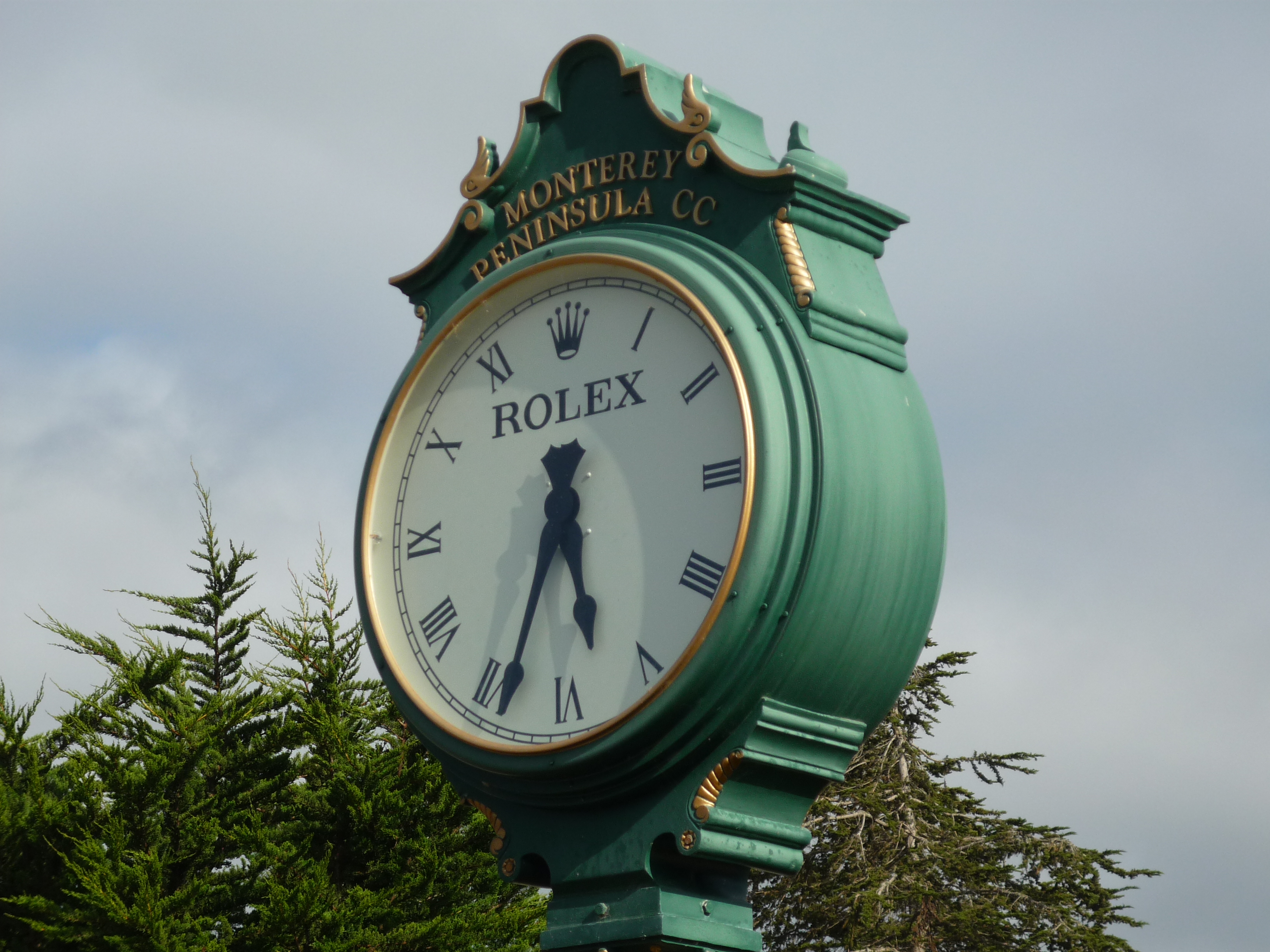
I didn’t always have the most to say on this course, but that doesn’t reflect how I feel about it. I just think the pictures explained a lot of the course and made it an easy story to tell. I love Mike Strantz’s work and this course is no exception. The course was in wonderful shape and I played fast. I loved the experience and would go back in a heartbeat. The Monterey Peninsula is a ridiculously beautiful part of the world and one you should visit if you can.

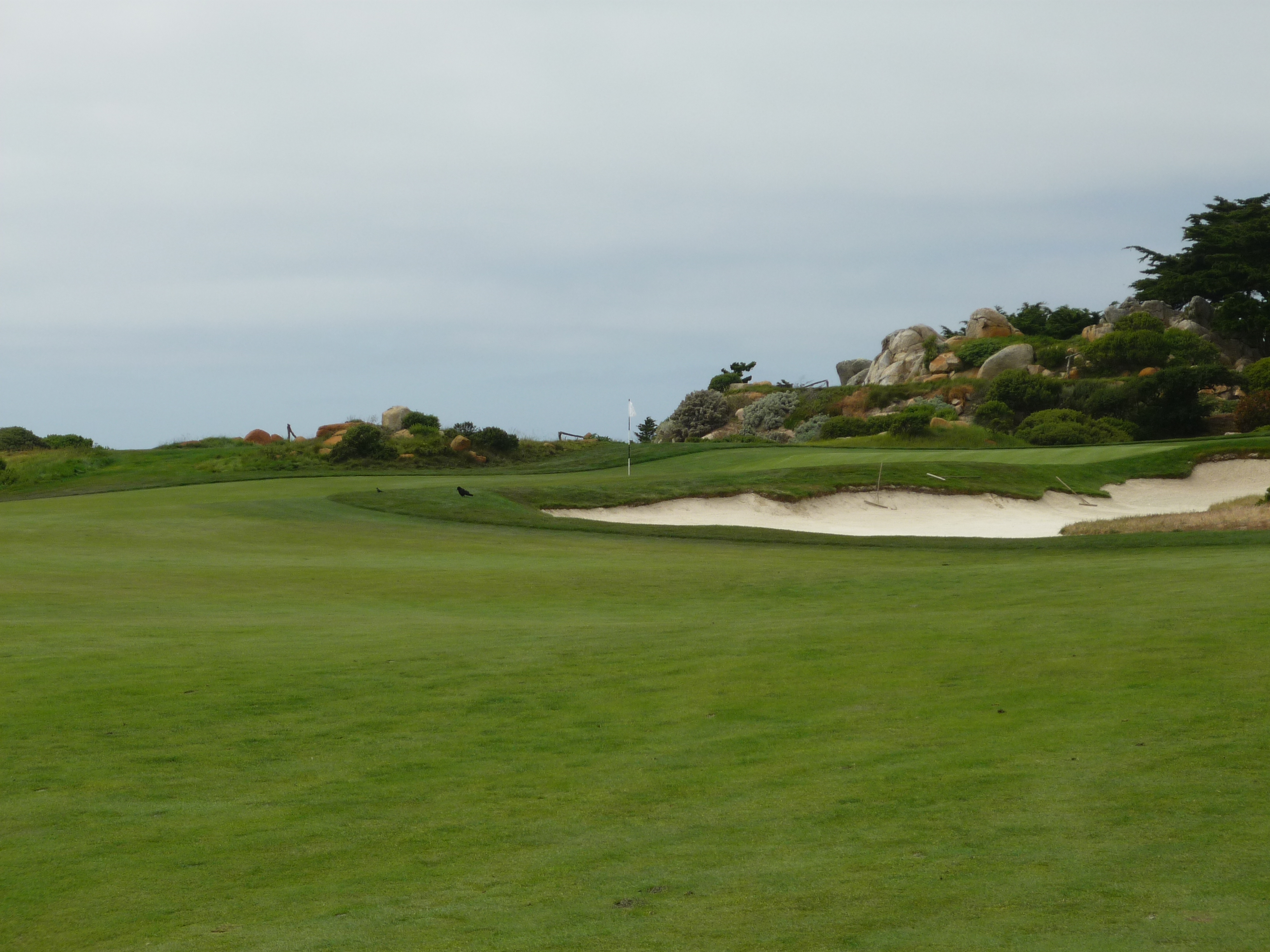
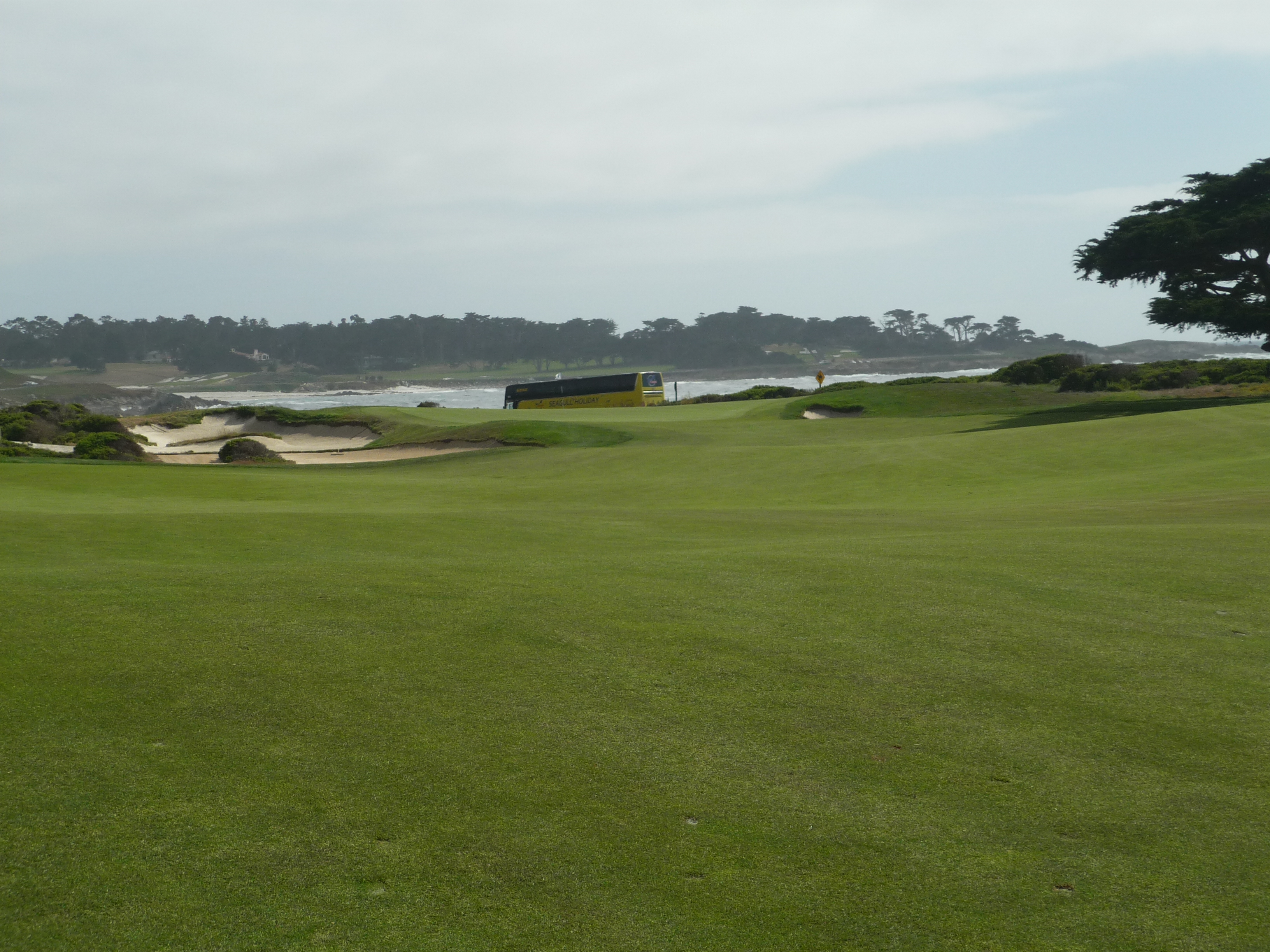
Continuously impressed by the quality of courses you find access to, and I really appreciate all of the visuals that your photos provide. It’s quite a quest you’ve put together. Nice work.
Thank you! It is really all through networking and some tips I have picked up in the process. The real secret weapon though is people’s generosity and for that I am incredibly grateful.
Jimmy,
Pretty jealous about this one. I love the Monterey Peninsula and would kill to play here. Nice write up.
Cheers
Josh
Thanks man! Pretty jealous of that Hawaii trip.